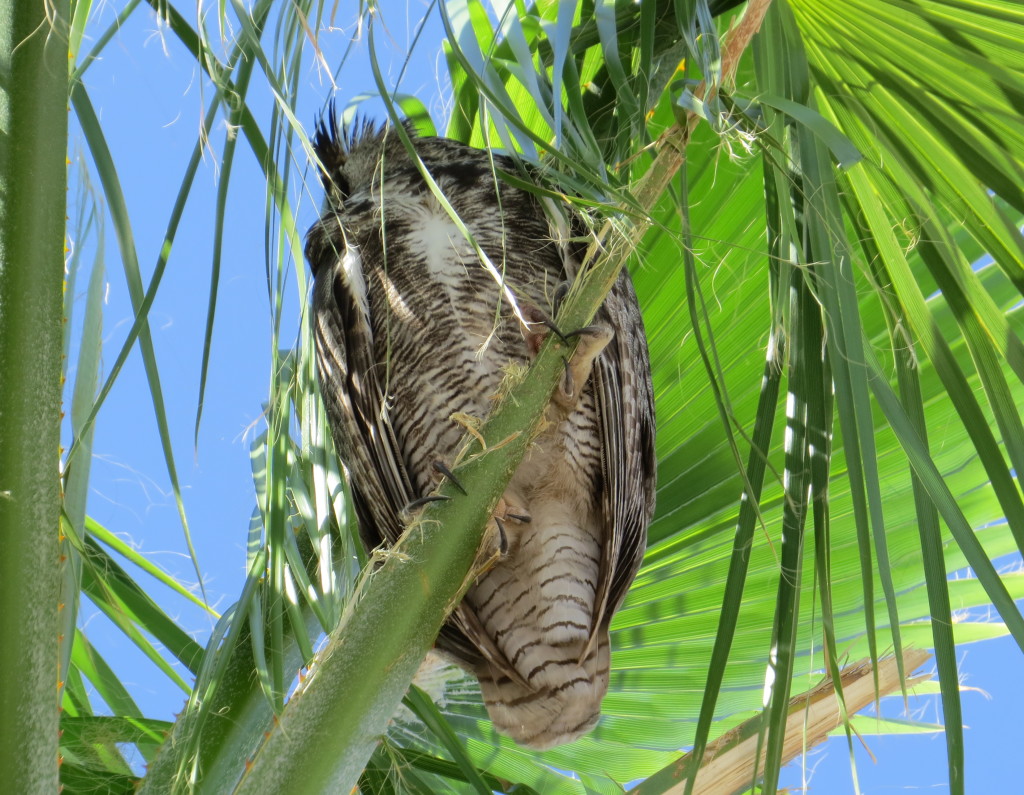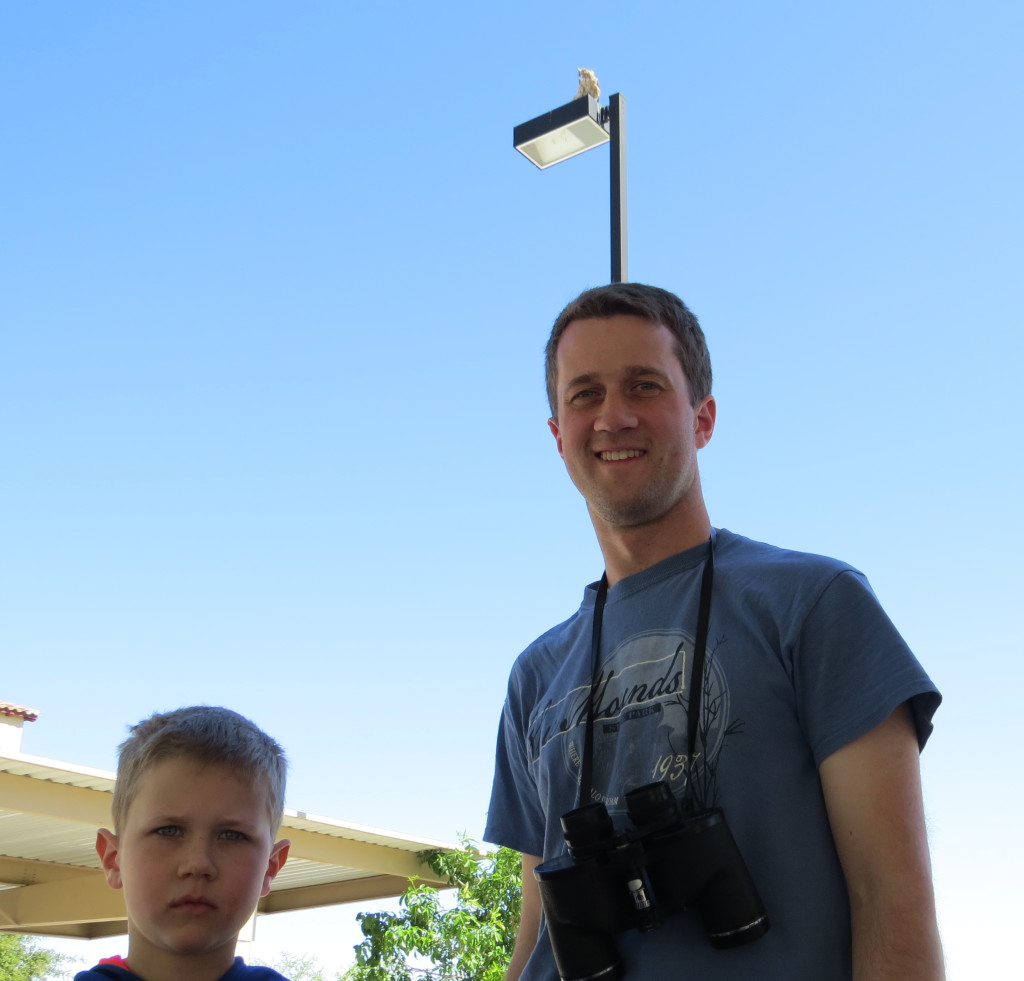Like most Americans, I celebrated the 4th of July weekend with family, doing the typical things like picnicking outside all day, tossing the ball around, and cruising a lake in a boat in search of a good fishing hole. Most people are able to focus on these activities exclusively; birders always have the incidental birding meter running. That’s how you ride in a boat and show your companions a patriotic scene, fitting for the weekend.
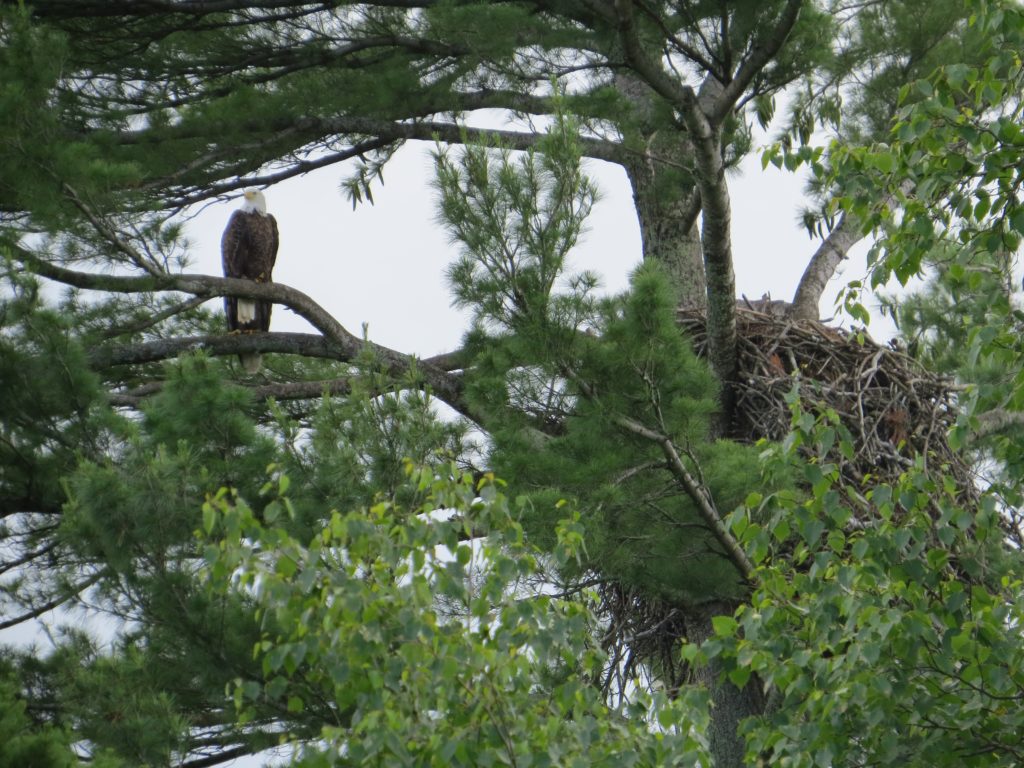 It’s also how you can point out to Grandma during that all-day gathering that the bird that flushes from the house each time someone goes in or out is actually a pretty cool bird and not some lame Robin that none of us can stand to have making a mess on our house.
It’s also how you can point out to Grandma during that all-day gathering that the bird that flushes from the house each time someone goes in or out is actually a pretty cool bird and not some lame Robin that none of us can stand to have making a mess on our house.
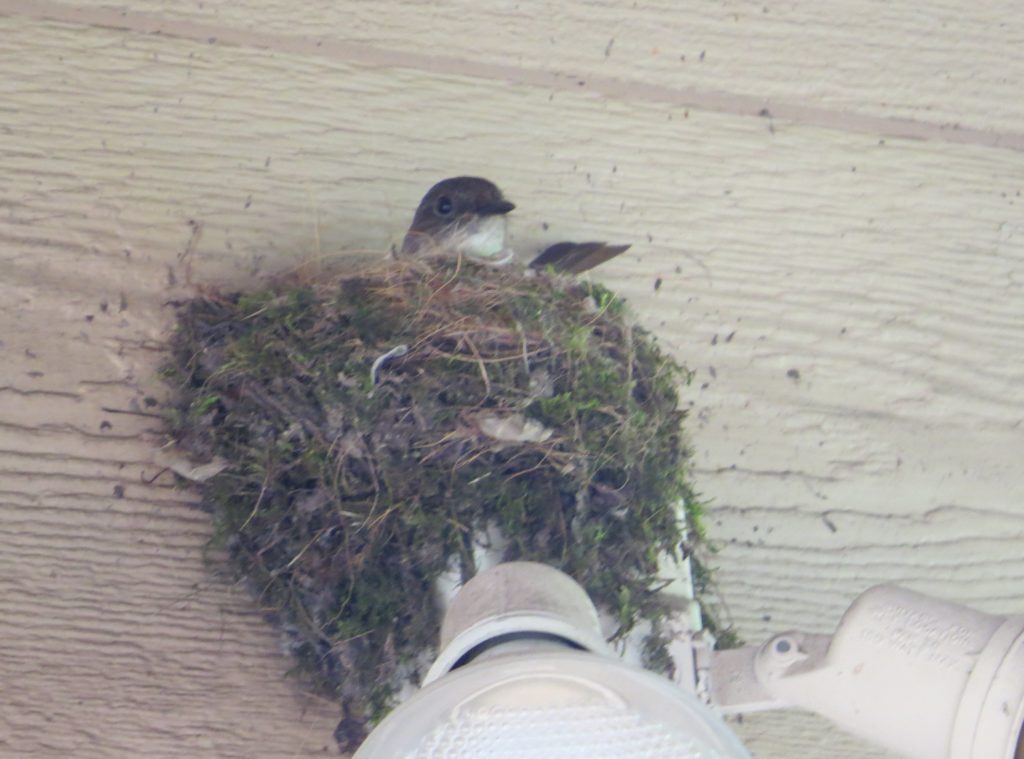 Unlike the Robin, the Eastern Phoebe’s nest is quite aesthetically pleasing and well-constructed.
Unlike the Robin, the Eastern Phoebe’s nest is quite aesthetically pleasing and well-constructed.
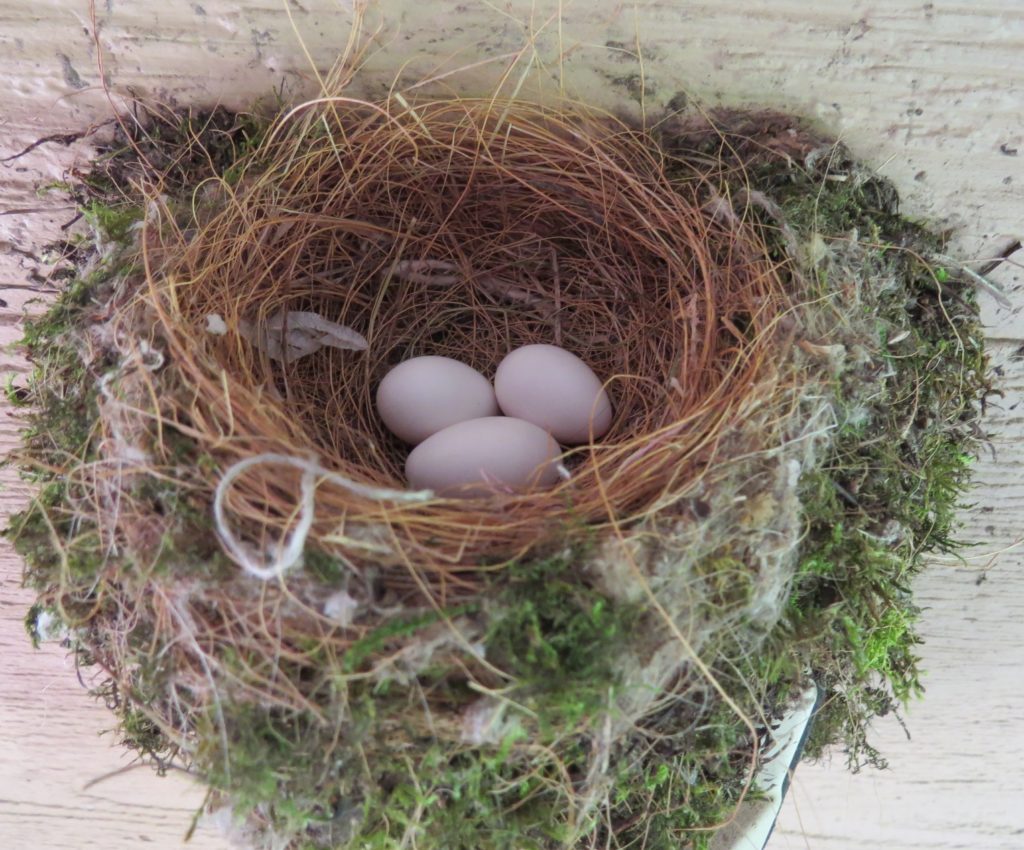 I almost passed on the opportunity to get crushing photos of the most accommodating Eastern Phoebe I’ve ever seen. That would have been a shame.
I almost passed on the opportunity to get crushing photos of the most accommodating Eastern Phoebe I’ve ever seen. That would have been a shame.
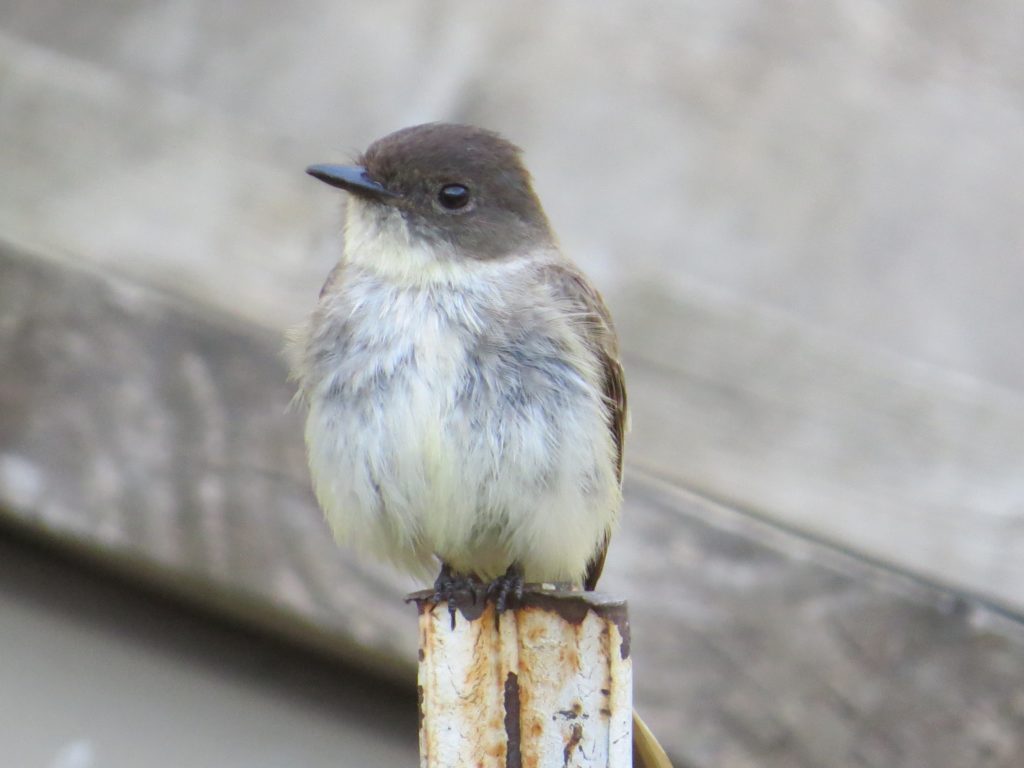
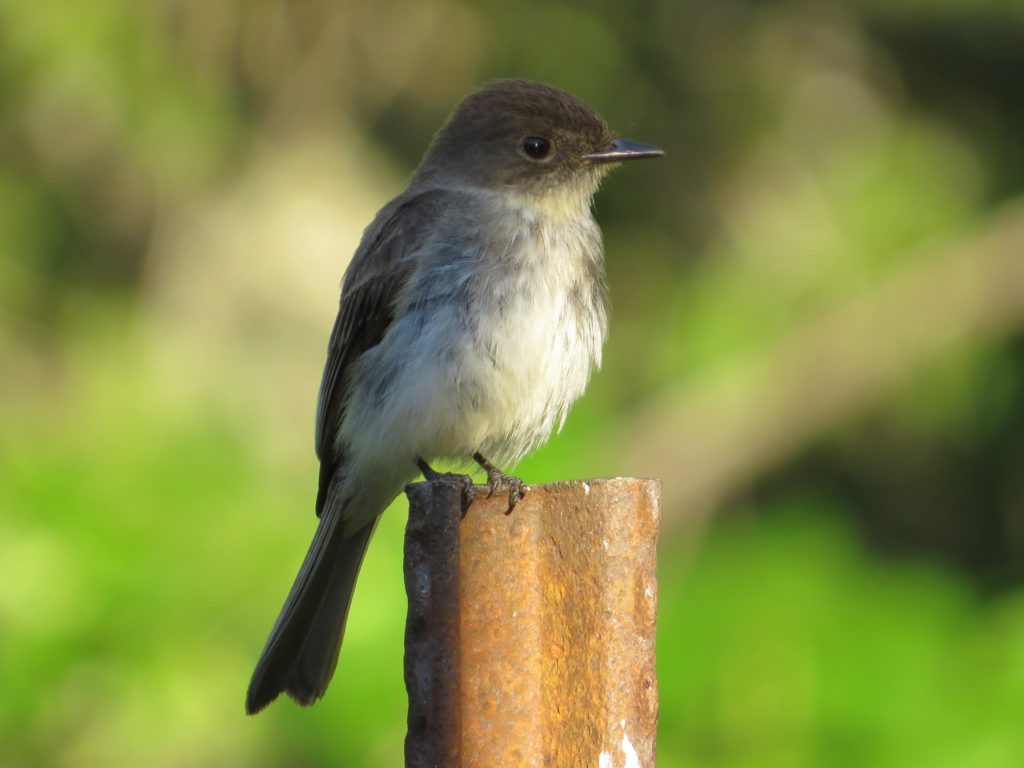 But don’t let me fool you, it wasn’t all incidental birding. I was in northern Minnesota, after all, a land ripe with fascinating birds in all seasons. Local birding friend, Julie, had told me about a Connecticut Warbler she had recently found in a Black Spruce/Tamarack bog not more than 20 minutes from my parents’ house. The Connecticut was a bird I had previously only had as heard-only in the Sax-Zim Bog, so I rose early one morning donning some knee-high rubber boots, long sleeves, long pants, and an unhealthy dousing of bug spray. I was going all in to mosquito central. No sane person does this.
But don’t let me fool you, it wasn’t all incidental birding. I was in northern Minnesota, after all, a land ripe with fascinating birds in all seasons. Local birding friend, Julie, had told me about a Connecticut Warbler she had recently found in a Black Spruce/Tamarack bog not more than 20 minutes from my parents’ house. The Connecticut was a bird I had previously only had as heard-only in the Sax-Zim Bog, so I rose early one morning donning some knee-high rubber boots, long sleeves, long pants, and an unhealthy dousing of bug spray. I was going all in to mosquito central. No sane person does this.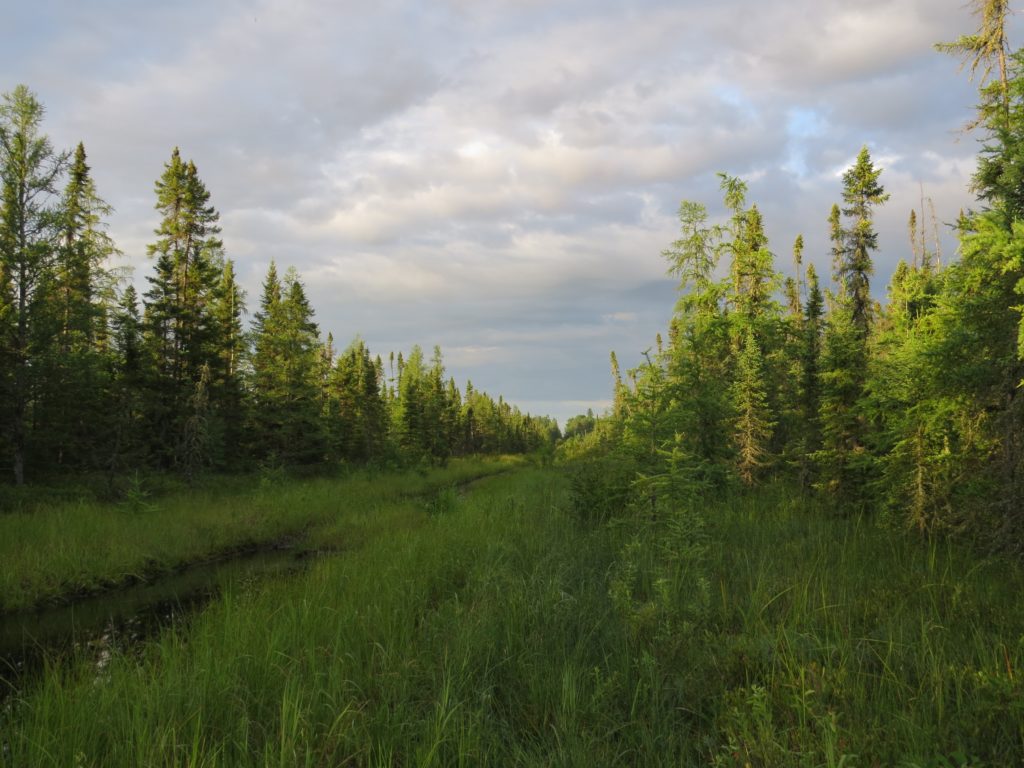 But we die-hard birders do, especially when we think of the possible reward of visuals of a skulker like the Connecticut. It’s worth some welts and the loss of a little sleep. Julie had made things easy for me by marking a tree where the Connecticut had set up a territory along this abandoned, water-logged road pictured above. However, as we are getting into July, the Warblers just don’t sing as much. When I got to the spot after hiking a quarter mile, I didn’t hear it. But patience eventually rewarded me with that clear, ringing sound of the Connecticut: “Bea-cher, bea-cher, bea-cherbeach!” After waiting it out a little longer, I did get some great up-close looks, but I wasn’t quick enough to get a photo. Seeing one was a good improvement on my heard-only lifer, but I really wanted that photo. Maybe this Warbler was busy with a nest because it never did show itself again despite me waiting for an insane amount of time in the cloud of mosquitoes. I finally decided to call it quits and head back to rejoin the family. A heard-only Boreal Chickadee and a Lincoln’s Sparrow were a couple of good birds on the hike out.
But we die-hard birders do, especially when we think of the possible reward of visuals of a skulker like the Connecticut. It’s worth some welts and the loss of a little sleep. Julie had made things easy for me by marking a tree where the Connecticut had set up a territory along this abandoned, water-logged road pictured above. However, as we are getting into July, the Warblers just don’t sing as much. When I got to the spot after hiking a quarter mile, I didn’t hear it. But patience eventually rewarded me with that clear, ringing sound of the Connecticut: “Bea-cher, bea-cher, bea-cherbeach!” After waiting it out a little longer, I did get some great up-close looks, but I wasn’t quick enough to get a photo. Seeing one was a good improvement on my heard-only lifer, but I really wanted that photo. Maybe this Warbler was busy with a nest because it never did show itself again despite me waiting for an insane amount of time in the cloud of mosquitoes. I finally decided to call it quits and head back to rejoin the family. A heard-only Boreal Chickadee and a Lincoln’s Sparrow were a couple of good birds on the hike out.
The next day on our final morning in the northwoods, I decided to give Julie’s spot one more try. That Connecticut photo seemed in reach; like with the Phoebe, it would be foolish to pass on the opportunity to try. Thanks to a late night fireworks show, I was a little slower getting out of bed that next morning. In fact, I arrived at the trail a full 40 minutes later than the day before. Considering I had heard the bird right away that day and that it was singing sporadically, I didn’t like my chances for a repeat on the visual I got. When I got there and opened the car door, though, I didn’t hear the Connecticut but instead heard something just as cool–the unmistakable drumming of a Black-backed Woodpecker! And like that my search priorities shifted. I followed the sound of the steady drumming which echoed through the bog. And there, there he was just 10 feet off the waterlogged road about 10 feet up. I was blown away.
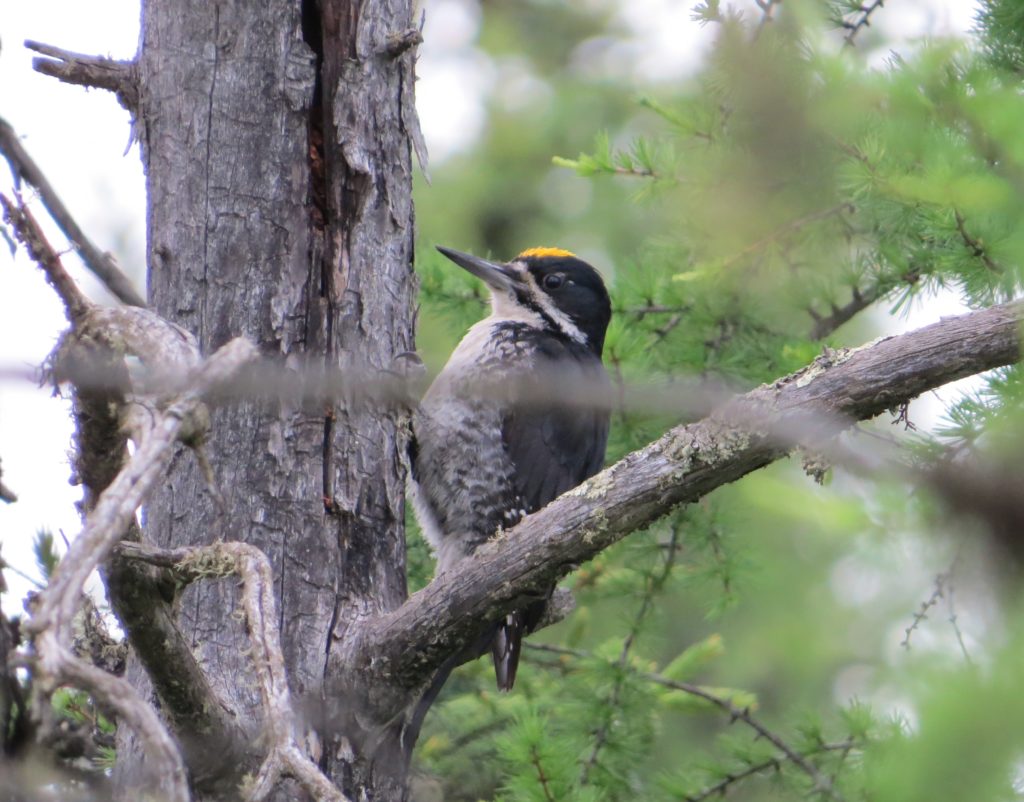
The Black-backed was not a lifer, but I have never seen a male before with his bright yellow crown and have always wanted to. In a sense this felt just as fresh as a lifer. So I set out to accomplish one goal (photo of the COWA) and inadvertently and delightfully accomplished another.
I spent a lot of time enjoying this Woodpecker all while keeping an ear open for the Connecticut which did not vocalize even once. 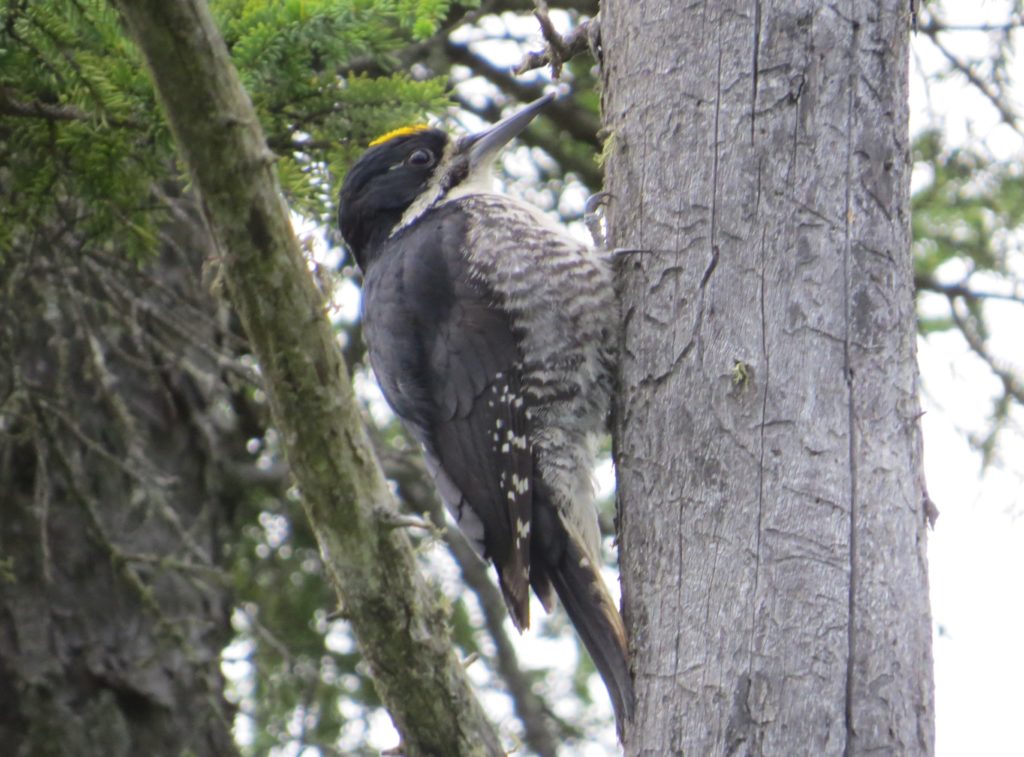 Here you can see and hear that distinctive drumming. It’s such a cool sound.
Here you can see and hear that distinctive drumming. It’s such a cool sound.
I’ve heard that Black-backed Woodpeckers are quite tame and don’t really care about a person’s presence. This experience certainly seemed to back that theory up. And if you have doubts about whether this bird was appropriately named…
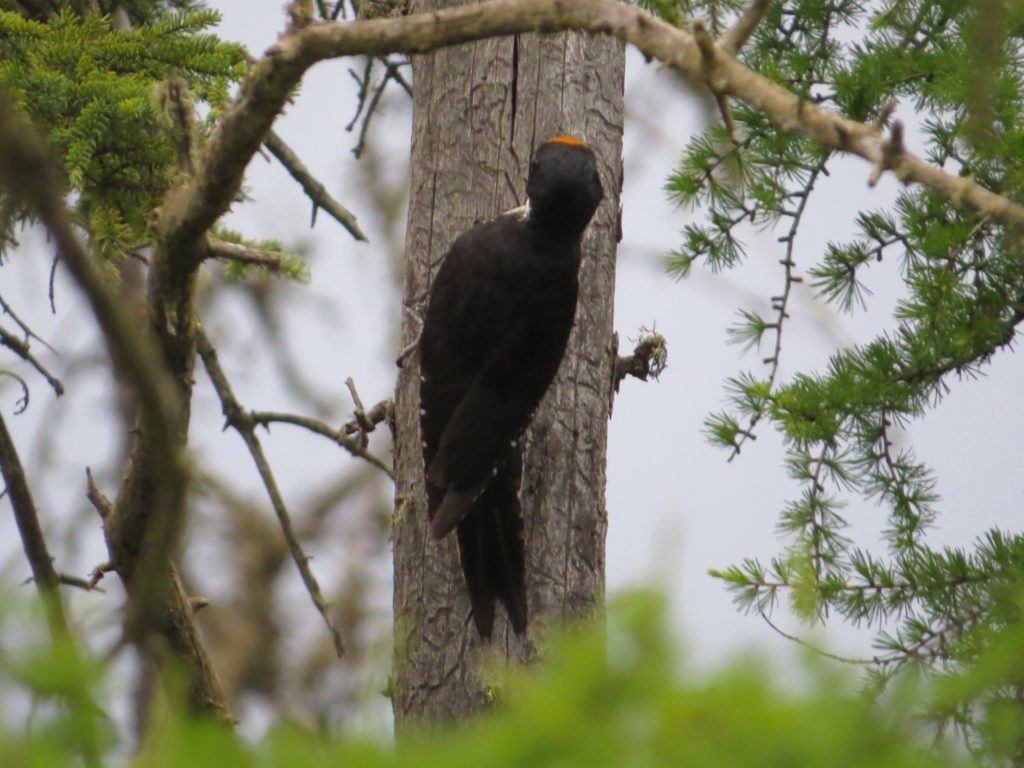
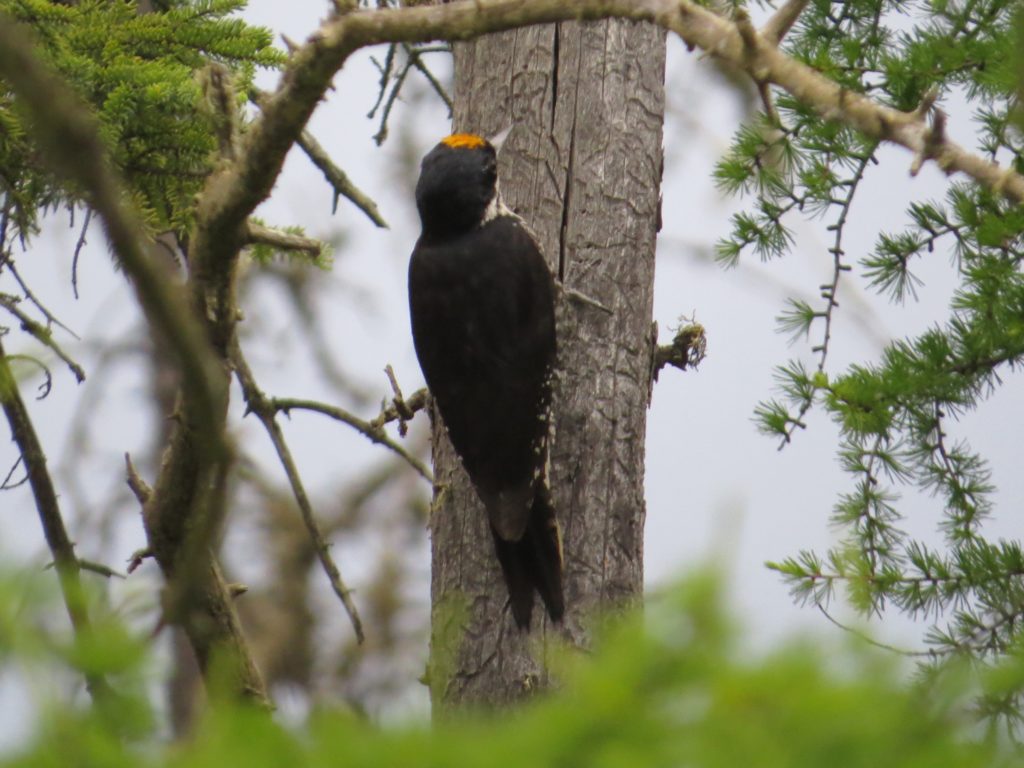
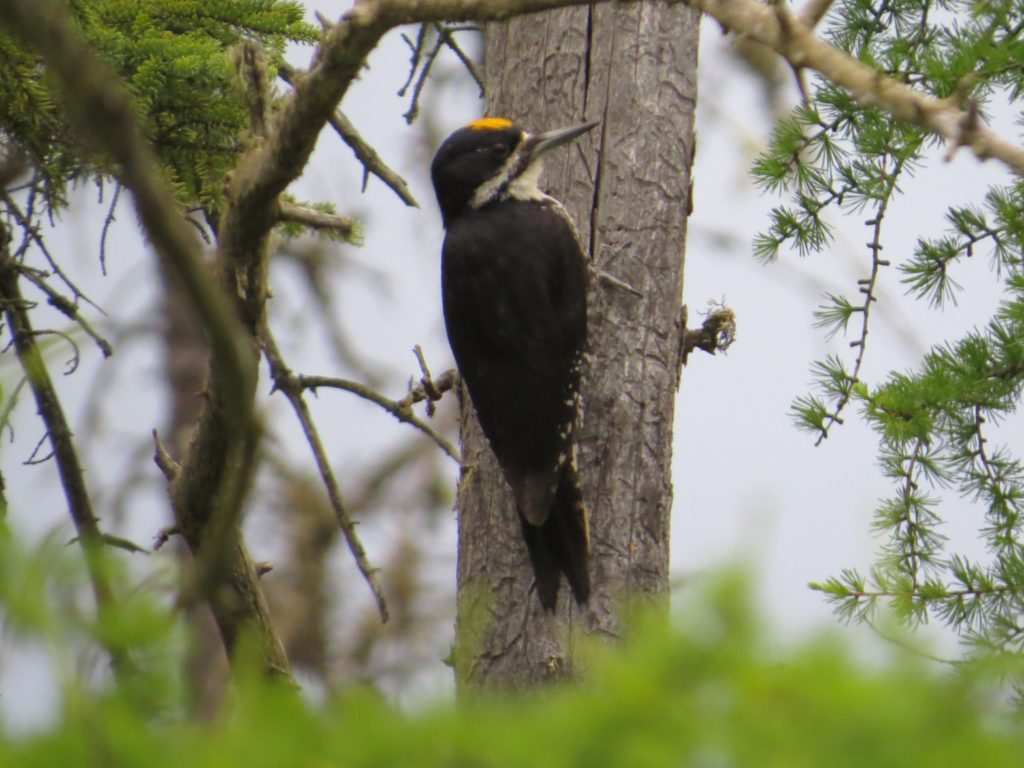
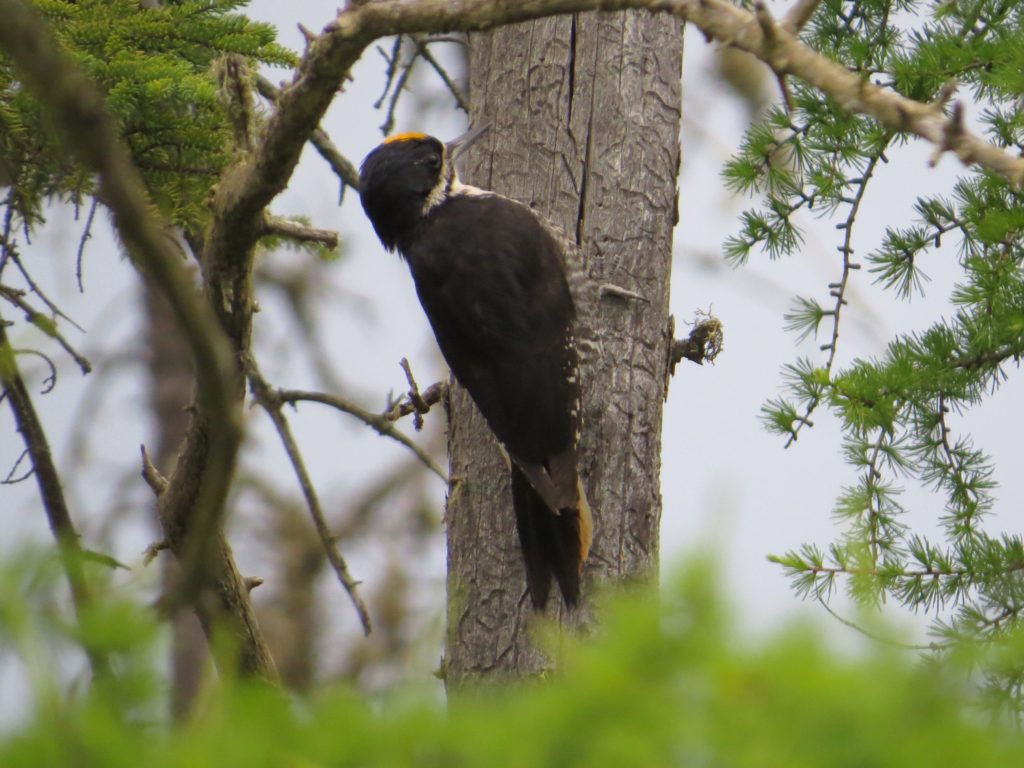
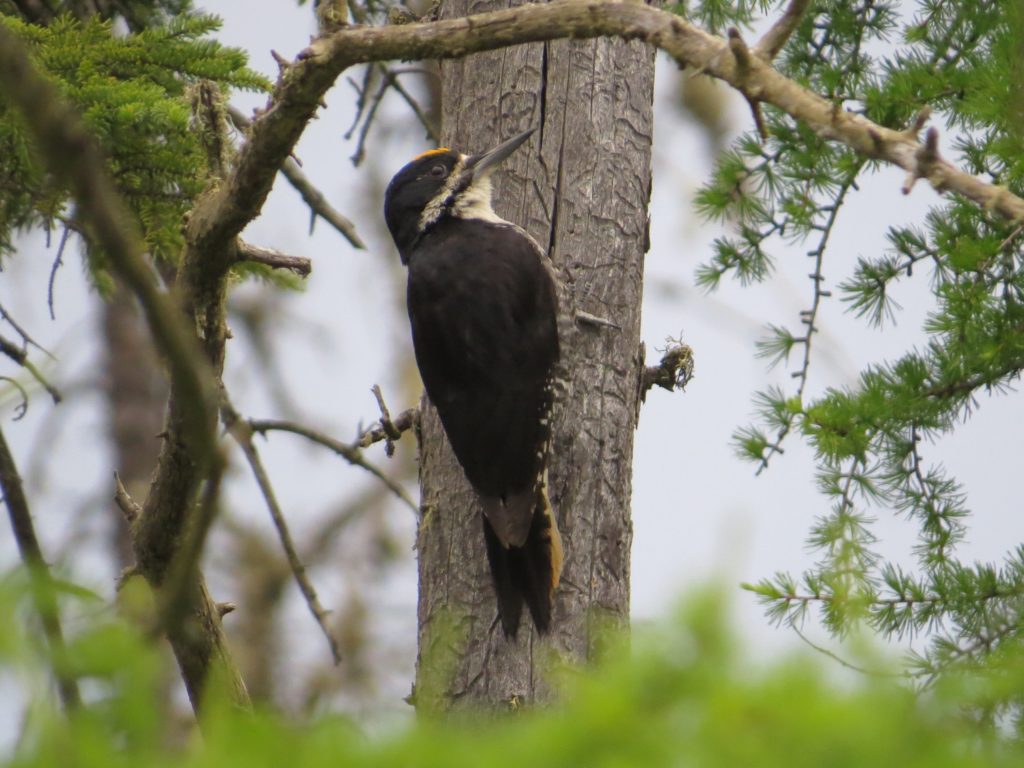 Here’s another video. I was hoping to capture him drumming some more, but instead caught him itching himself. Mosquito bite?
Here’s another video. I was hoping to capture him drumming some more, but instead caught him itching himself. Mosquito bite?
Eventually the bird went on its way, and so did I, trying to dig up that Connecticut. I finally called it quits on the Warbler, vowing to try again next year when it was earlier in the breeding season and the birds’ hormones are still raging causing them to be more vocal. On my way back to the car I again spotted the Black-backed Woodpecker, but I noticed something different–no yellow crown, a female!
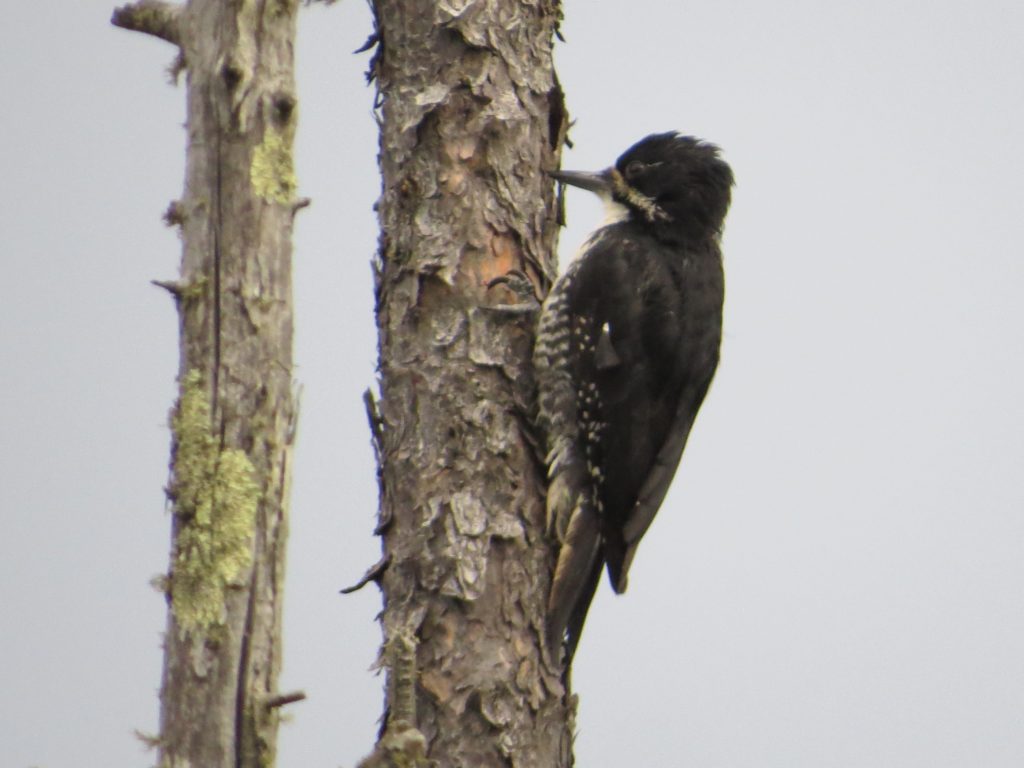 Thrilled with the bonus Woodpecker, I continued my waterlogged hike back to the car. Then I again heard a Black-backed Woodpecker a couple hundred yards from the first two, and then I saw one of them following the other around. I thought they must be those two that I saw earlier. I glassed the two birds as one followed the other up a Spruce and was shocked to see that both were males–an adult being followed by this juvenile!
Thrilled with the bonus Woodpecker, I continued my waterlogged hike back to the car. Then I again heard a Black-backed Woodpecker a couple hundred yards from the first two, and then I saw one of them following the other around. I thought they must be those two that I saw earlier. I glassed the two birds as one followed the other up a Spruce and was shocked to see that both were males–an adult being followed by this juvenile!
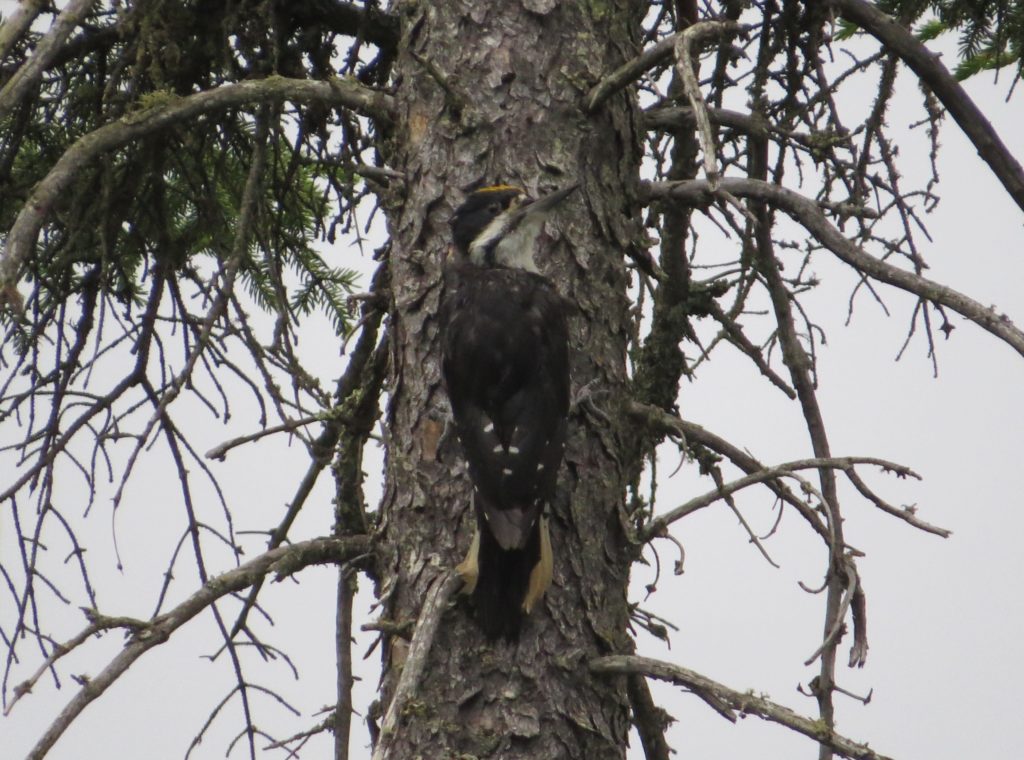
This meant I had for sure seen three different Black-backed Woodpeckers and maybe four if the second adult male was a different bird than the first. It’s not everyday you see a Black-backed Woodpecker, let alone a small pile of them. Additionally, seeing a good northern bird like this outside of a birding mecca like the Sax-Zim Bog and close to “home” is always a huge thrill for me. This encounter did not go unappreciated by me and will likely be one of my all-time birding highlights.

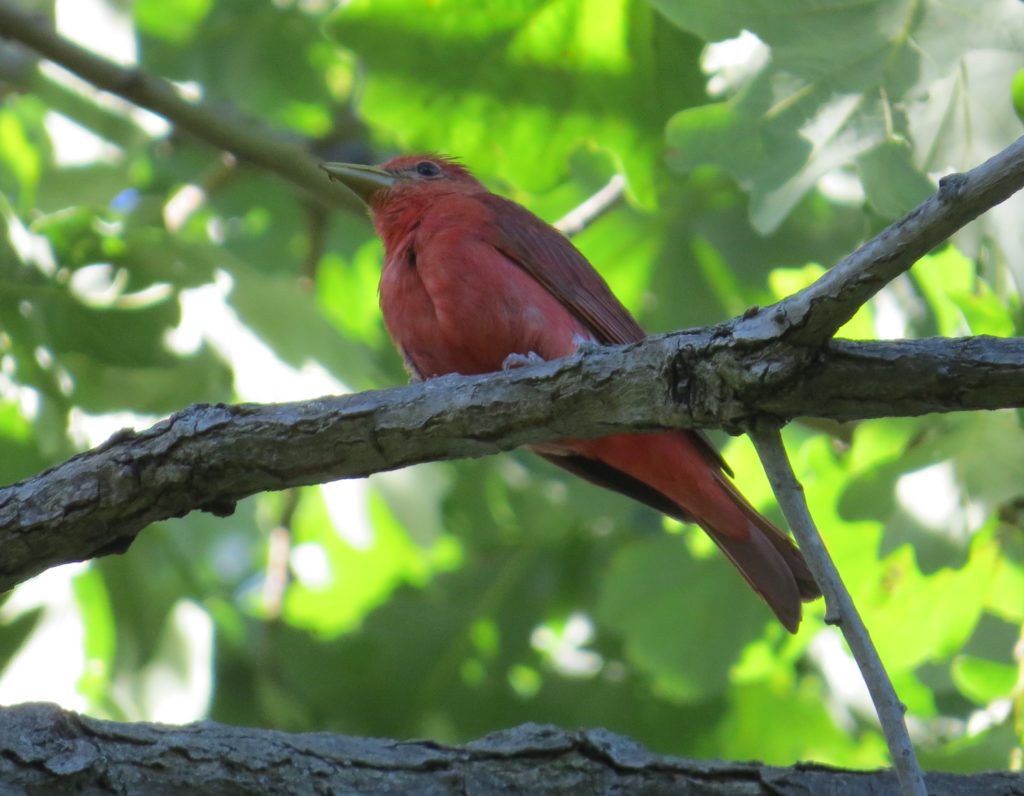 One of the most popular birds in Minnesota this summer has been the Summer Tanager discovered by Wilmer Fernandez at the University of Minnesota’s Landscape Arboretum in Chanhassen. Summer Tanager is rare-regular in the state, but the fact that this bachelor bird was in the Twin Cities and singing endlessly on territory made it all the rage for the better part of a week. Not even the Arboretum’s steep per person entry fee could keep birders away, including yours truly.
One of the most popular birds in Minnesota this summer has been the Summer Tanager discovered by Wilmer Fernandez at the University of Minnesota’s Landscape Arboretum in Chanhassen. Summer Tanager is rare-regular in the state, but the fact that this bachelor bird was in the Twin Cities and singing endlessly on territory made it all the rage for the better part of a week. Not even the Arboretum’s steep per person entry fee could keep birders away, including yours truly.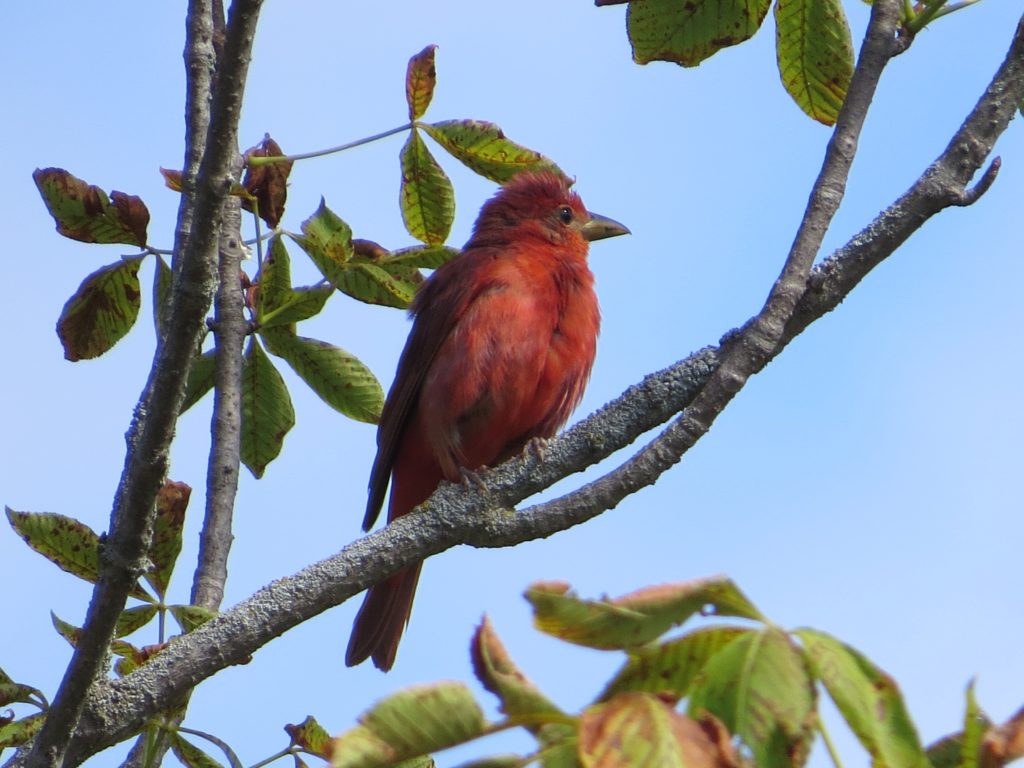 If you’ve been following ABWCH this past spring, you may recall that I already made a Summer Tanager chase to get my lifer. So why did I go after another if I’m not a county lister? Two reasons: this bird was solid red, unlike that tye-died creature I saw earlier this year, and this bird was singing on territory. I wanted the full SUTA experience. That quick migrant sighting didn’t fill the void. Plus this bird was relatively close to home, and I had the time off.
If you’ve been following ABWCH this past spring, you may recall that I already made a Summer Tanager chase to get my lifer. So why did I go after another if I’m not a county lister? Two reasons: this bird was solid red, unlike that tye-died creature I saw earlier this year, and this bird was singing on territory. I wanted the full SUTA experience. That quick migrant sighting didn’t fill the void. Plus this bird was relatively close to home, and I had the time off.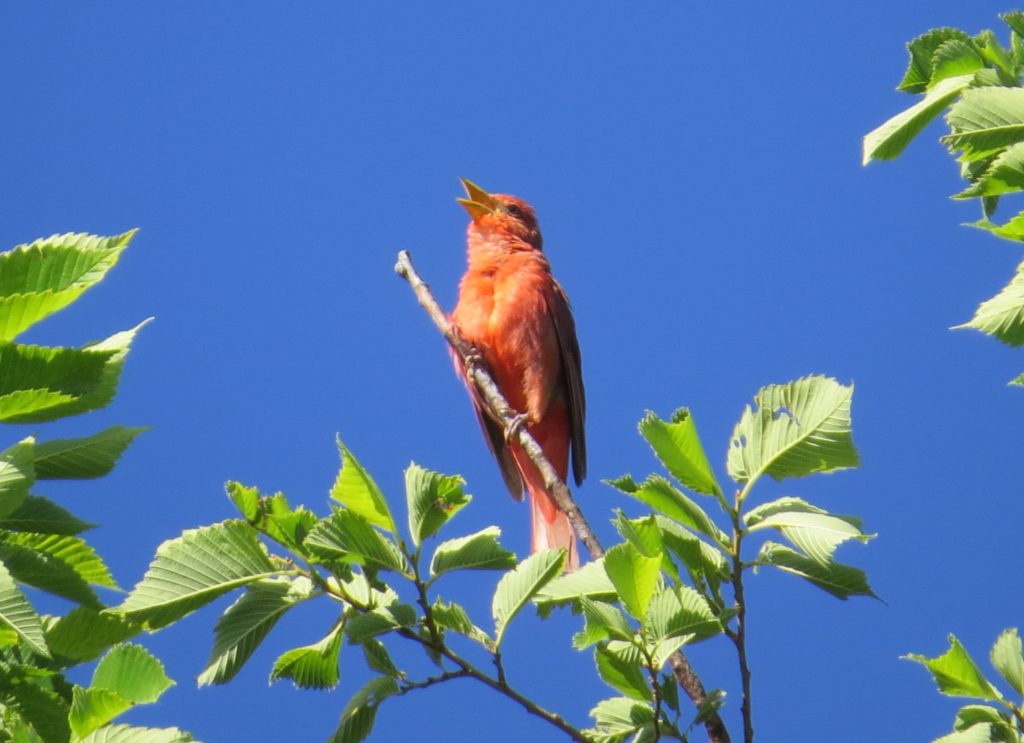 A couple of others who had the time off were teaching colleagues Brad Nelson and Theresa Nelson. The mother-son Nelson duo joined me on this little excursion. Our semi-annual birding get-togethers are always productive and fun–the last time the three of us met up was over a Snowy Owl near one of the towns in our district. Just like we had no problem getting that Owl, seeing this Tanager was a piece of cake. We could hear it singing immediately once we got out of the car at the nut trees section of the Arboretum where it apparently has set up shop for the season. We spent the better part of an hour following it around as it sang endlessly from its various perches, not even stopping its song while it feasted on insects:
A couple of others who had the time off were teaching colleagues Brad Nelson and Theresa Nelson. The mother-son Nelson duo joined me on this little excursion. Our semi-annual birding get-togethers are always productive and fun–the last time the three of us met up was over a Snowy Owl near one of the towns in our district. Just like we had no problem getting that Owl, seeing this Tanager was a piece of cake. We could hear it singing immediately once we got out of the car at the nut trees section of the Arboretum where it apparently has set up shop for the season. We spent the better part of an hour following it around as it sang endlessly from its various perches, not even stopping its song while it feasted on insects: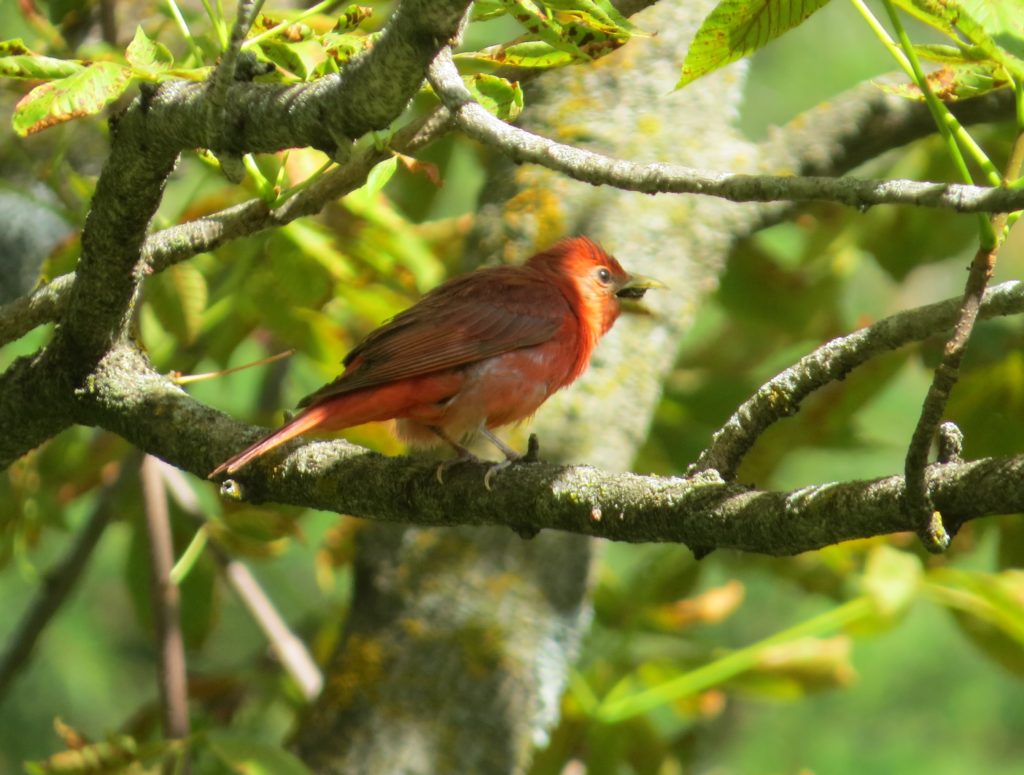
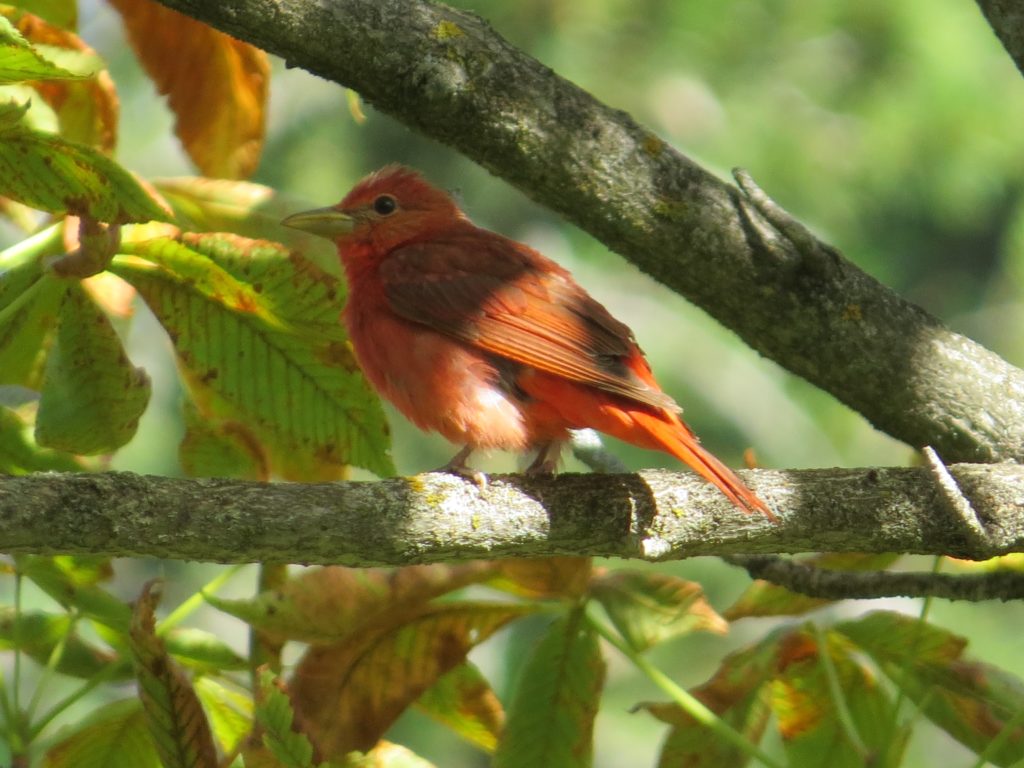 It’s been the year of the Tanager here in MN. To close out this post, here’s a pic of each of the two rare-regular Tanagers and a brand new Scarlet Tanager all seen in state this year. Sorry for turning the Scarlet into a trash bird on this blog. No, I’m not–they are still an exciting bird and this post celebrates all things Tanager.
It’s been the year of the Tanager here in MN. To close out this post, here’s a pic of each of the two rare-regular Tanagers and a brand new Scarlet Tanager all seen in state this year. Sorry for turning the Scarlet into a trash bird on this blog. No, I’m not–they are still an exciting bird and this post celebrates all things Tanager.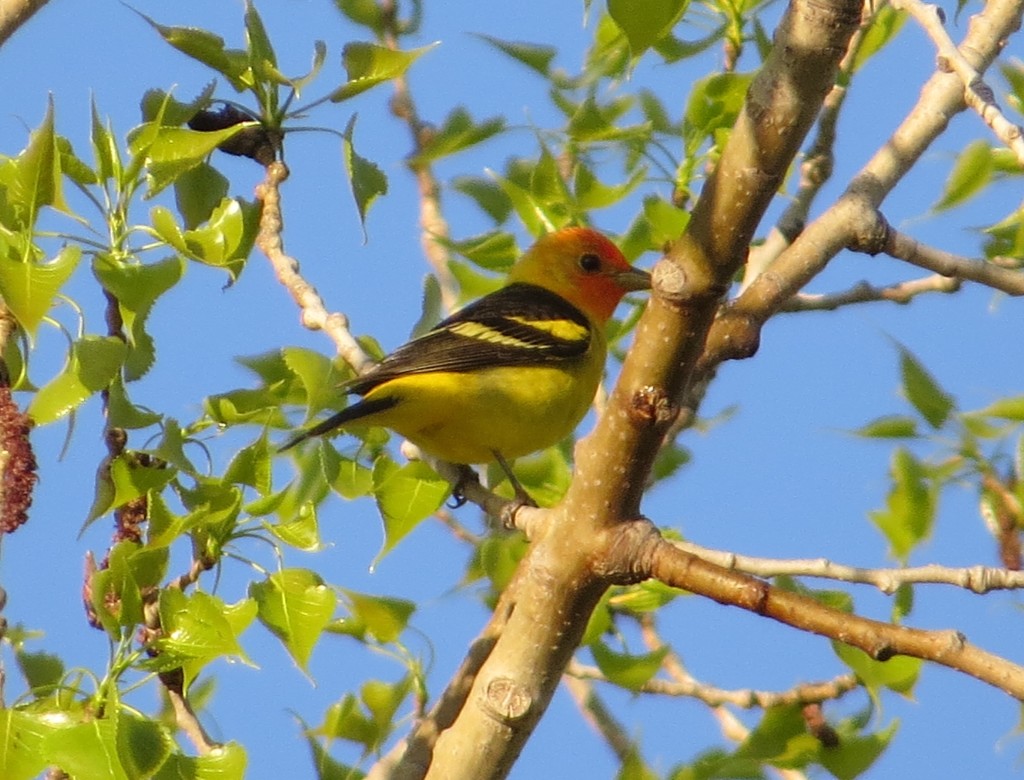
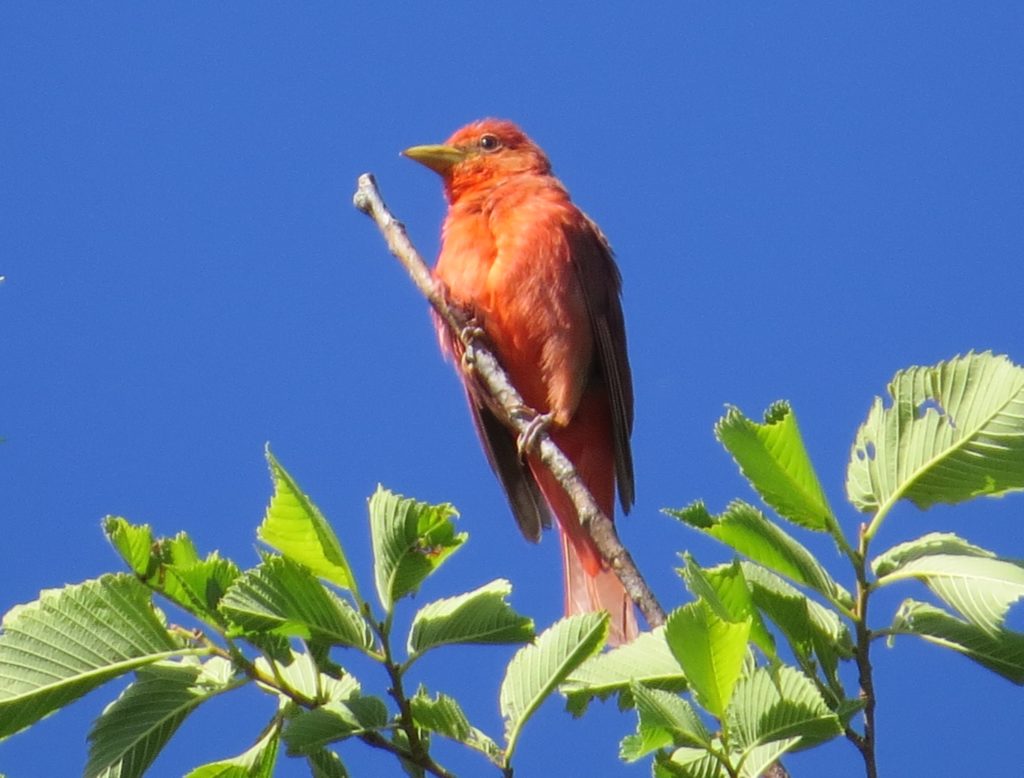
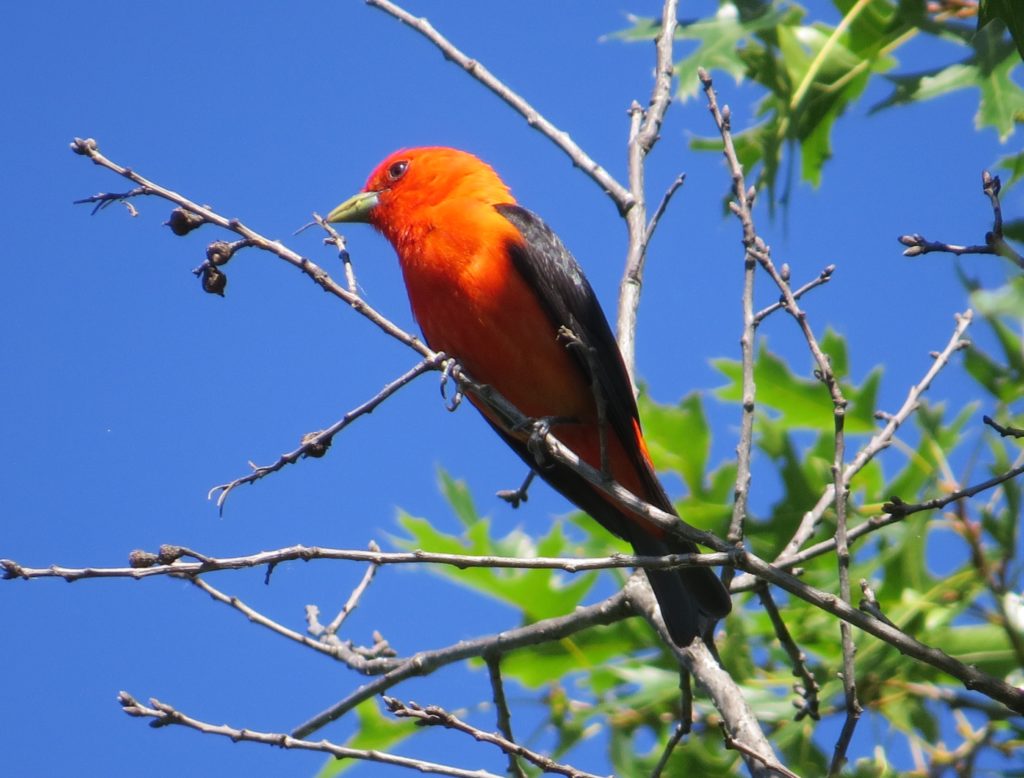
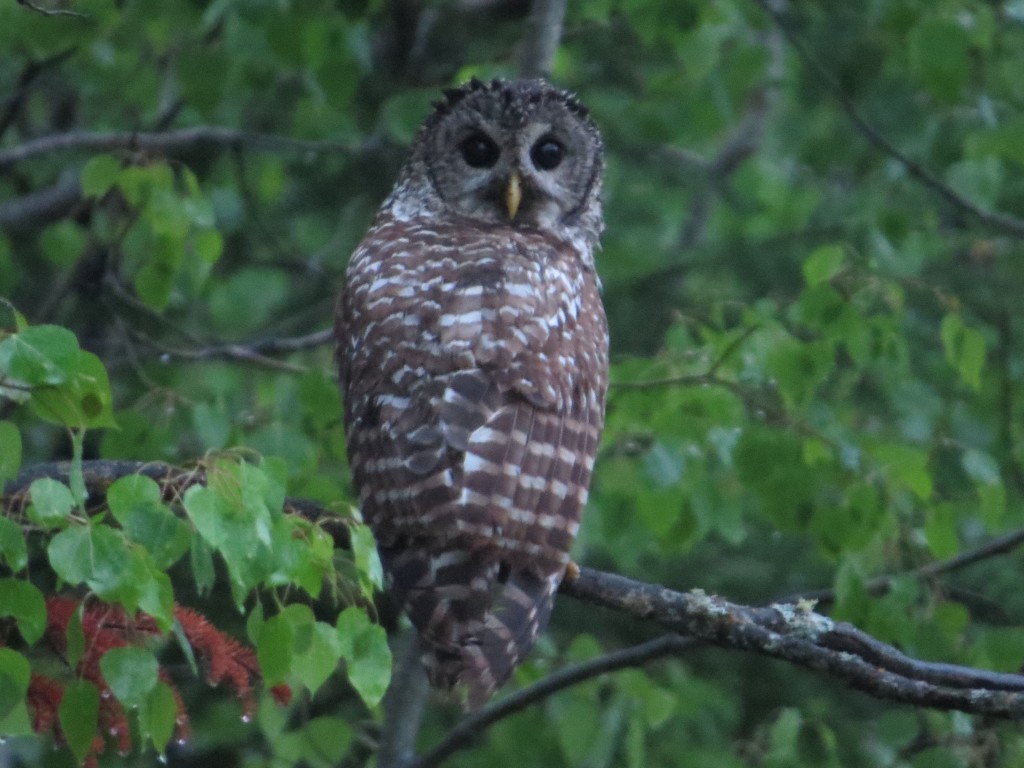 Unfortunately I did not pause long enough to enjoy these Owls as I was in a hurry to get down to the Le Conte’s spot. I wanted to get that out of the way and did not want birding to consume much time since we were visiting family. So I grabbed a couple quick photos of one of the birds in the dim, drippy forest and moved on.
Unfortunately I did not pause long enough to enjoy these Owls as I was in a hurry to get down to the Le Conte’s spot. I wanted to get that out of the way and did not want birding to consume much time since we were visiting family. So I grabbed a couple quick photos of one of the birds in the dim, drippy forest and moved on.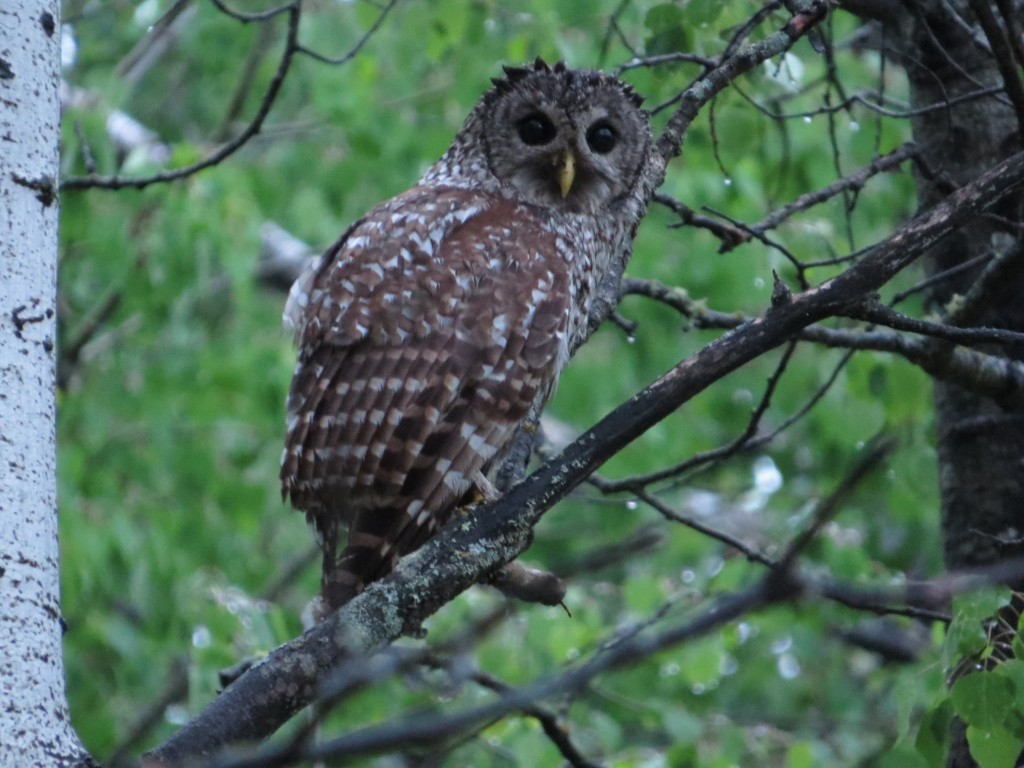
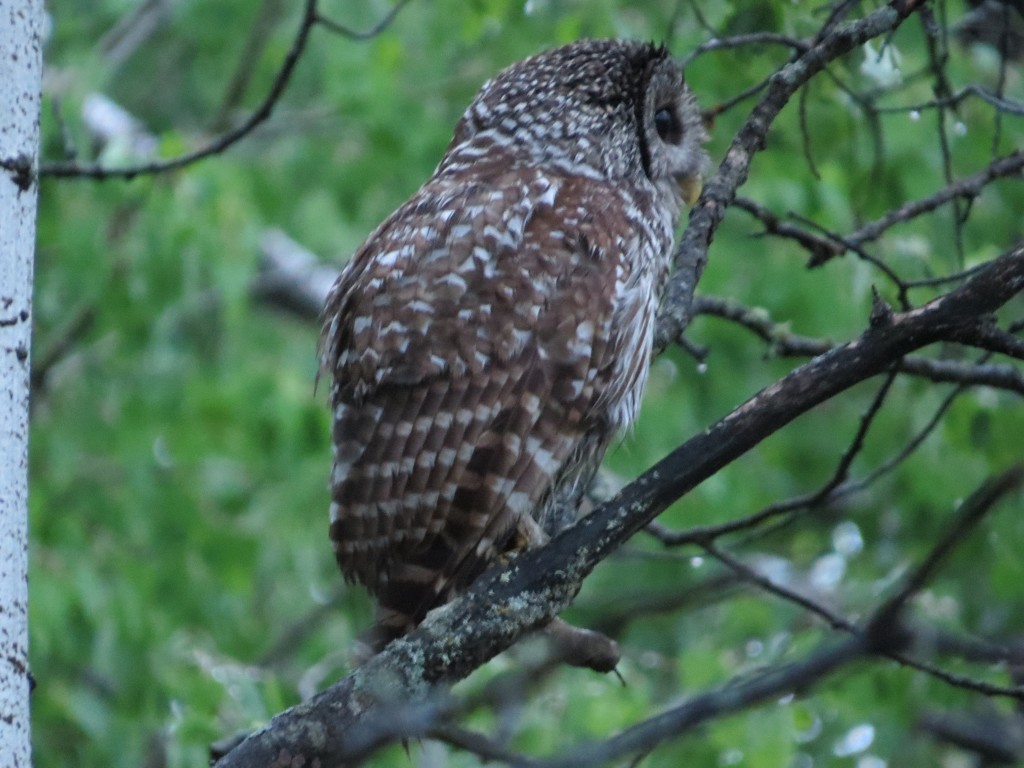
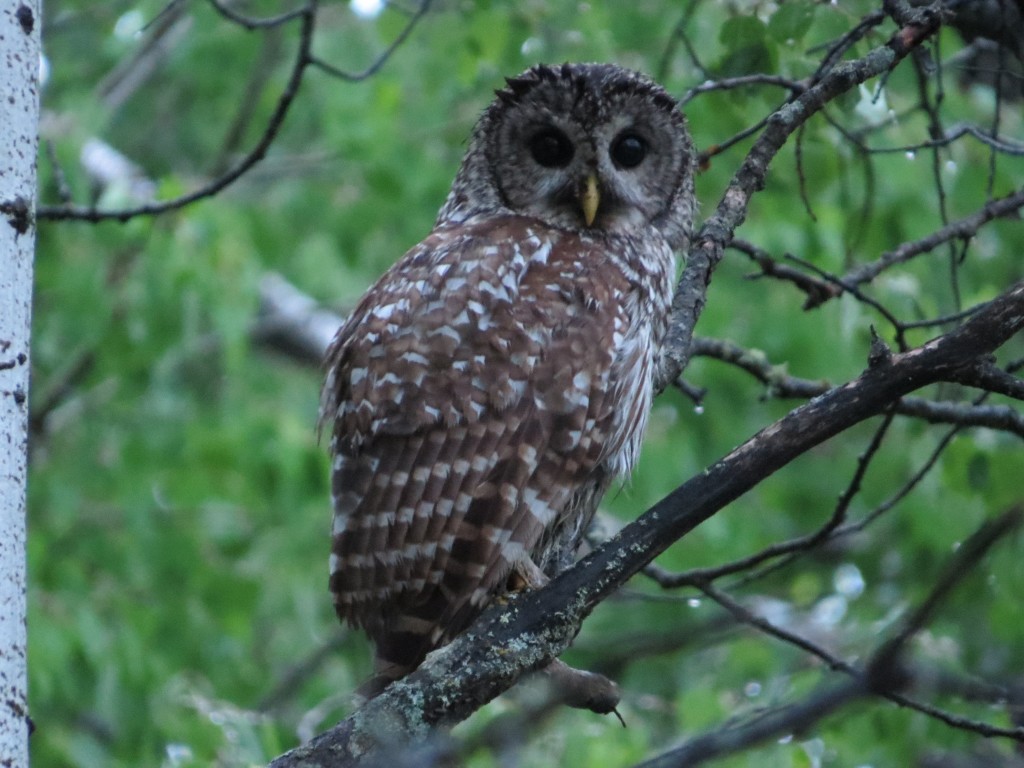
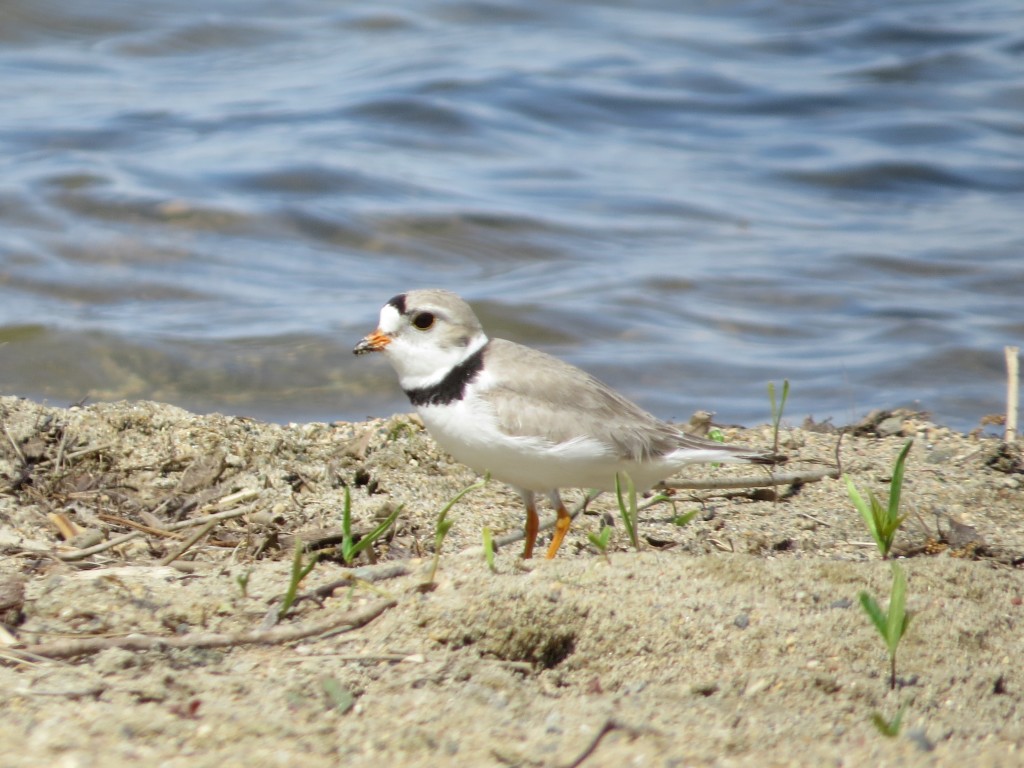
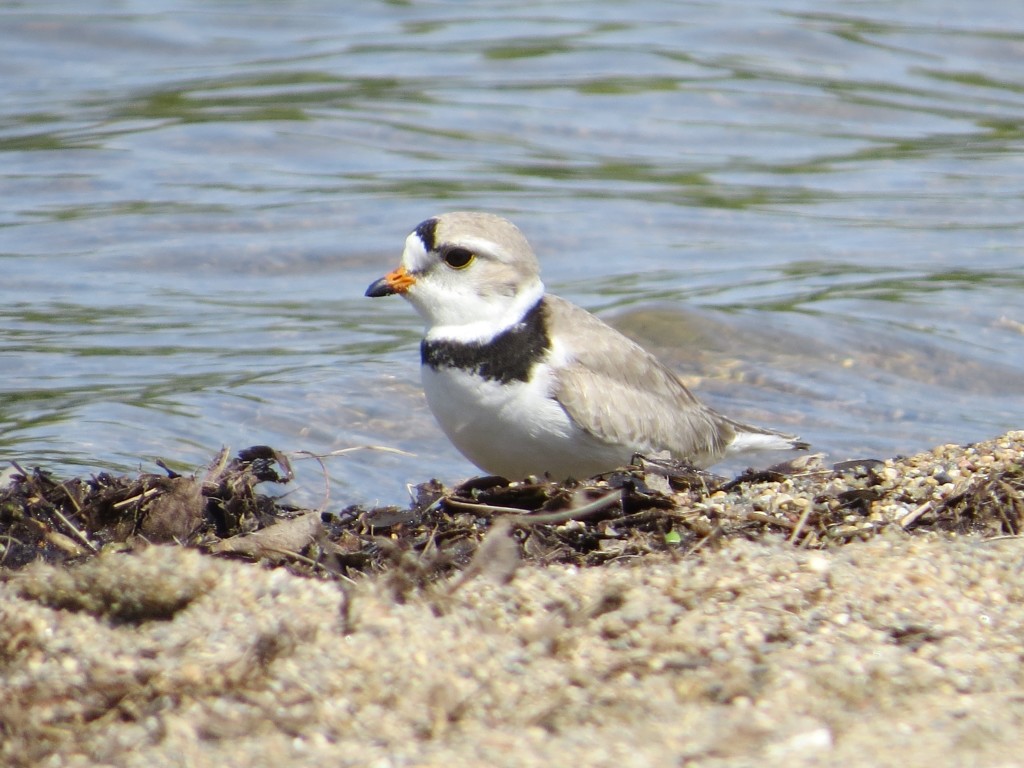
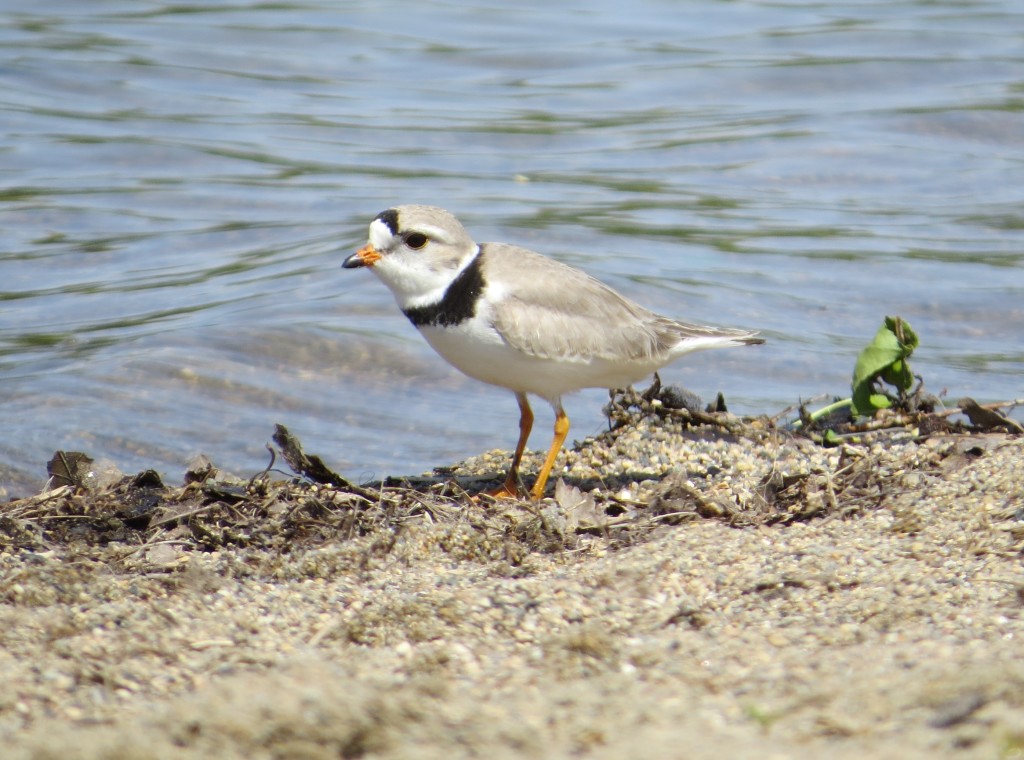 Notice anything unusual about this PIPL? Naked legs! Almost every Piping Plover from the Great Lakes and Northern Great Plains populations are banded. The Northern Great Plains and Atlantic Coast populations of PIPL are listed as threatened while the Great Lakes population is listed as endangered. This bird that loves undisturbed, large sandy beach areas is in trouble. Getting to see one is a big deal.
Notice anything unusual about this PIPL? Naked legs! Almost every Piping Plover from the Great Lakes and Northern Great Plains populations are banded. The Northern Great Plains and Atlantic Coast populations of PIPL are listed as threatened while the Great Lakes population is listed as endangered. This bird that loves undisturbed, large sandy beach areas is in trouble. Getting to see one is a big deal.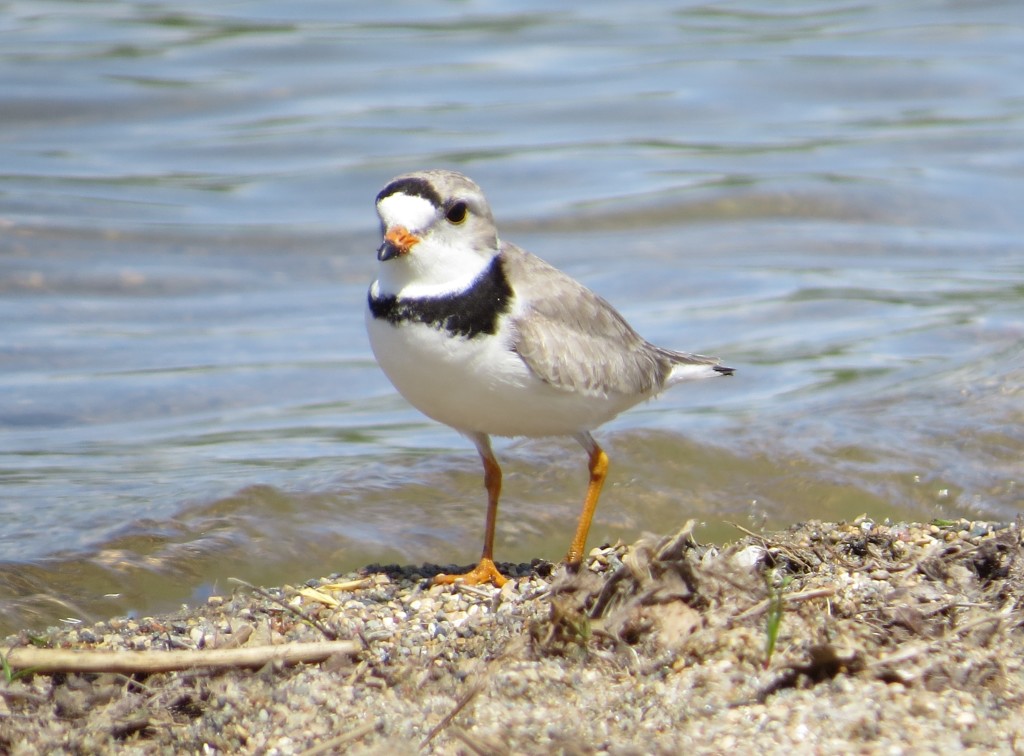
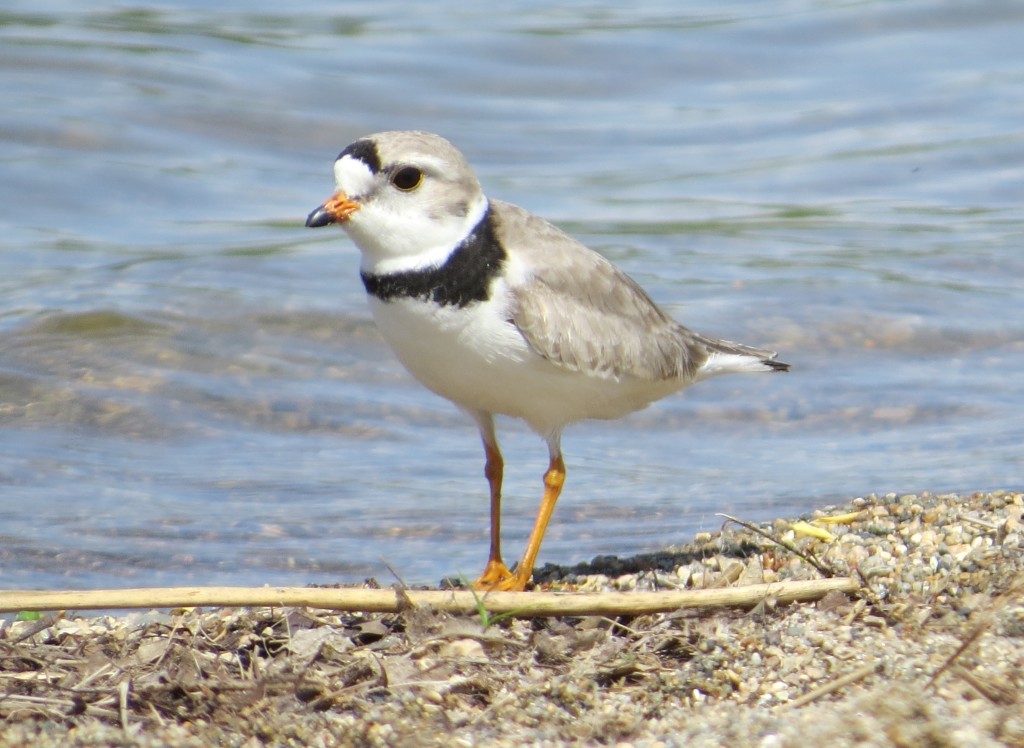 I still cannot get over this opportunity. I got my Piping Plover lifer last summer on Wisconsin’s Long Island right near Madeline Island in the Chequamegon Bay area of Lake Superior. I paid a hefty sum of money to charter a boat to get a brief, bobbing, distant look at this special bird. Now I had a lengthy look at one at my feet at home for free. Even better was that other birders were able to come out and enjoy this bird with some even getting their life looks at it. So, thanks, Mar, for taking me to the beach! It just goes to show that any bird can show up anytime, anywhere. Just when you dismiss a park as being mediocre, it totally surprises you.
I still cannot get over this opportunity. I got my Piping Plover lifer last summer on Wisconsin’s Long Island right near Madeline Island in the Chequamegon Bay area of Lake Superior. I paid a hefty sum of money to charter a boat to get a brief, bobbing, distant look at this special bird. Now I had a lengthy look at one at my feet at home for free. Even better was that other birders were able to come out and enjoy this bird with some even getting their life looks at it. So, thanks, Mar, for taking me to the beach! It just goes to show that any bird can show up anytime, anywhere. Just when you dismiss a park as being mediocre, it totally surprises you.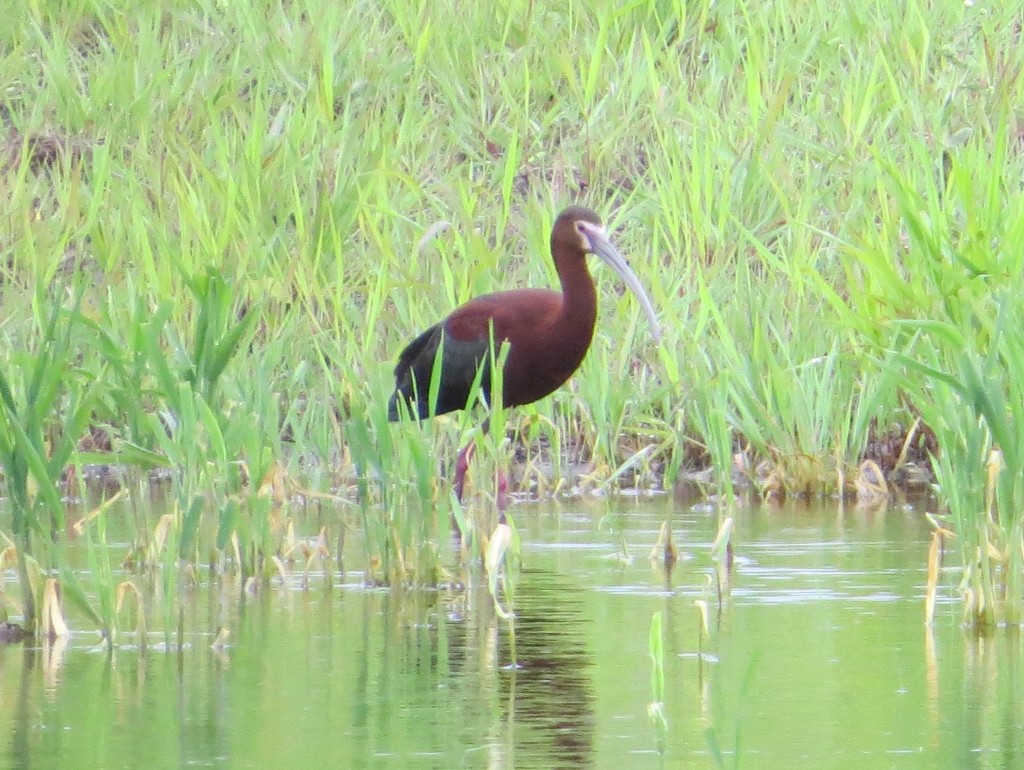
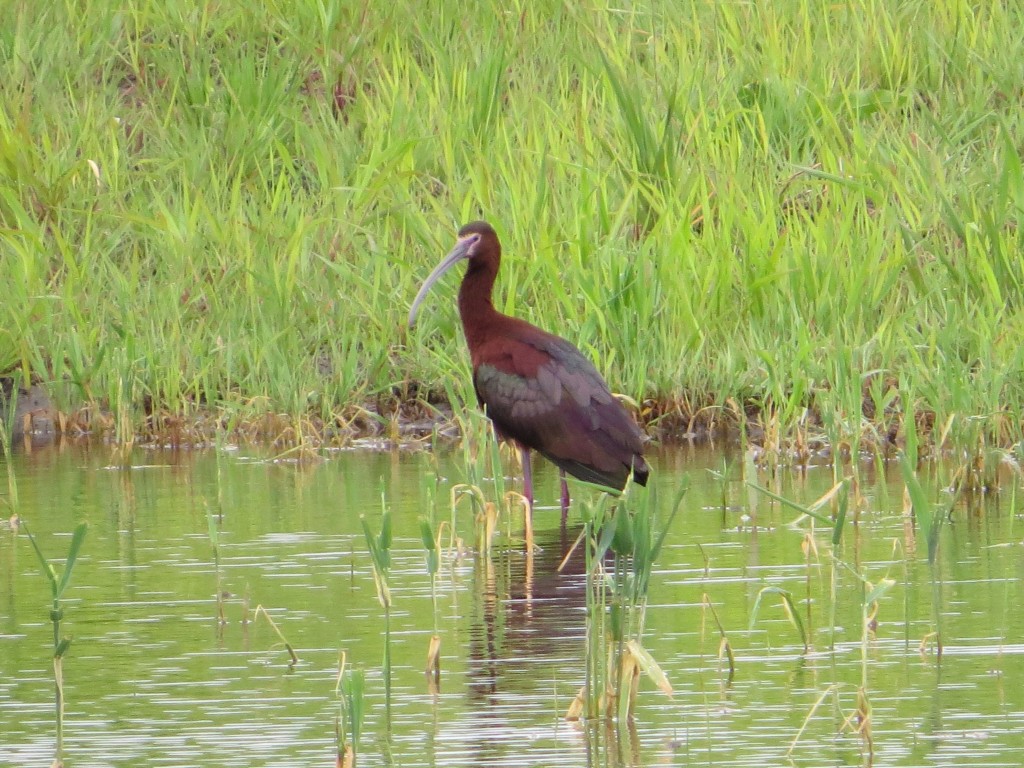 I called Steve, and he was just about to ditch work when it all the sudden decided to fly away, never to be seen again. I guess I was in the right place at the right time. Steve wasn’t interested in the only other shorebird there, a Stilt Sandpiper.
I called Steve, and he was just about to ditch work when it all the sudden decided to fly away, never to be seen again. I guess I was in the right place at the right time. Steve wasn’t interested in the only other shorebird there, a Stilt Sandpiper.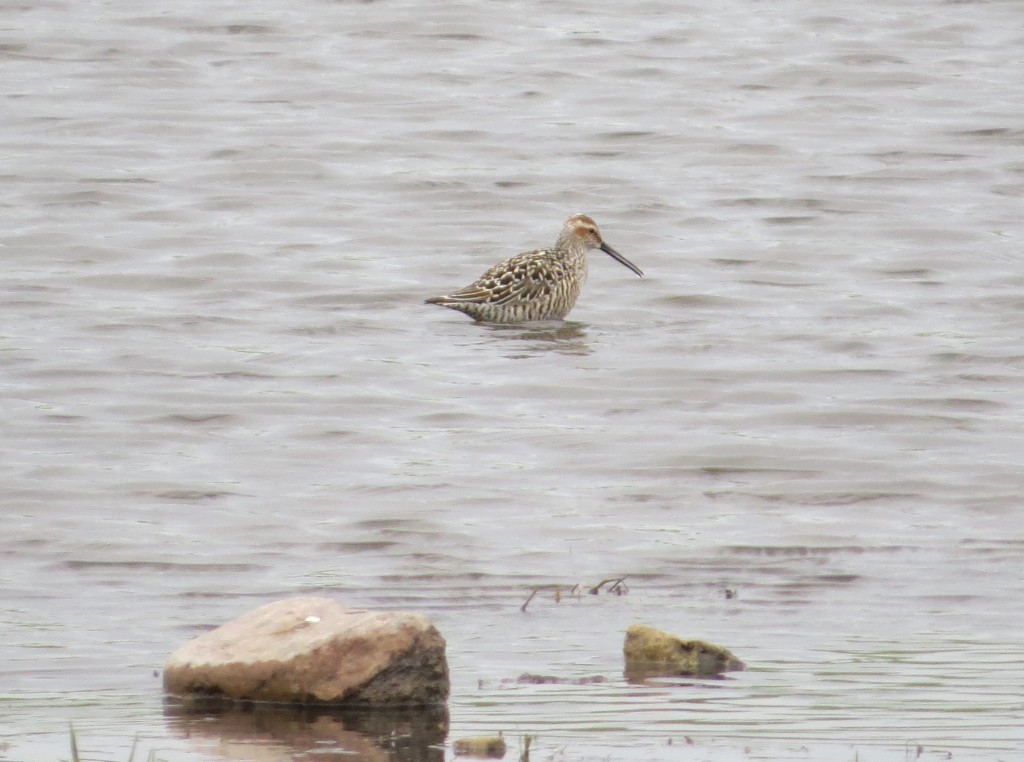
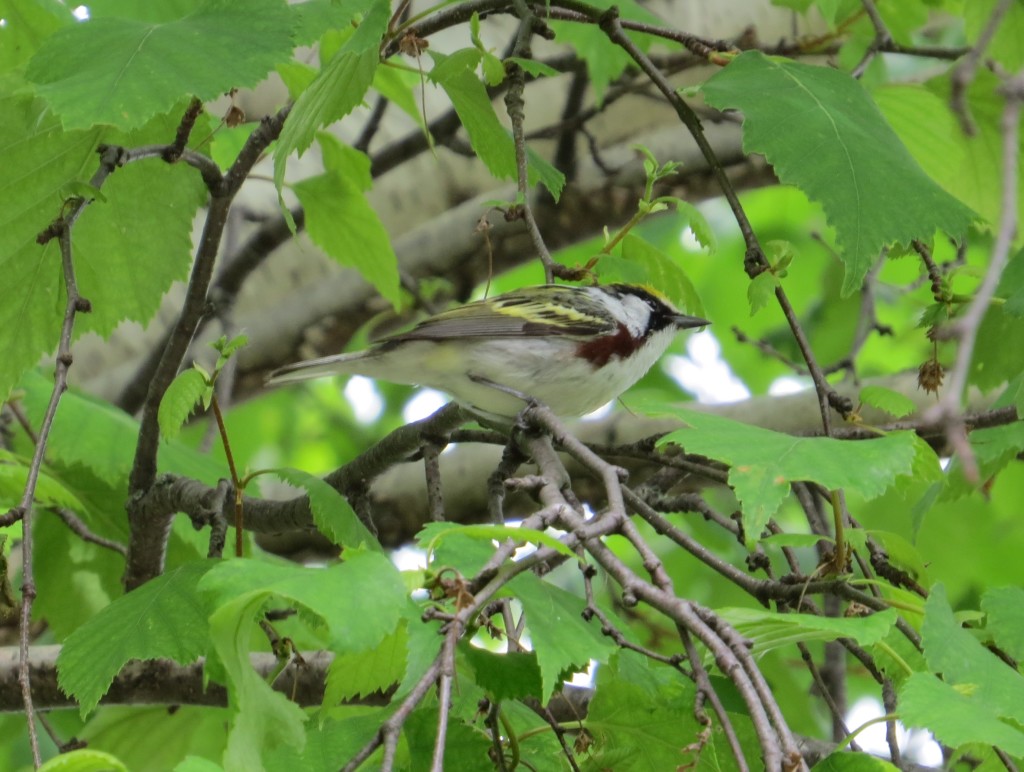

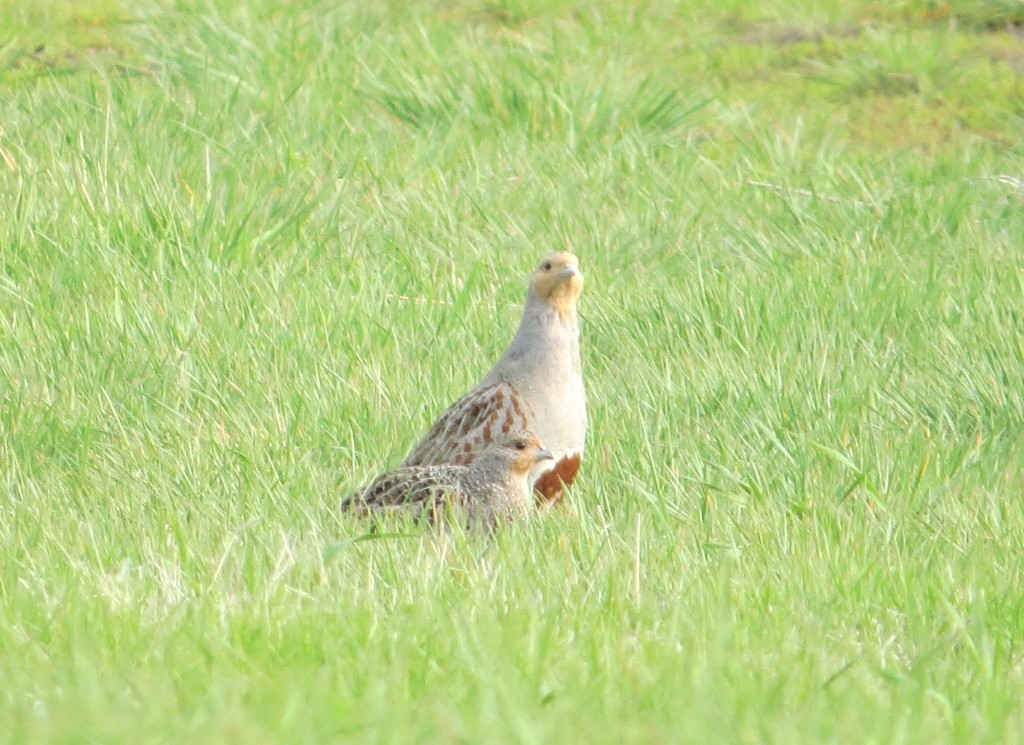
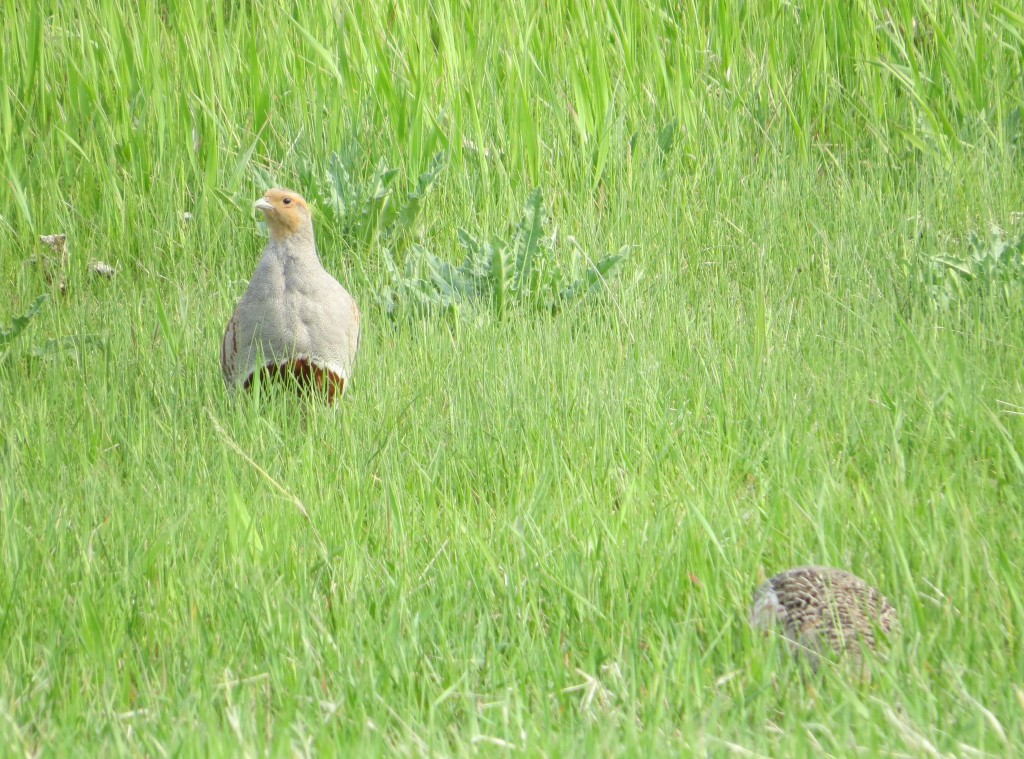
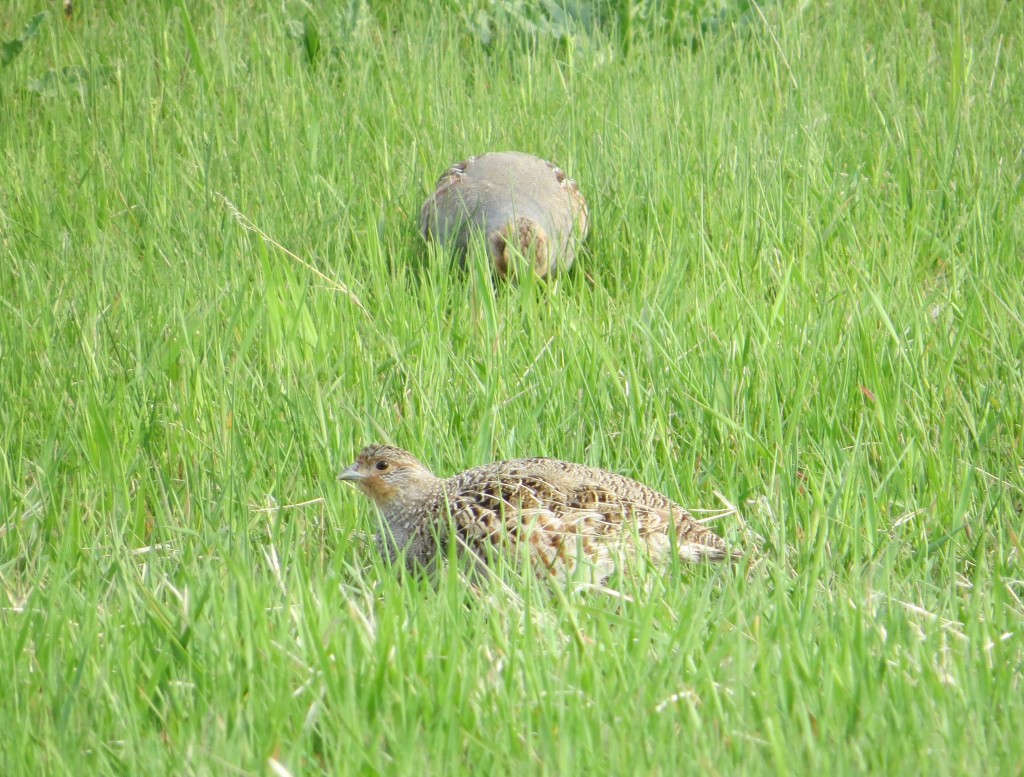
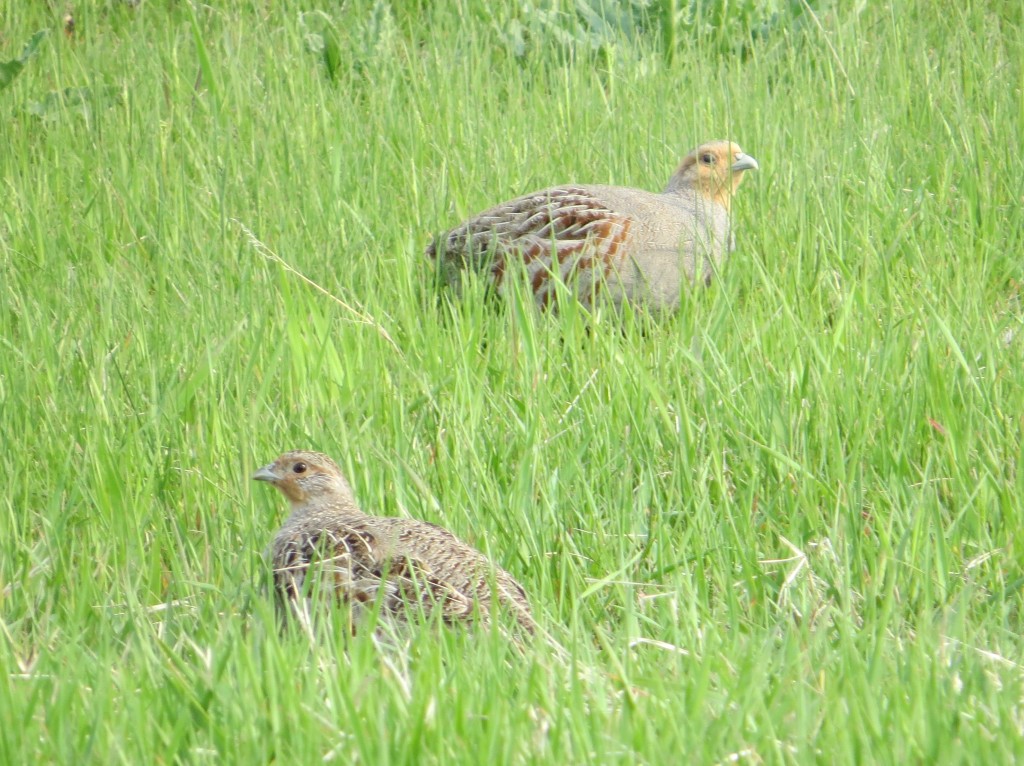
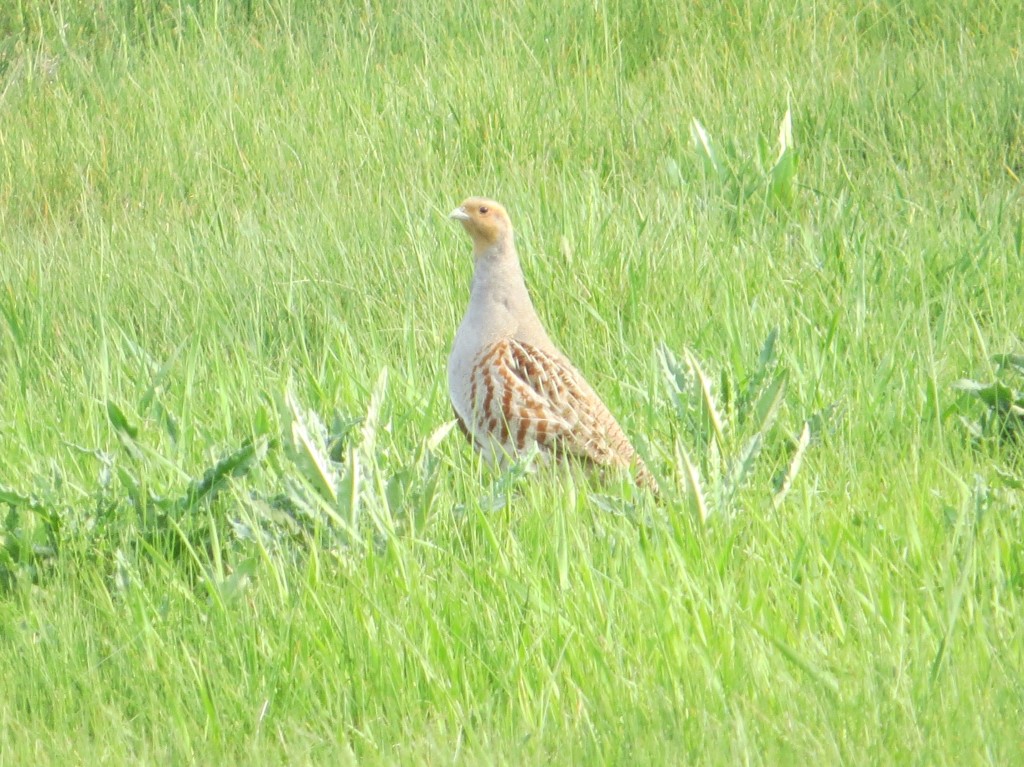
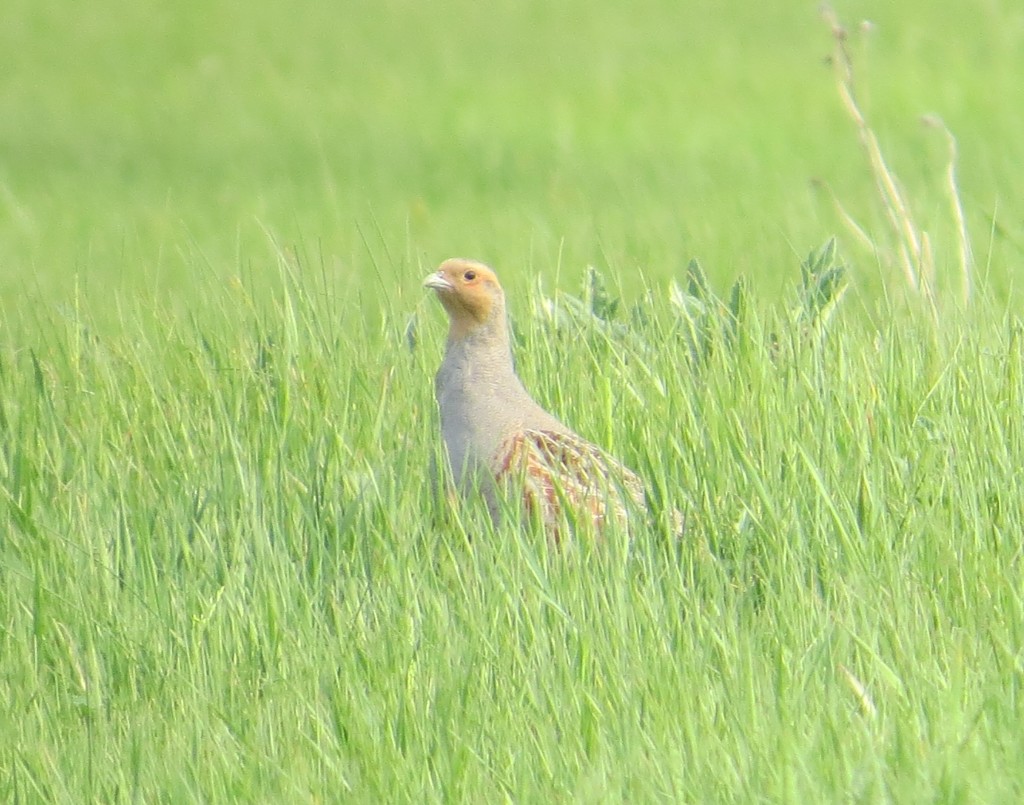 Eventually I had to pry myself away from these birds to complete that coffee/breakfast errand I was on. But afterward, I swung by the lot one more time and the birds were now in crushing distance from the road! Moreover, the male stood up on his haunches and showed off that impressive rusty belly of his.
Eventually I had to pry myself away from these birds to complete that coffee/breakfast errand I was on. But afterward, I swung by the lot one more time and the birds were now in crushing distance from the road! Moreover, the male stood up on his haunches and showed off that impressive rusty belly of his.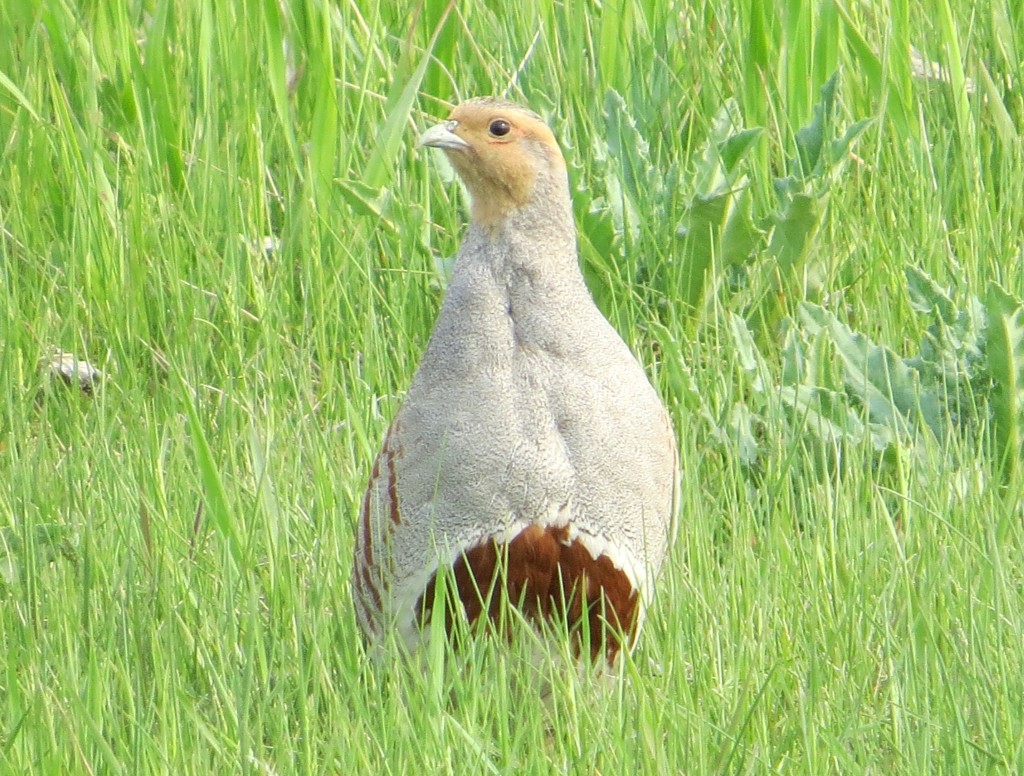
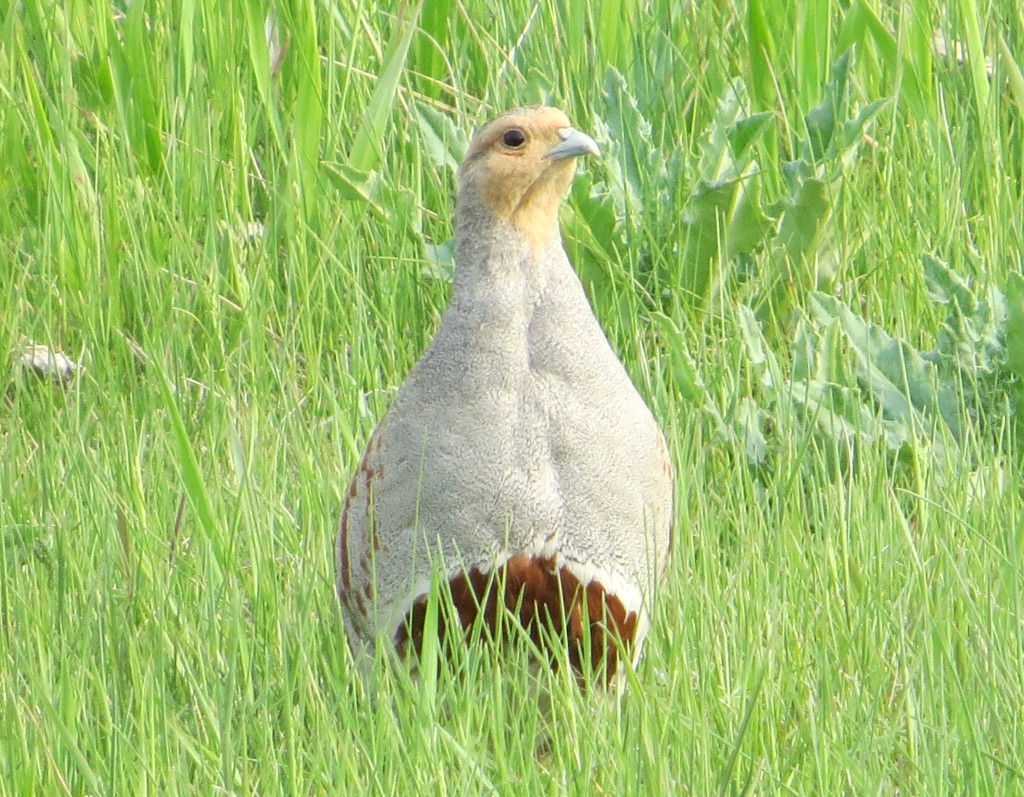 I may have only been 900 feet above sea level, but my head was in the clouds. This is an opportunity I will likely never replicate again. The goings-on back home were but a distant thought. Oh, I’ll be okay.
I may have only been 900 feet above sea level, but my head was in the clouds. This is an opportunity I will likely never replicate again. The goings-on back home were but a distant thought. Oh, I’ll be okay. I drove along the west shore of the lake and pulled into a boat launch to scan the waters. Right away I saw a binocular-clad gentleman loading a spotting scope into a shiny Prius–this birder could be spotted a mile away. I asked him if he saw the duck. He told me no and said he’d missed on it multiple times. Odd, I thought, as I recalled the duck being reported every single day for the better part of a week. After this exchange, he and I both headed to Orchard Lake Park on the south end of the lake where people had said was the best place from which to see the Scoter. He had the lead as I followed his car into the parking lot. Rather than parking in a stall, he faced his vehicle directly at the water. I parked, looked at the water and instantly saw a distant, giant, black-and-white blob that had Surf Scoter GISS written all over it. Before I could get my binoculars up to verify, the other birder, who never left his car, turned around after 30 seconds and drove out of the park! My desire to look at my Surf Scoter lifer was suddenly replaced by the fear that this guy might have, somehow, missed it. Was it diving when he looked? Did he not recognize this juvenile form of this species? Did he see it, get his tic, and just peel out? Even if the guy was just a lister, who doesn’t spend at least a couple minutes enjoying looking at an ocean-going Scoter in MINNESOTA? I panicked. I hesitated. Do I race after him on foot and pound on his trunk? Do I hop in my car and chase him down? You can’t save them all, I guess. Oh, well. Let’s have a look at that Surf Scoter…
I drove along the west shore of the lake and pulled into a boat launch to scan the waters. Right away I saw a binocular-clad gentleman loading a spotting scope into a shiny Prius–this birder could be spotted a mile away. I asked him if he saw the duck. He told me no and said he’d missed on it multiple times. Odd, I thought, as I recalled the duck being reported every single day for the better part of a week. After this exchange, he and I both headed to Orchard Lake Park on the south end of the lake where people had said was the best place from which to see the Scoter. He had the lead as I followed his car into the parking lot. Rather than parking in a stall, he faced his vehicle directly at the water. I parked, looked at the water and instantly saw a distant, giant, black-and-white blob that had Surf Scoter GISS written all over it. Before I could get my binoculars up to verify, the other birder, who never left his car, turned around after 30 seconds and drove out of the park! My desire to look at my Surf Scoter lifer was suddenly replaced by the fear that this guy might have, somehow, missed it. Was it diving when he looked? Did he not recognize this juvenile form of this species? Did he see it, get his tic, and just peel out? Even if the guy was just a lister, who doesn’t spend at least a couple minutes enjoying looking at an ocean-going Scoter in MINNESOTA? I panicked. I hesitated. Do I race after him on foot and pound on his trunk? Do I hop in my car and chase him down? You can’t save them all, I guess. Oh, well. Let’s have a look at that Surf Scoter…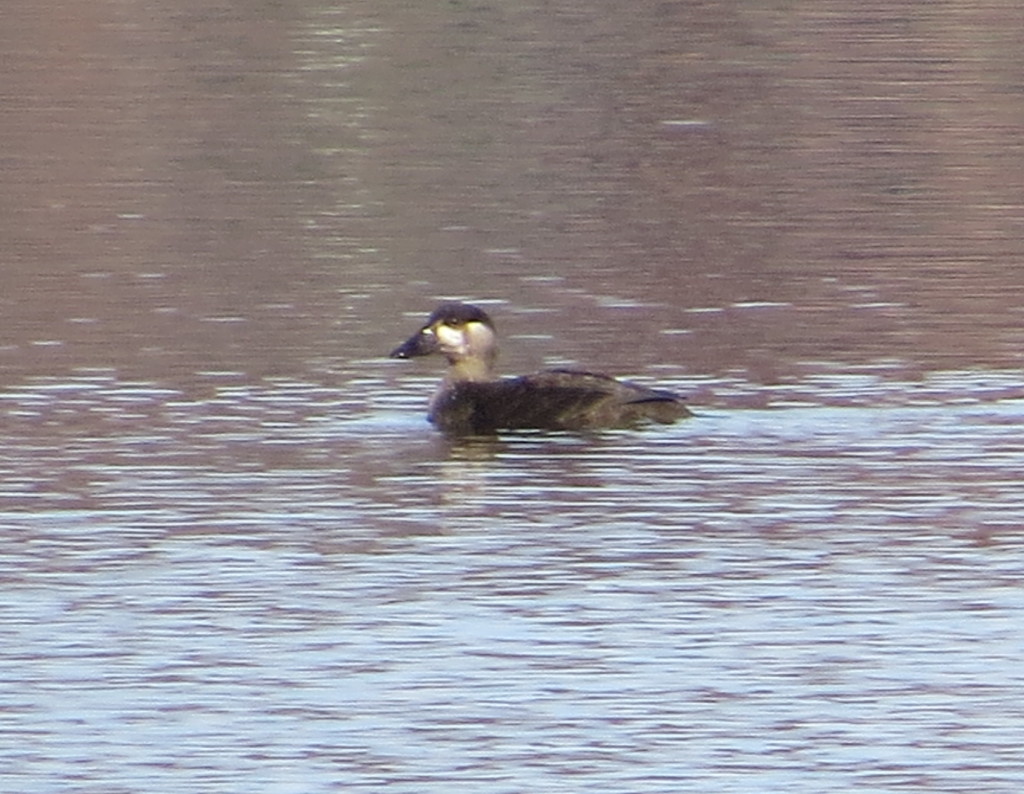 This is now my fifth species of sea duck in Minnesota with White-winged Scoter, Harlequin Duck, Common Eider, and Long-tailed Duck making up the others. I kind of prefer my sea ducks on the turbulent, cold waters of Lake Superior on a gray day. That kind of backdrop adds to the mystique and allure of sea ducks. Seeing one on a placid metro lake reflecting lingering fall colors on a 72° day is just kind of so-so.
This is now my fifth species of sea duck in Minnesota with White-winged Scoter, Harlequin Duck, Common Eider, and Long-tailed Duck making up the others. I kind of prefer my sea ducks on the turbulent, cold waters of Lake Superior on a gray day. That kind of backdrop adds to the mystique and allure of sea ducks. Seeing one on a placid metro lake reflecting lingering fall colors on a 72° day is just kind of so-so.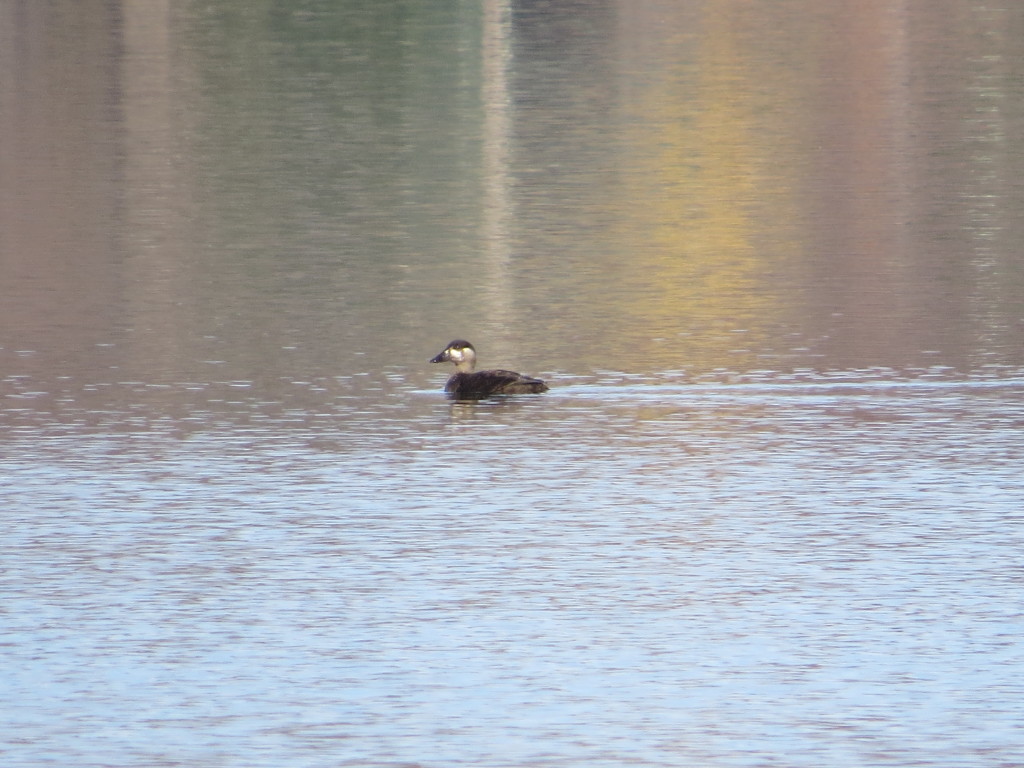 But even still. It’s cool. I mean, it’s a Scoter.
But even still. It’s cool. I mean, it’s a Scoter.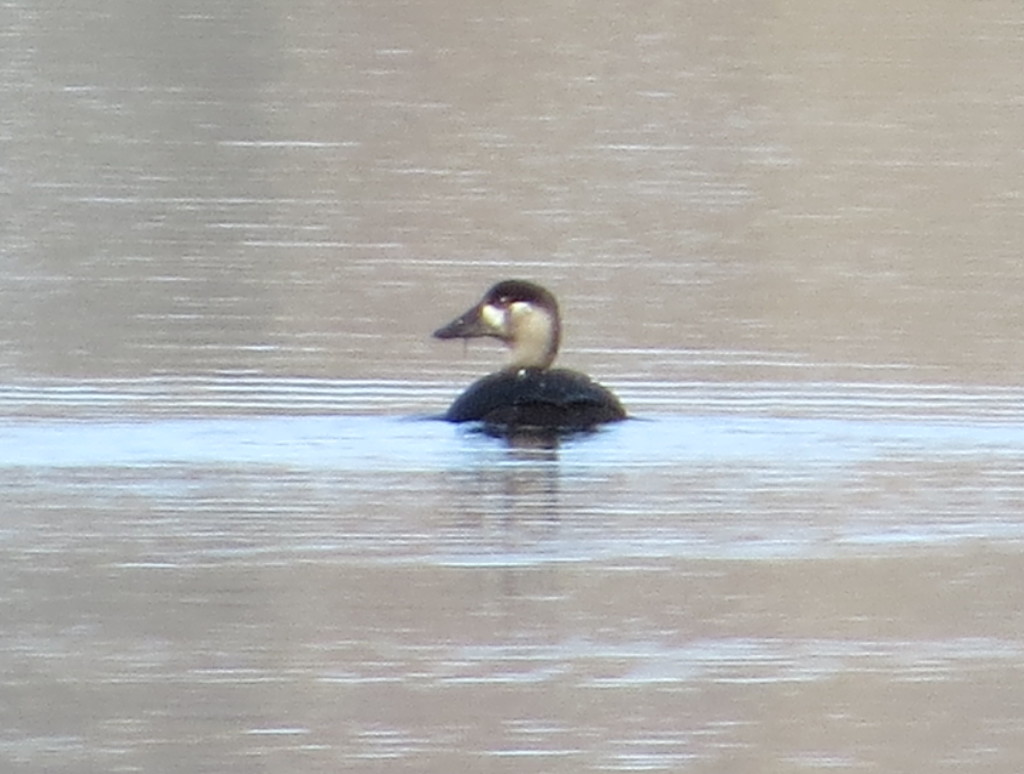
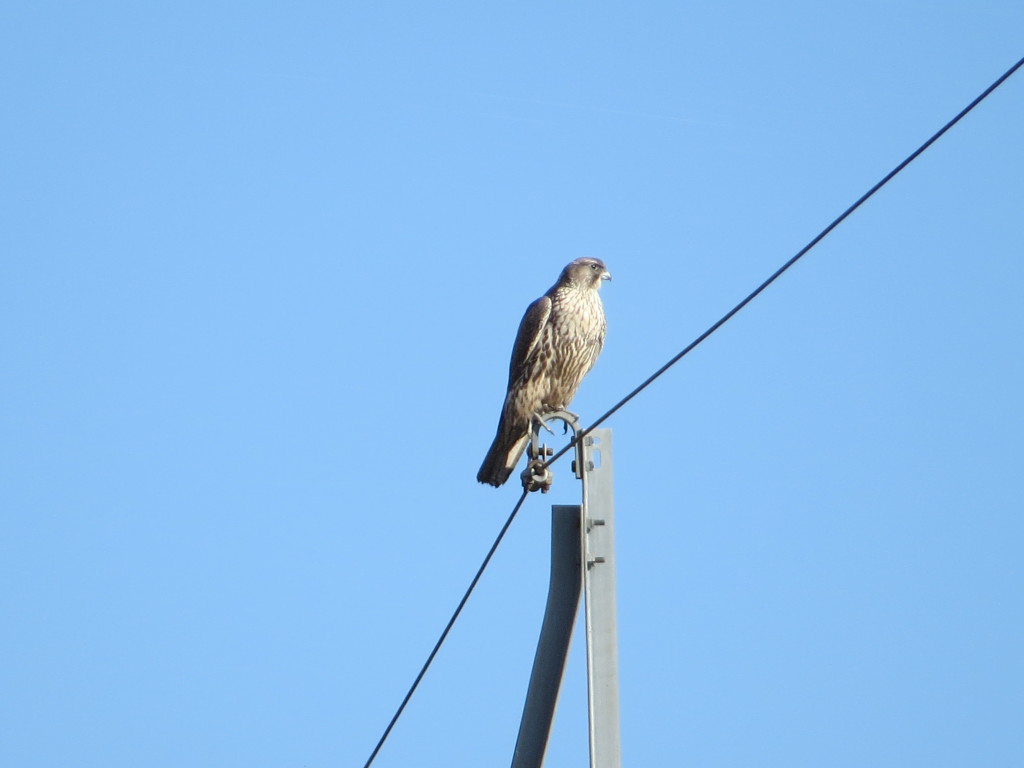
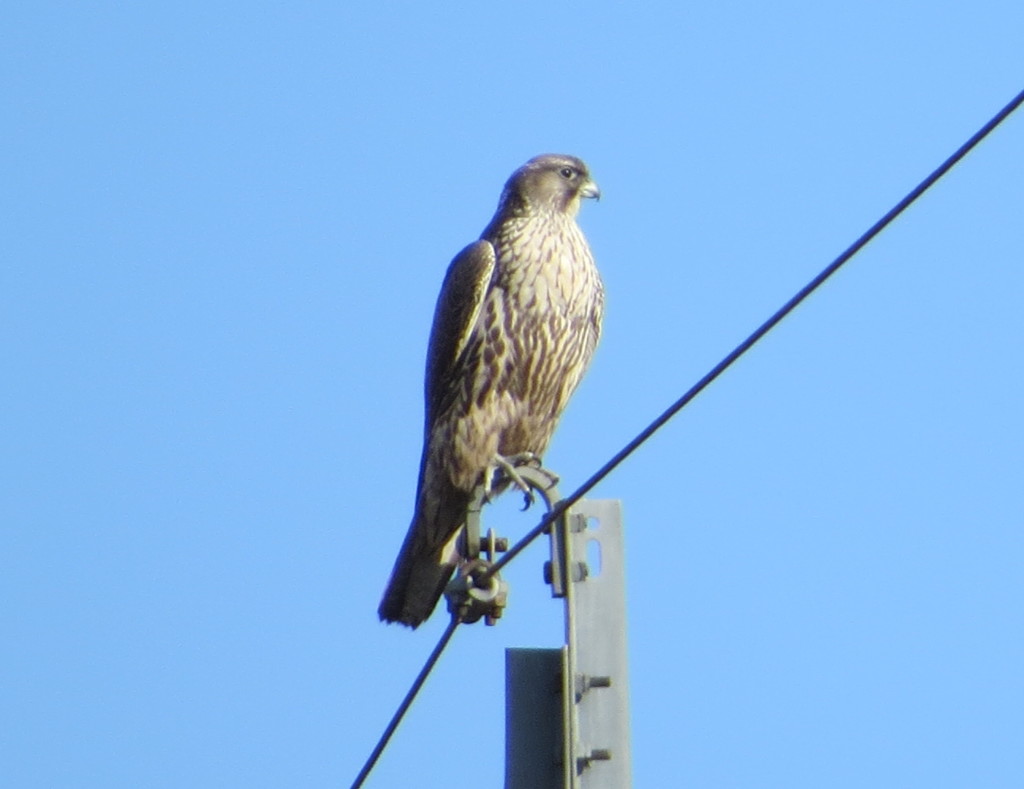
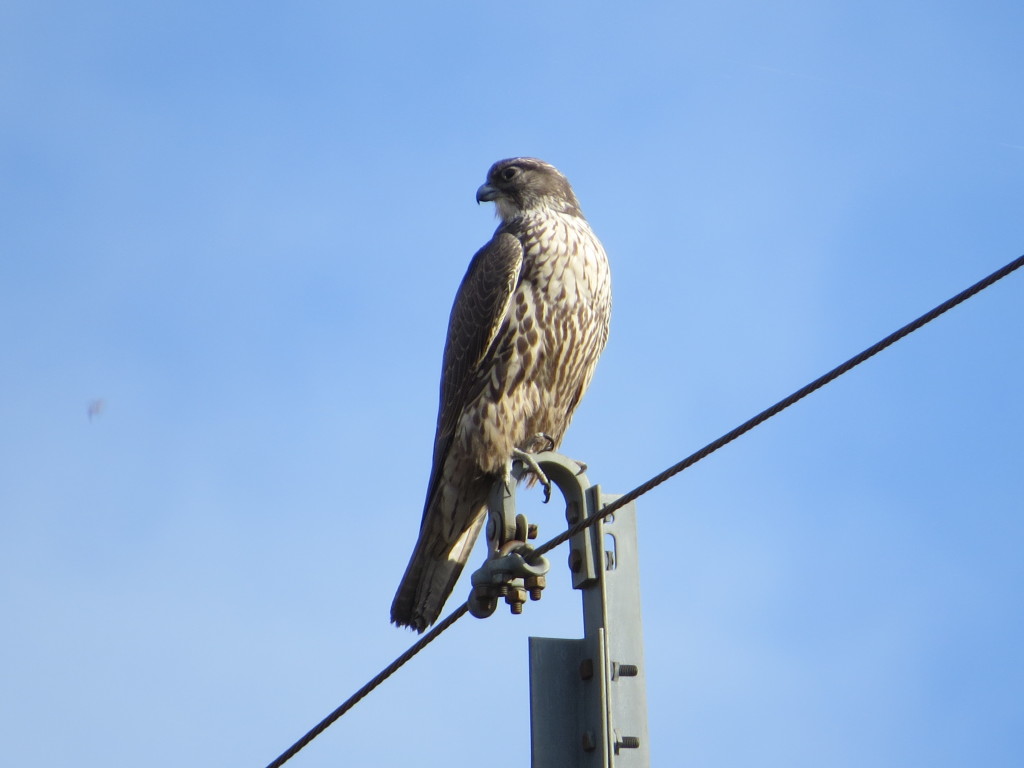
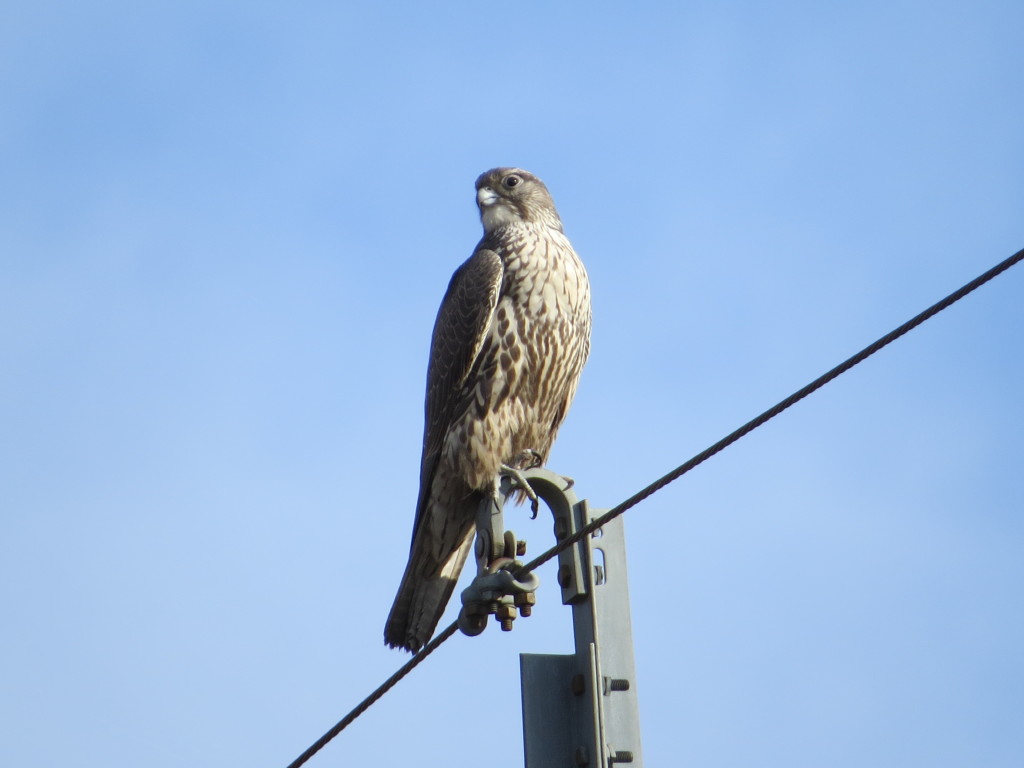
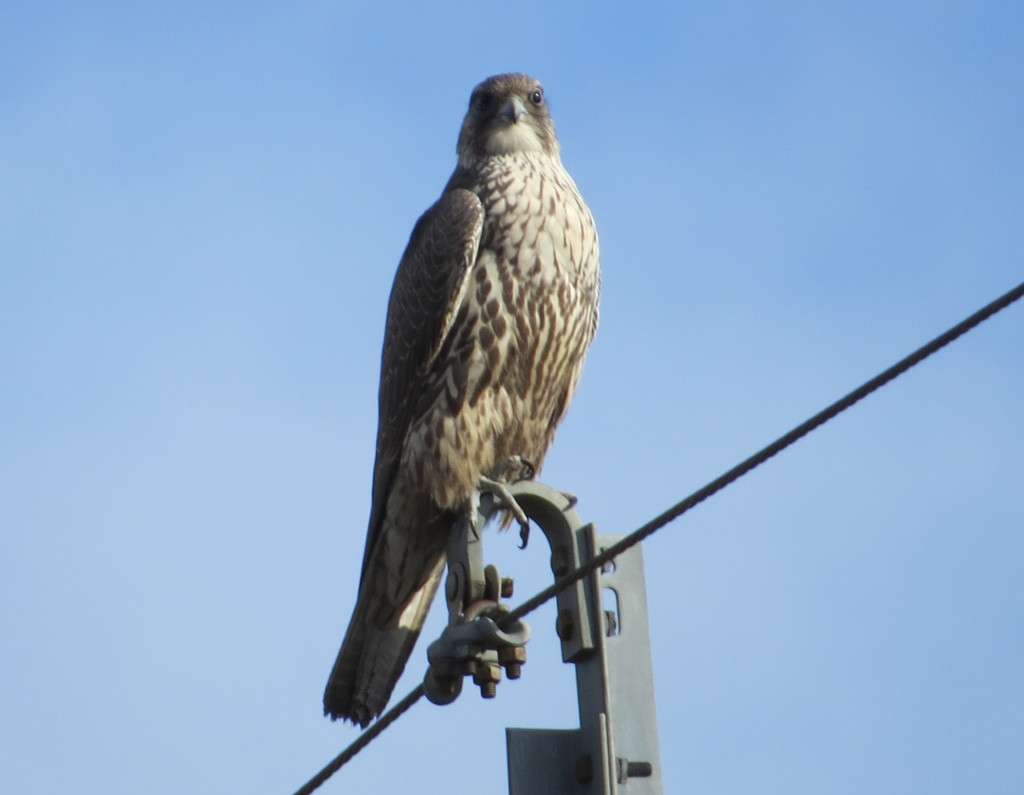 I still can’t believe I saw this bird; the adrenaline is still pumping. I thought it would be another 10 years at least before I’d get this arctic visitor on my Minnesota list (I got my lifer in WI last winter). Then I see a Gyrfalcon in my own county…and I never even knew it. I was caught off guard and completely unprepared for encountering such a rarity. It just goes to show that one can never study enough in this hobby and that even the most boring, familiar back roads can hold the monumental. So thanks, Bob, for chasing me down and pounding on my trunk.
I still can’t believe I saw this bird; the adrenaline is still pumping. I thought it would be another 10 years at least before I’d get this arctic visitor on my Minnesota list (I got my lifer in WI last winter). Then I see a Gyrfalcon in my own county…and I never even knew it. I was caught off guard and completely unprepared for encountering such a rarity. It just goes to show that one can never study enough in this hobby and that even the most boring, familiar back roads can hold the monumental. So thanks, Bob, for chasing me down and pounding on my trunk.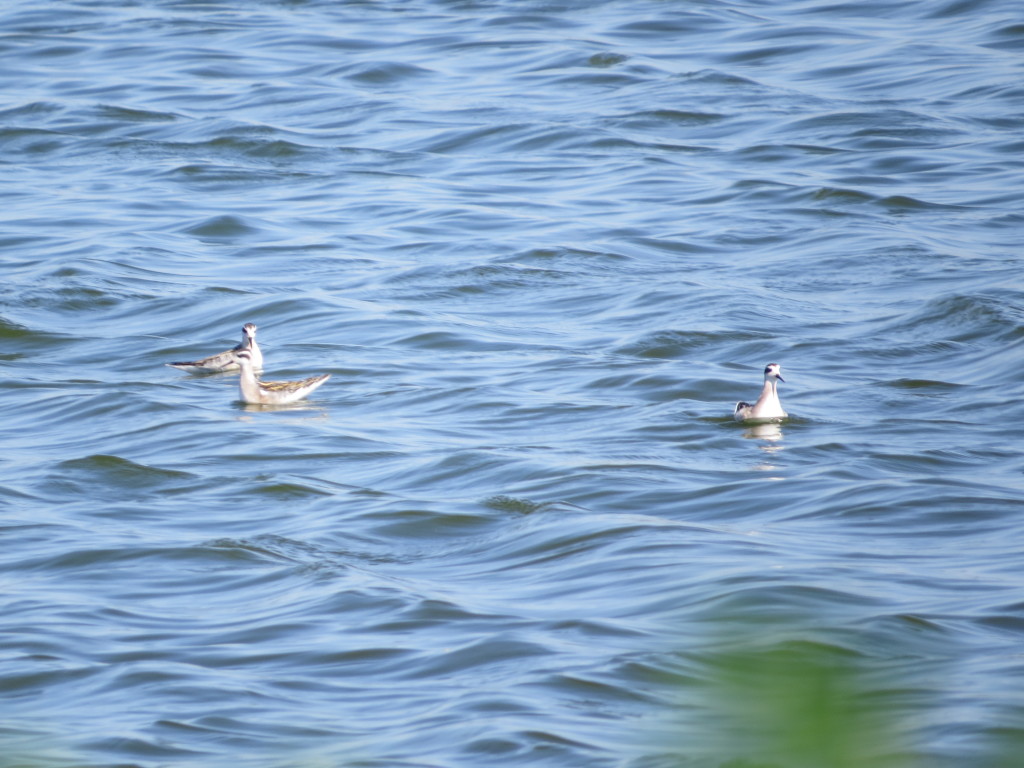
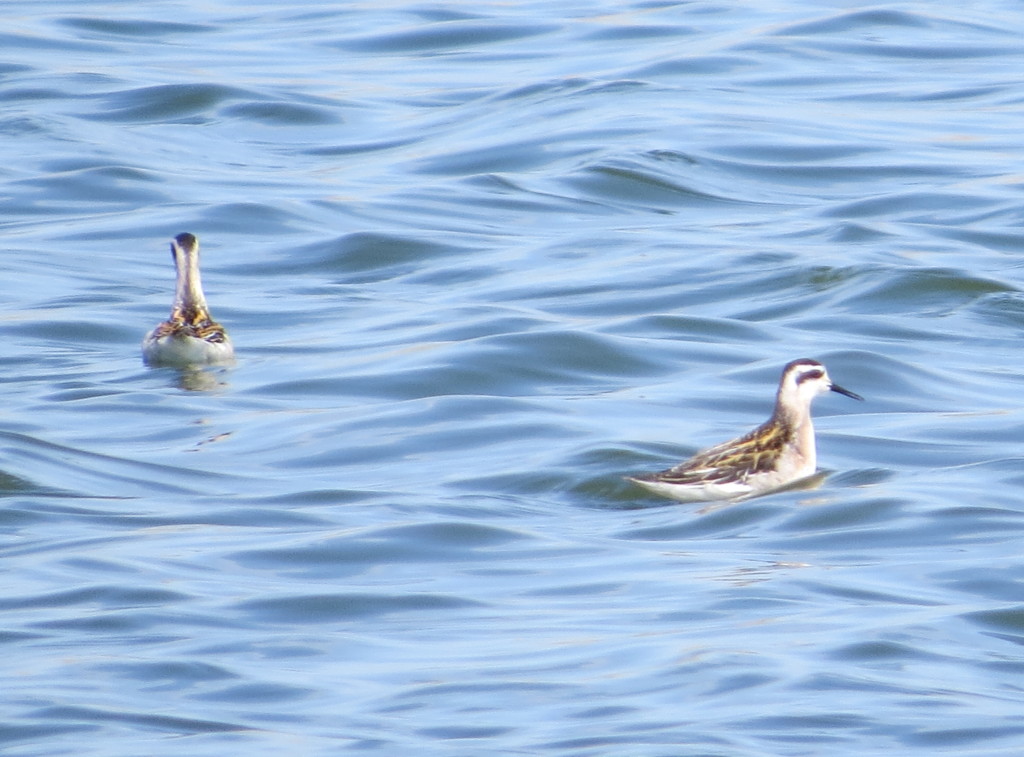
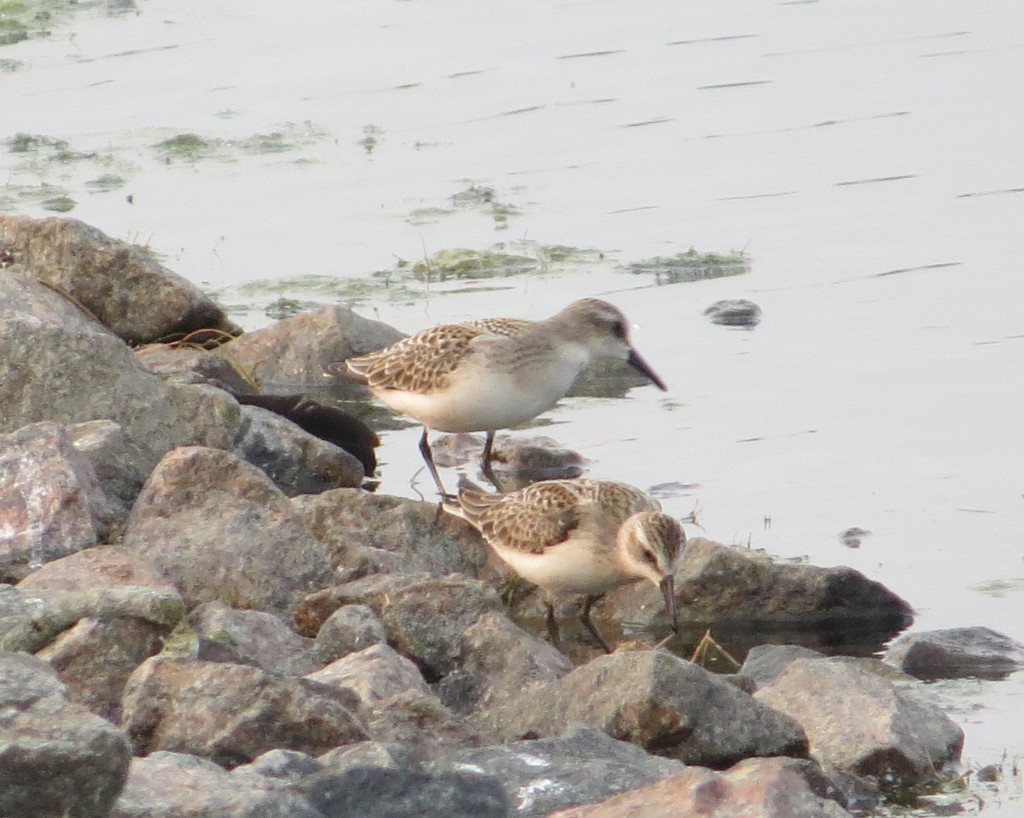
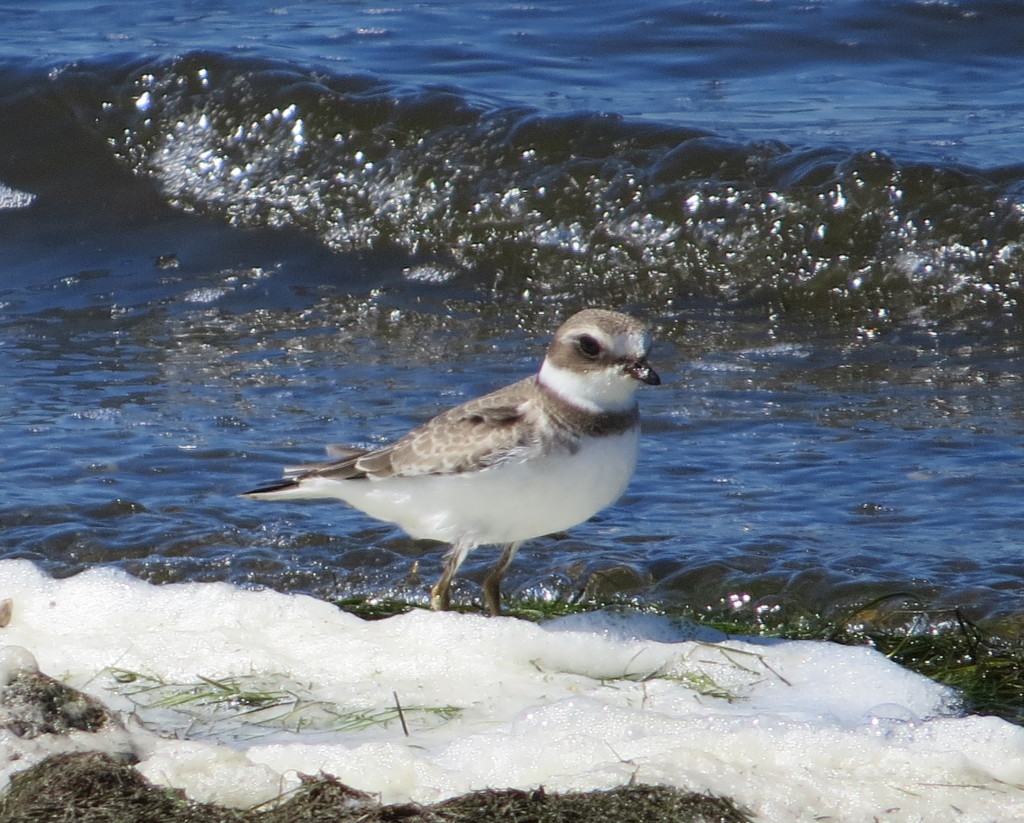
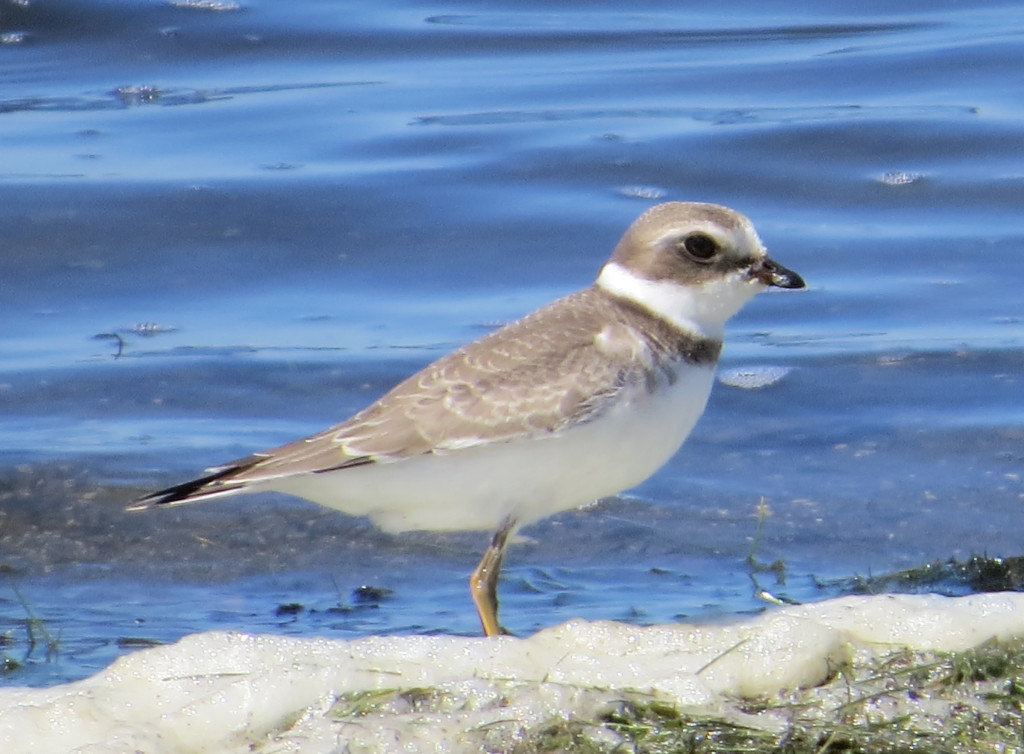
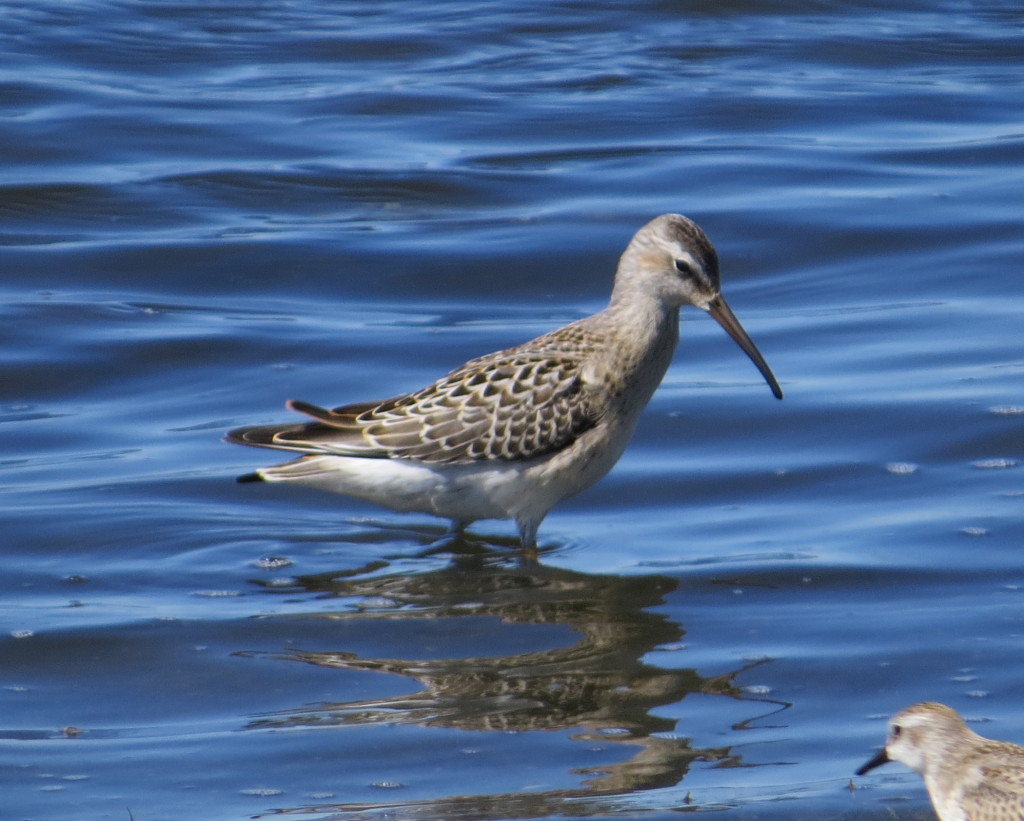
 The flooded drain tile intake that created this spot was only about two acres in size. When there is no other habitat around, that is all you need. At first, there was nothing but Killdeer and the odd Lesser Yellowlegs or two, harbingers of good things to come.
The flooded drain tile intake that created this spot was only about two acres in size. When there is no other habitat around, that is all you need. At first, there was nothing but Killdeer and the odd Lesser Yellowlegs or two, harbingers of good things to come.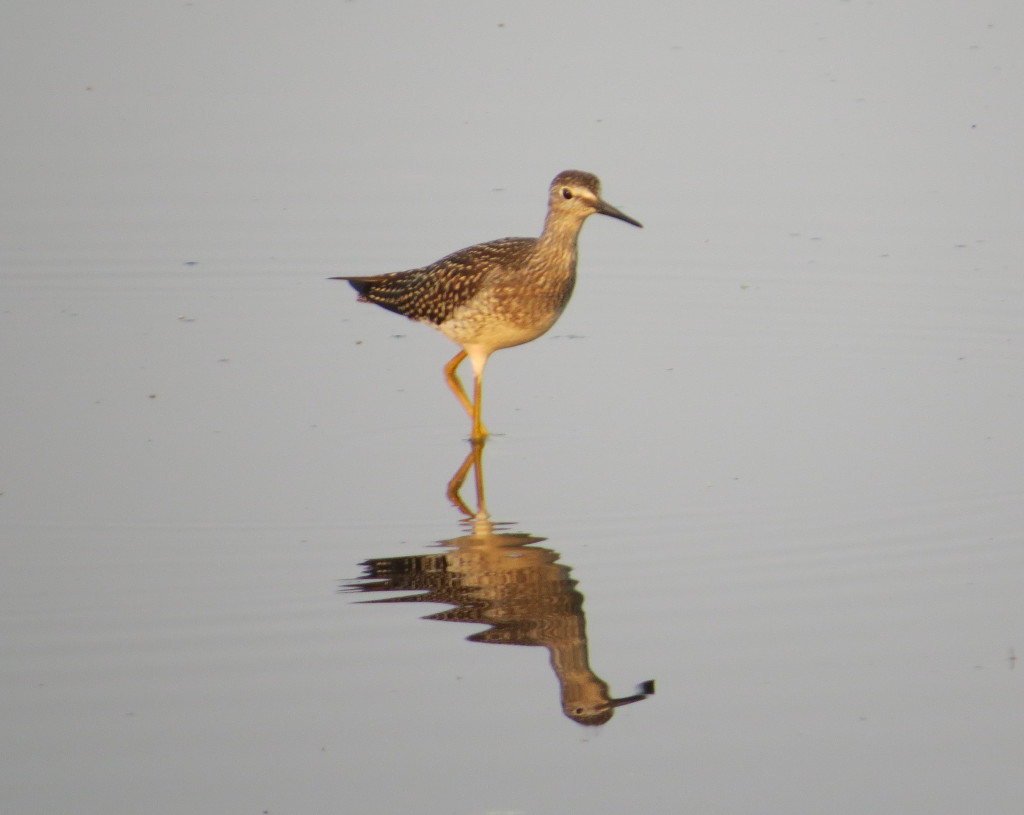 So this is the story of my accidental patch. Having it so close to home gave me the opportunity to check it multiple times a day, day after day. Before I knew it, I was becoming a devoted patch birder whose persistence started to pay dividends in things like a pair of dapper Baird’s Sandpipers.
So this is the story of my accidental patch. Having it so close to home gave me the opportunity to check it multiple times a day, day after day. Before I knew it, I was becoming a devoted patch birder whose persistence started to pay dividends in things like a pair of dapper Baird’s Sandpipers.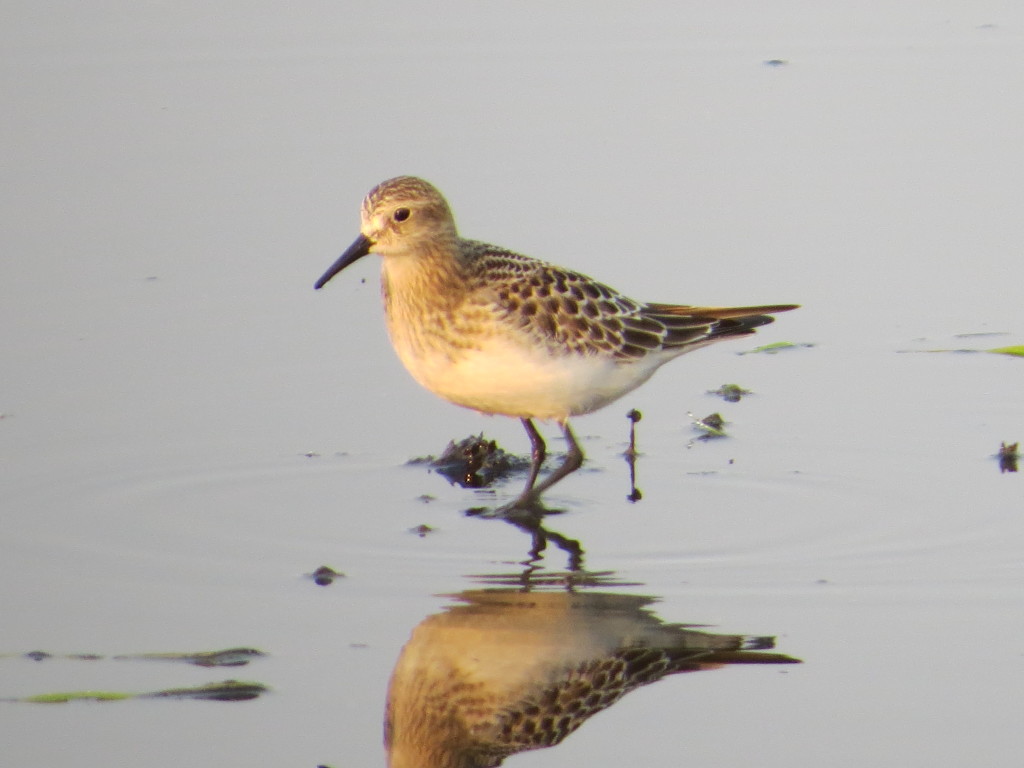
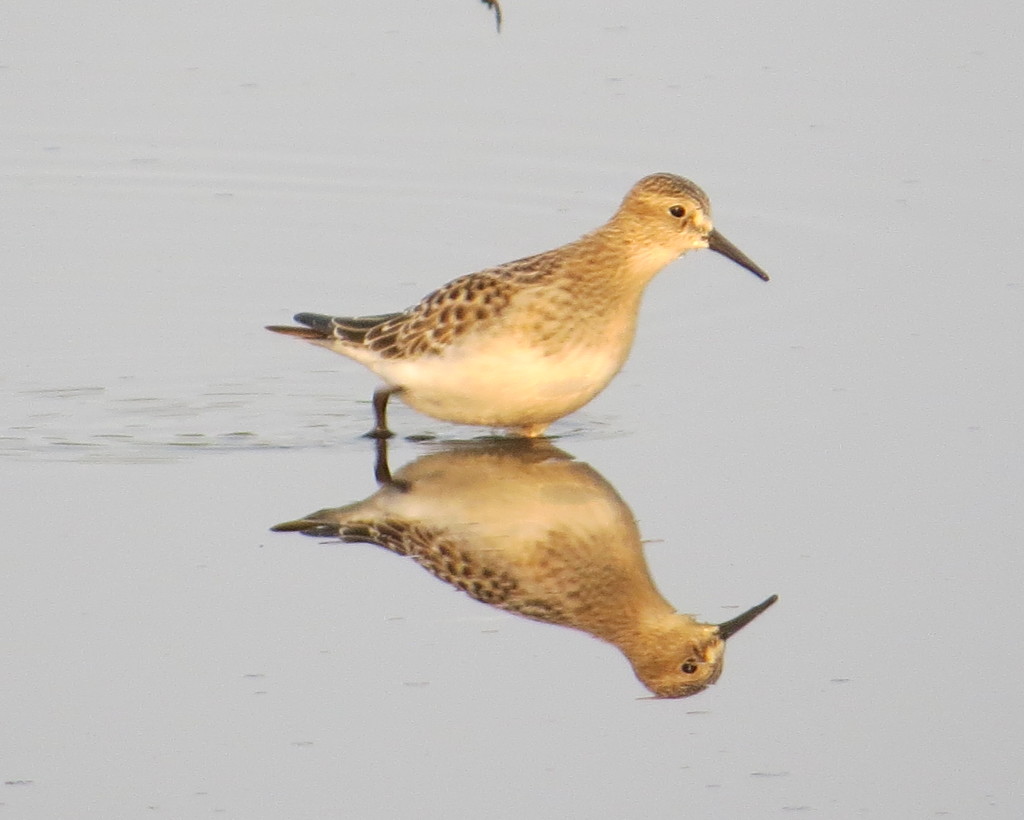
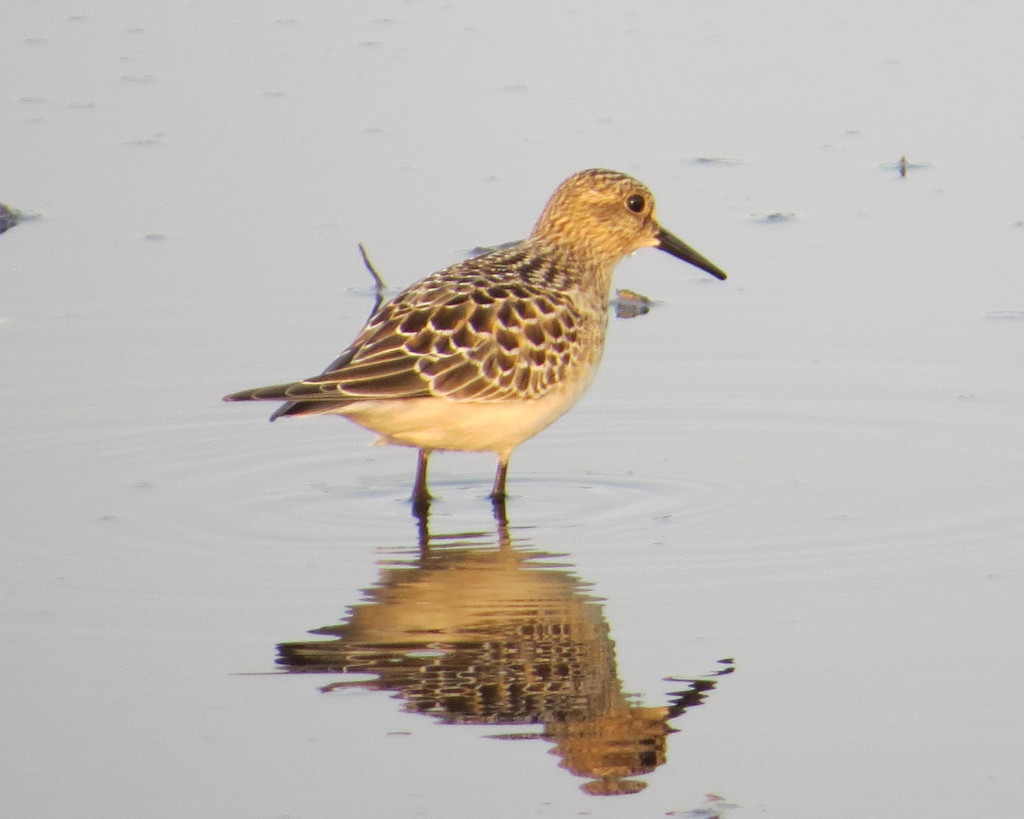
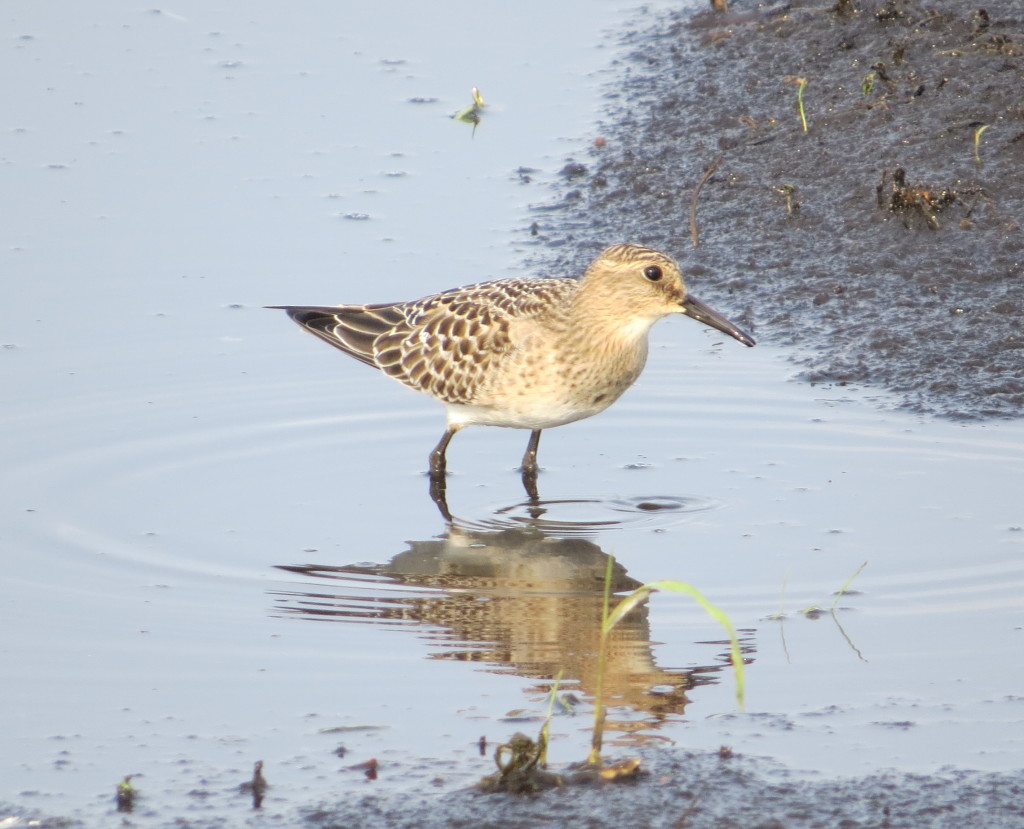 One of the benefits of a having a patch is that, in addition to looking for new birds that have joined the party, you can also keep tabs on the regulars, like the two Stilt Sandpipers that were there day in and day out.
One of the benefits of a having a patch is that, in addition to looking for new birds that have joined the party, you can also keep tabs on the regulars, like the two Stilt Sandpipers that were there day in and day out.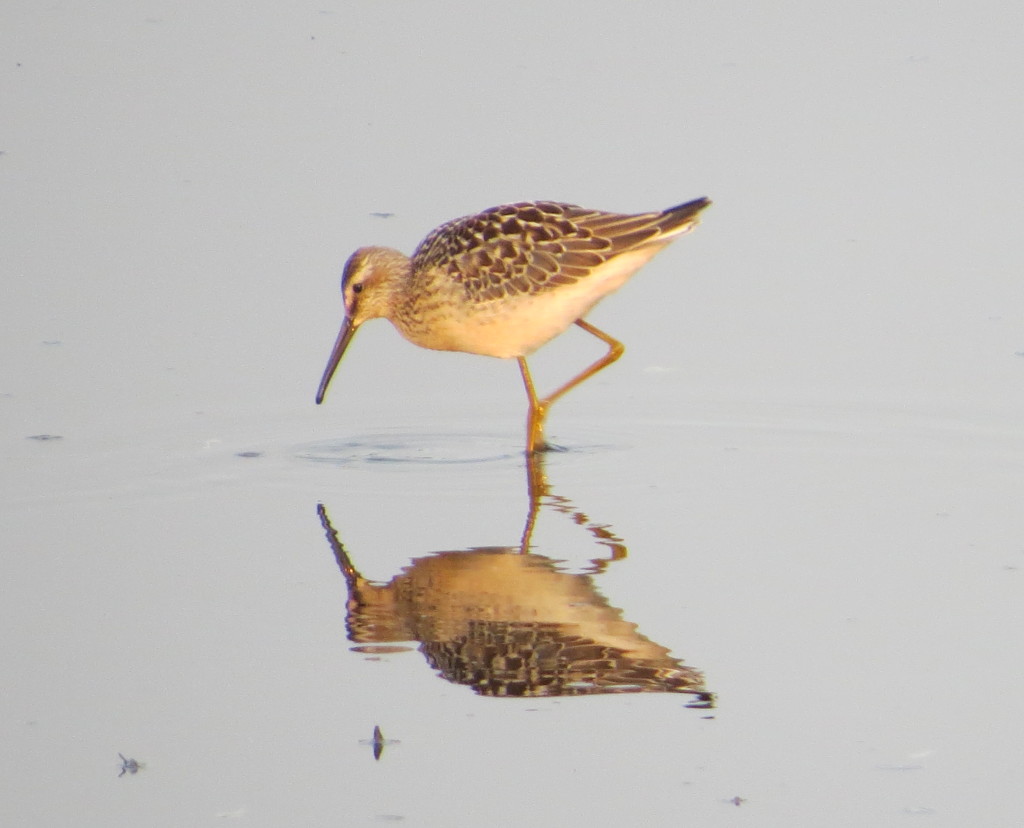
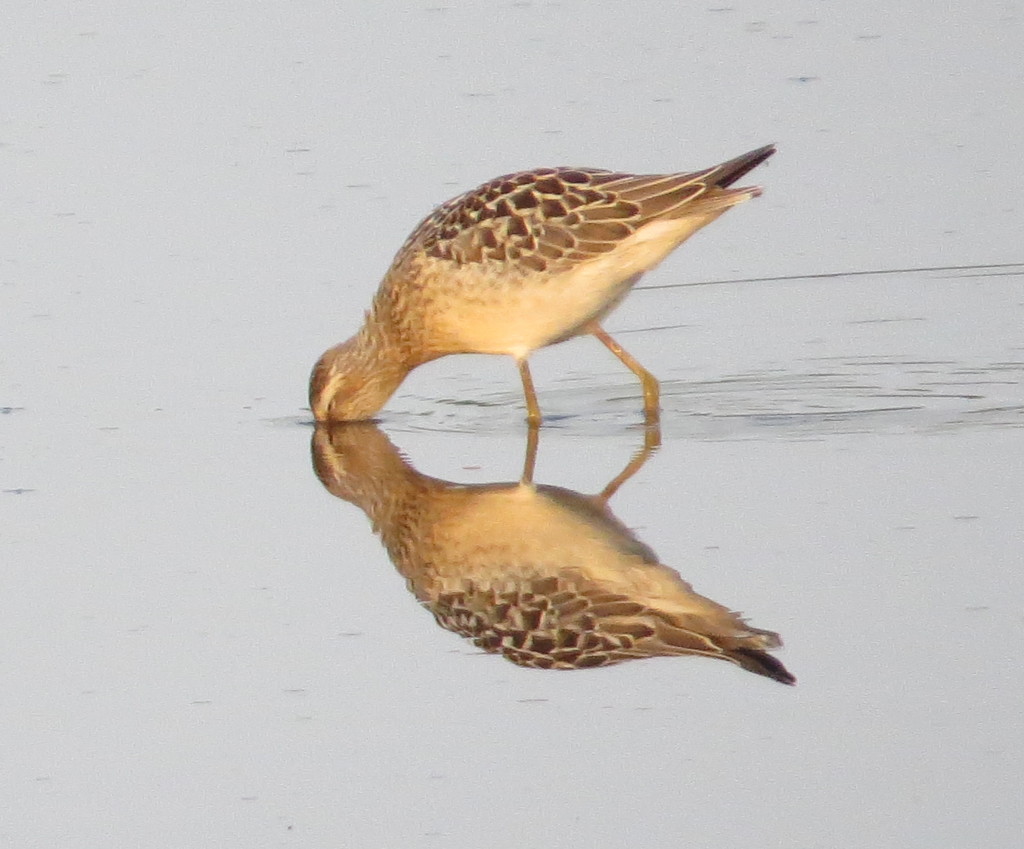
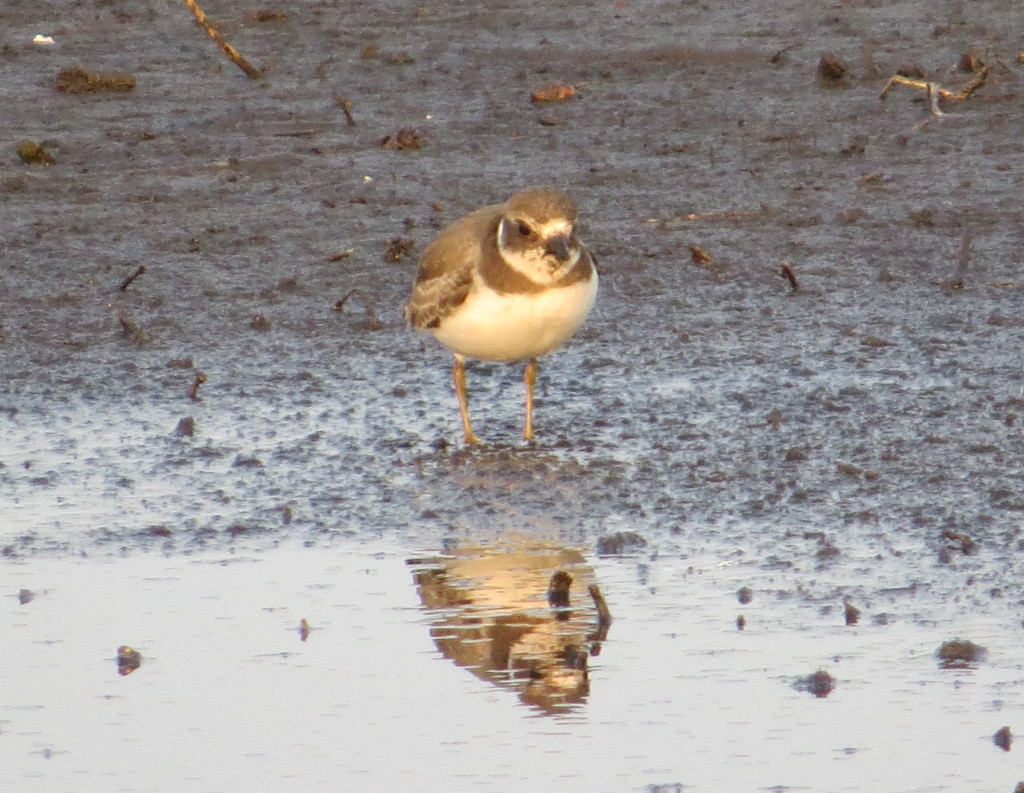
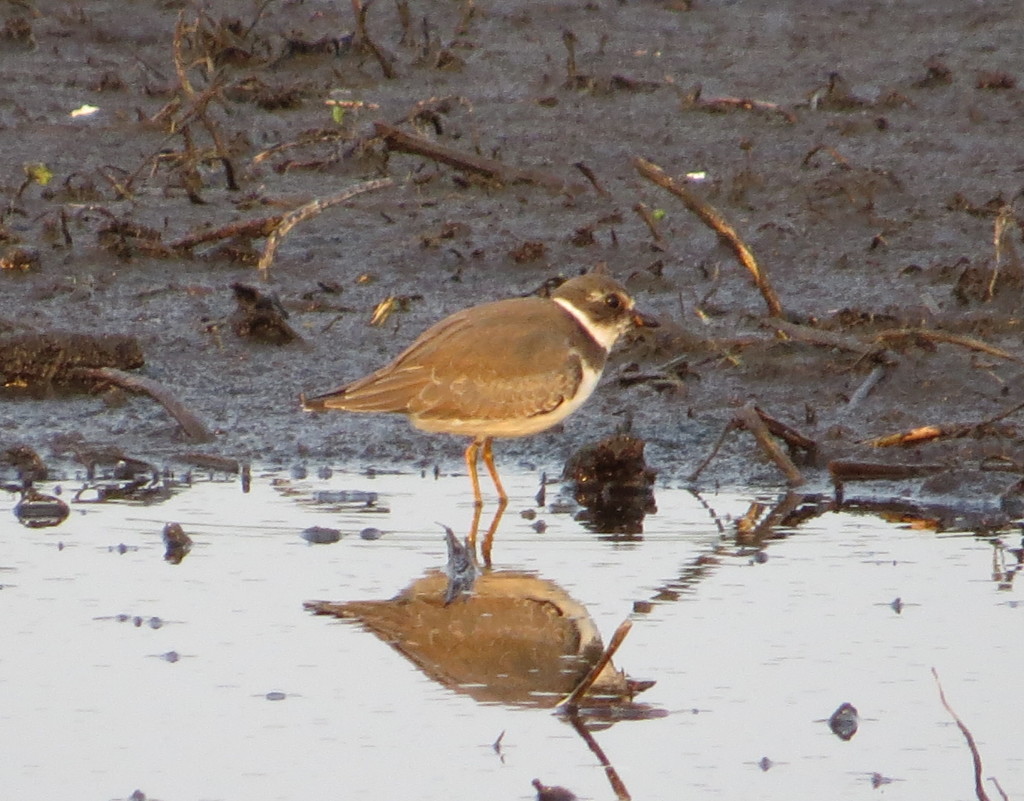
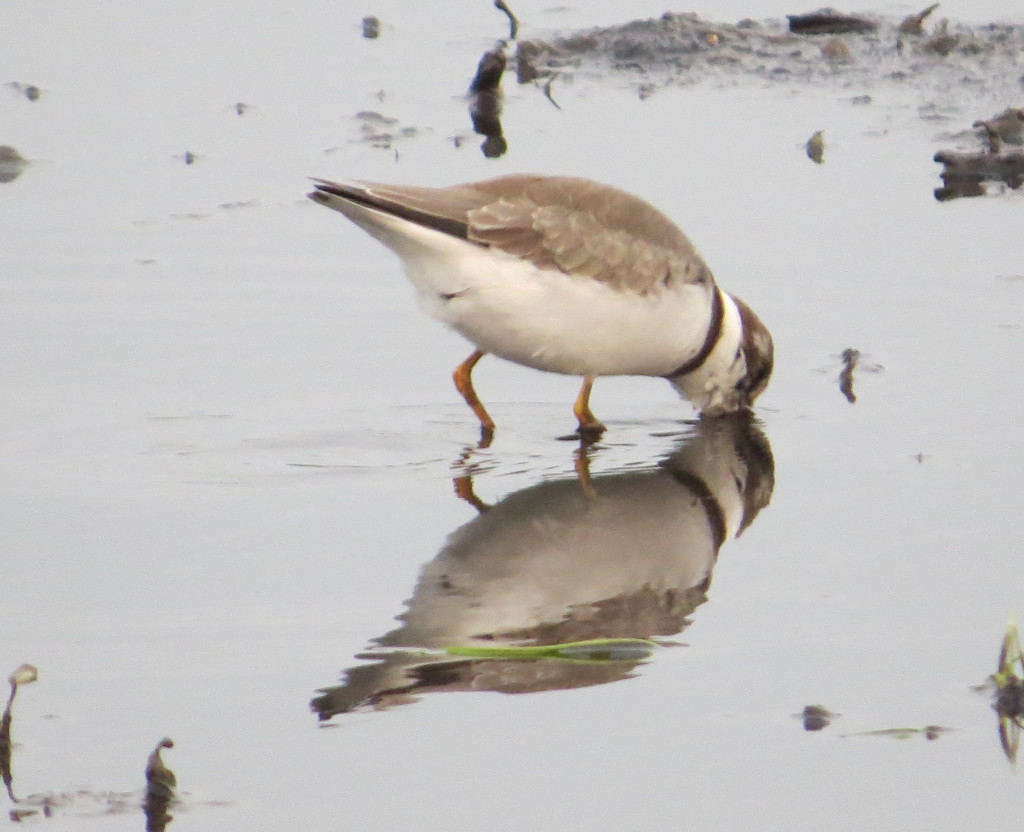 This patch I found turned out to be a great workshop on shorebird identification for myself. I had these birds close (30 feet or less) and in great light when I visited in the morning. I could clearly see subtle differences in coloration, differences in movements and behaviors, and relative size comparisons to other shorebirds. Even the ubiquitous Killdeer would sometimes do something interesting.
This patch I found turned out to be a great workshop on shorebird identification for myself. I had these birds close (30 feet or less) and in great light when I visited in the morning. I could clearly see subtle differences in coloration, differences in movements and behaviors, and relative size comparisons to other shorebirds. Even the ubiquitous Killdeer would sometimes do something interesting.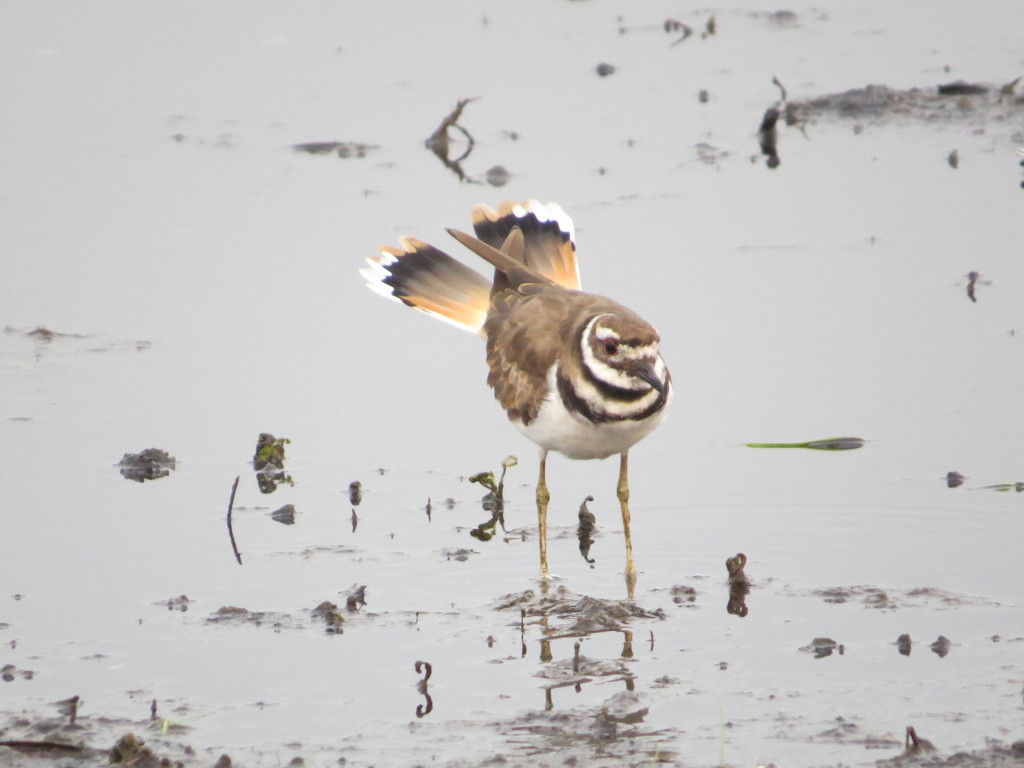
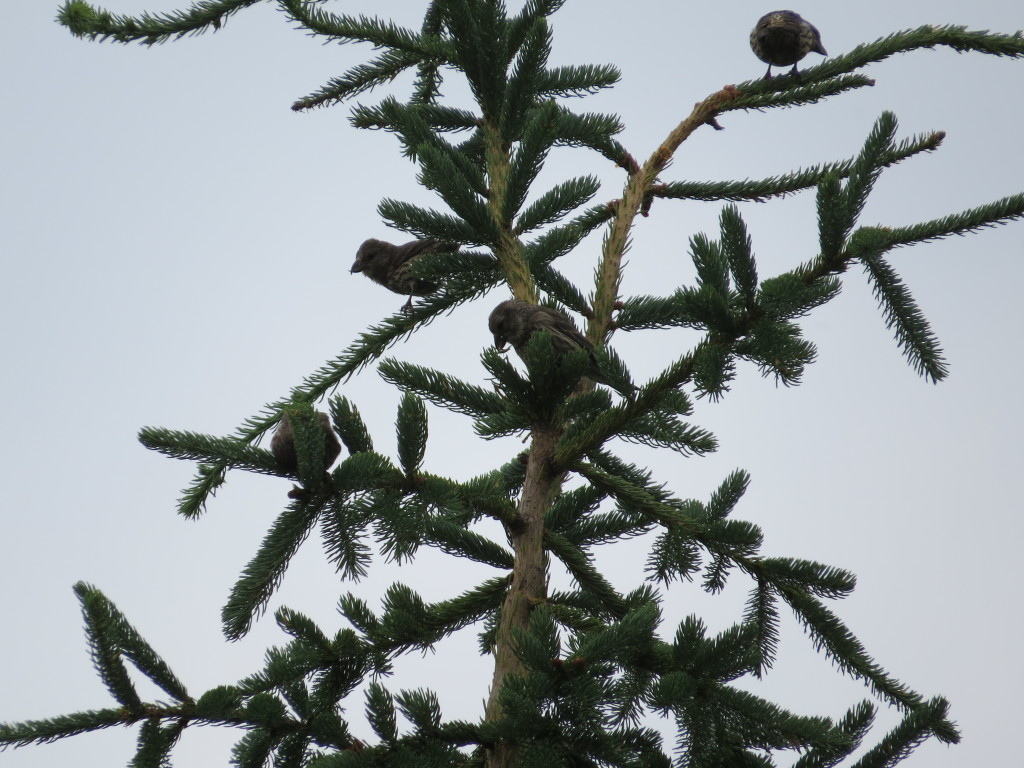
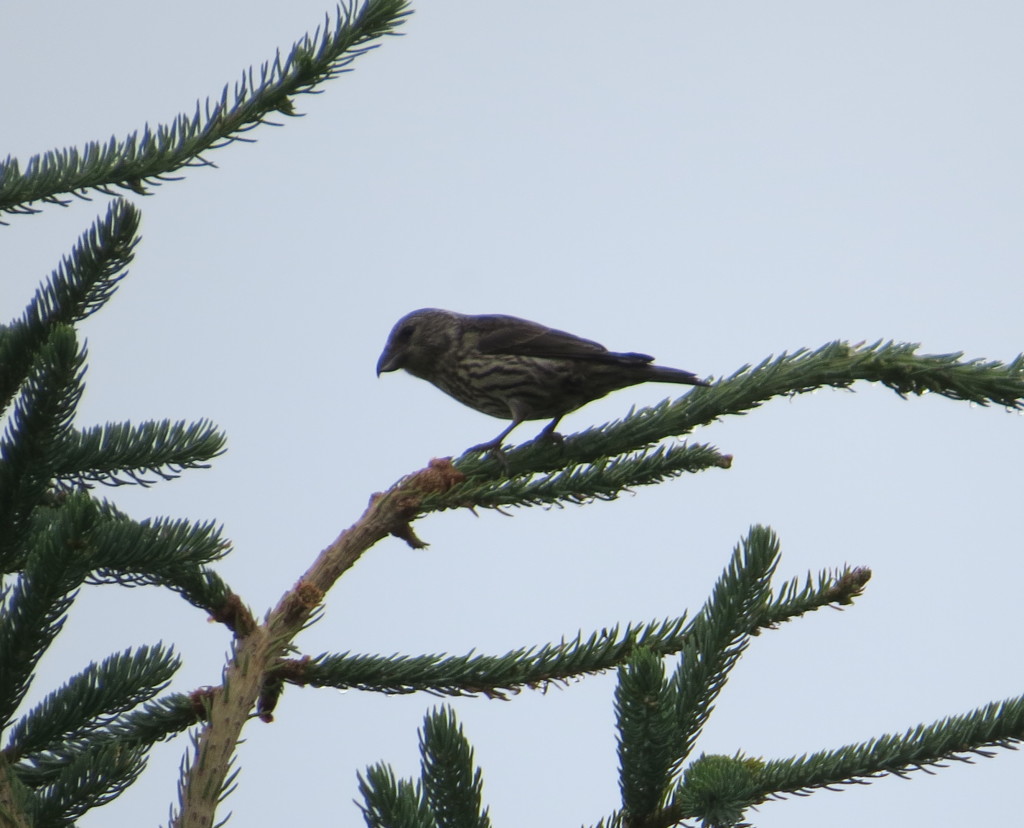
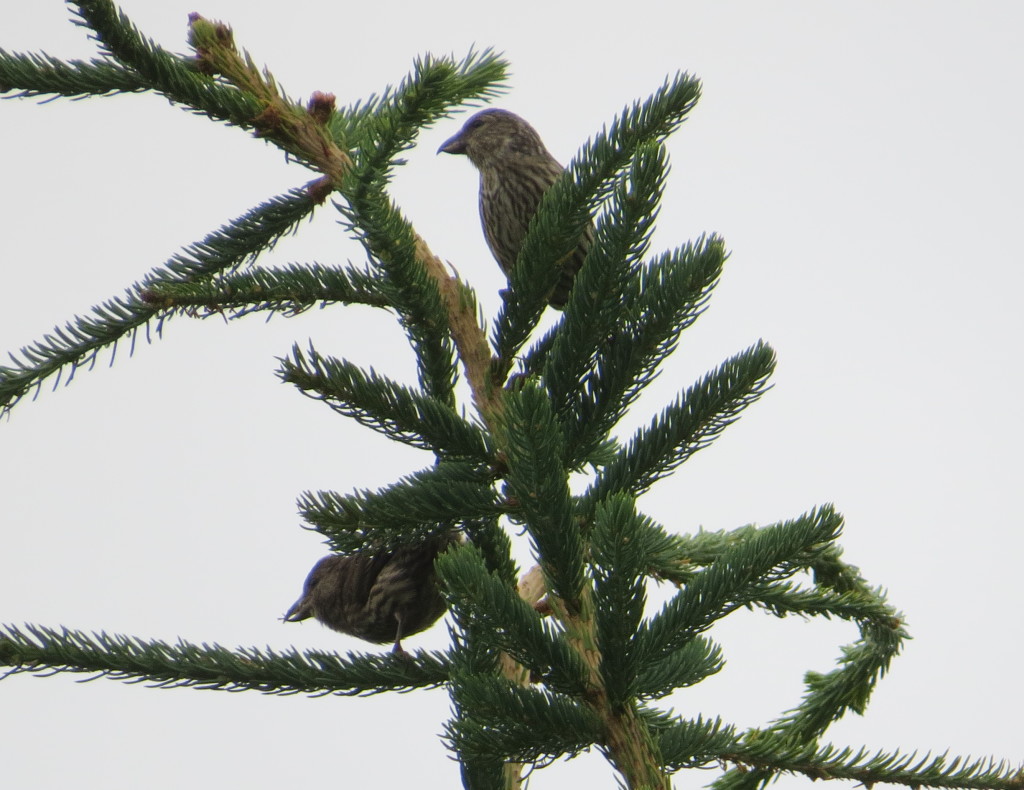
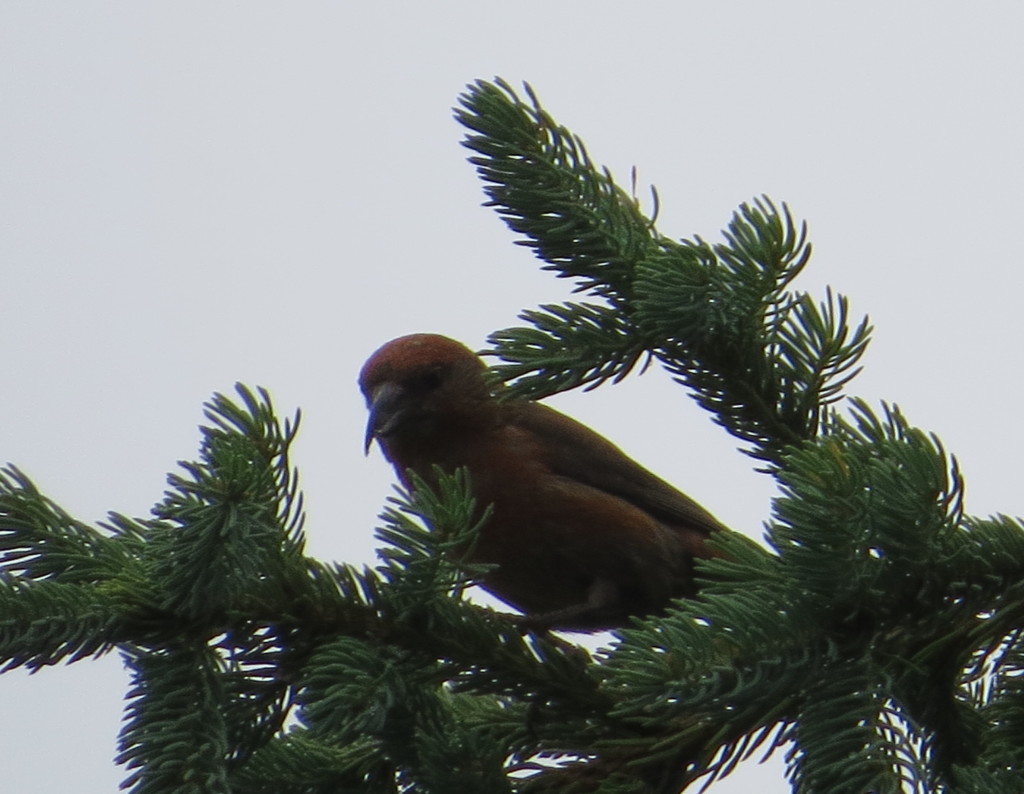 Check out this sequence. Looks tasty…
Check out this sequence. Looks tasty…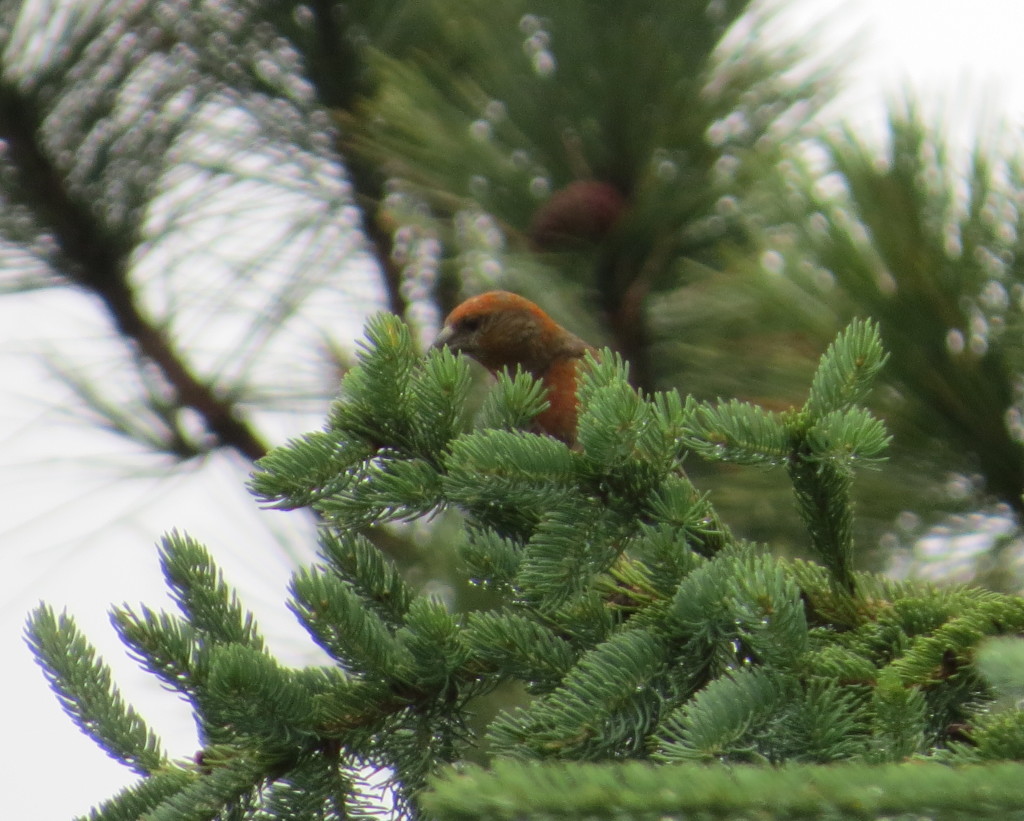 A little snip and…
A little snip and…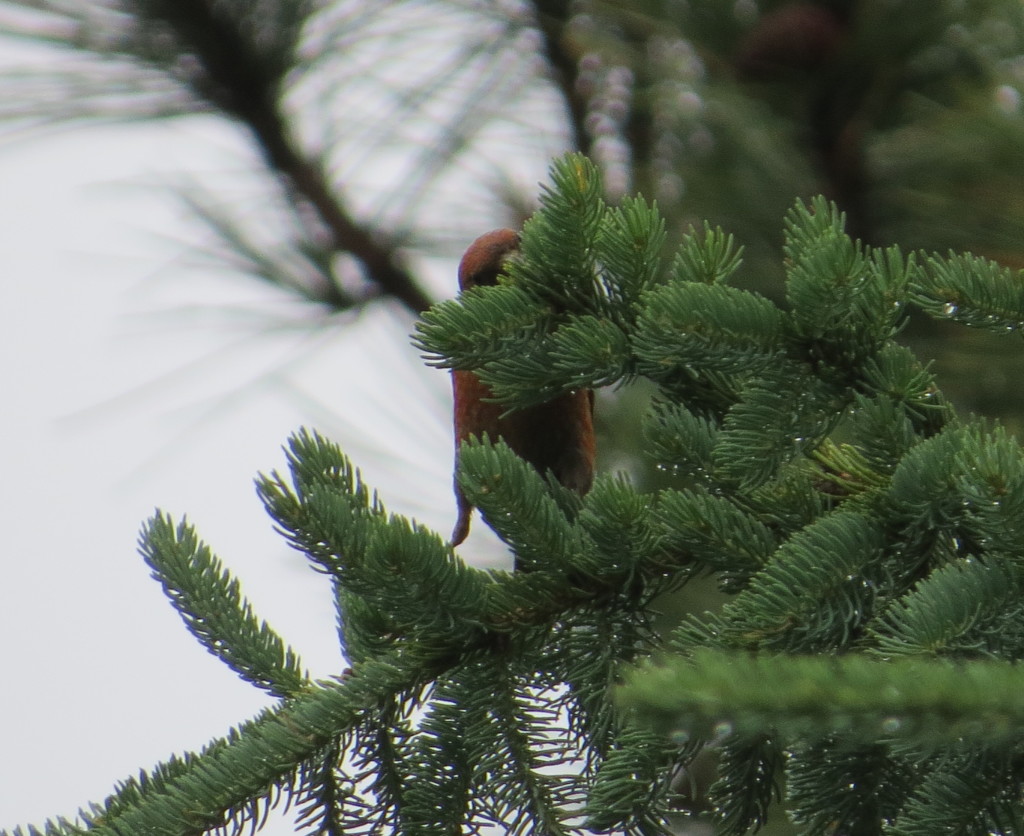 Voilà!
Voilà!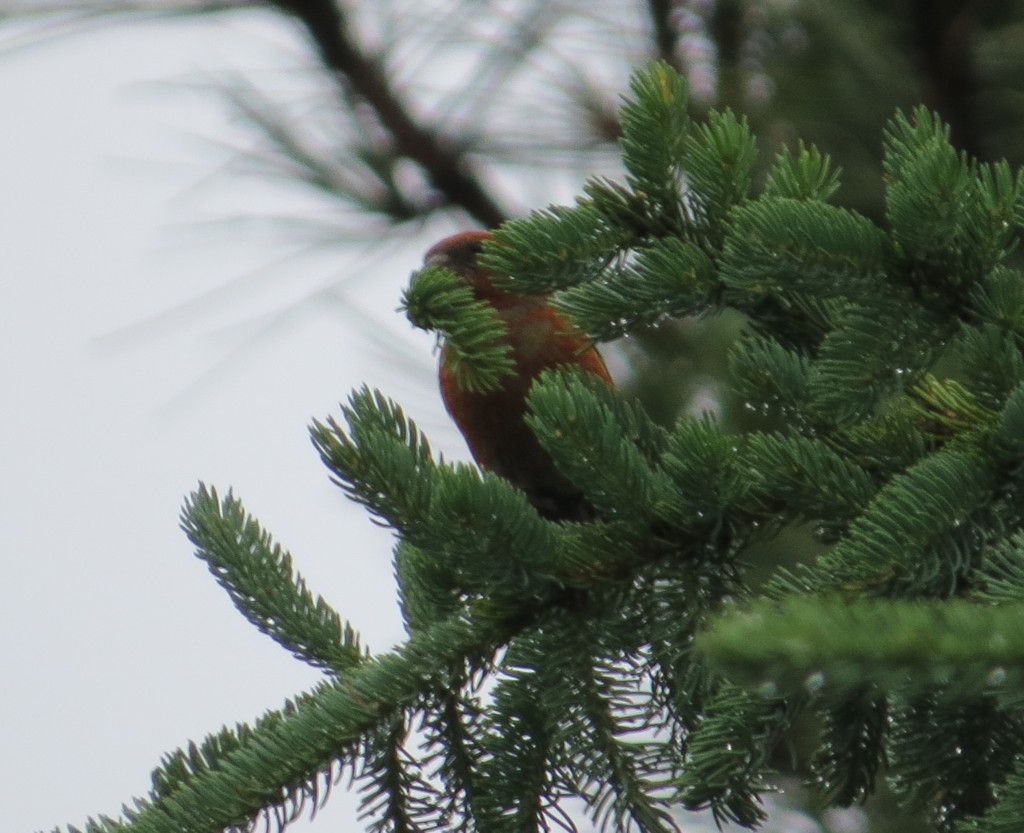 Dad and Evan did get out to see the birds. Evan saw the flock and said, “Yep, I see them,” and then went back into the house. As usual, I wanted good looks and good photographs. I was planning to keep working until I got some I was happy with, but poof! The nomads took off for their next stop on their life’s journey never to be seen by us again.
Dad and Evan did get out to see the birds. Evan saw the flock and said, “Yep, I see them,” and then went back into the house. As usual, I wanted good looks and good photographs. I was planning to keep working until I got some I was happy with, but poof! The nomads took off for their next stop on their life’s journey never to be seen by us again. 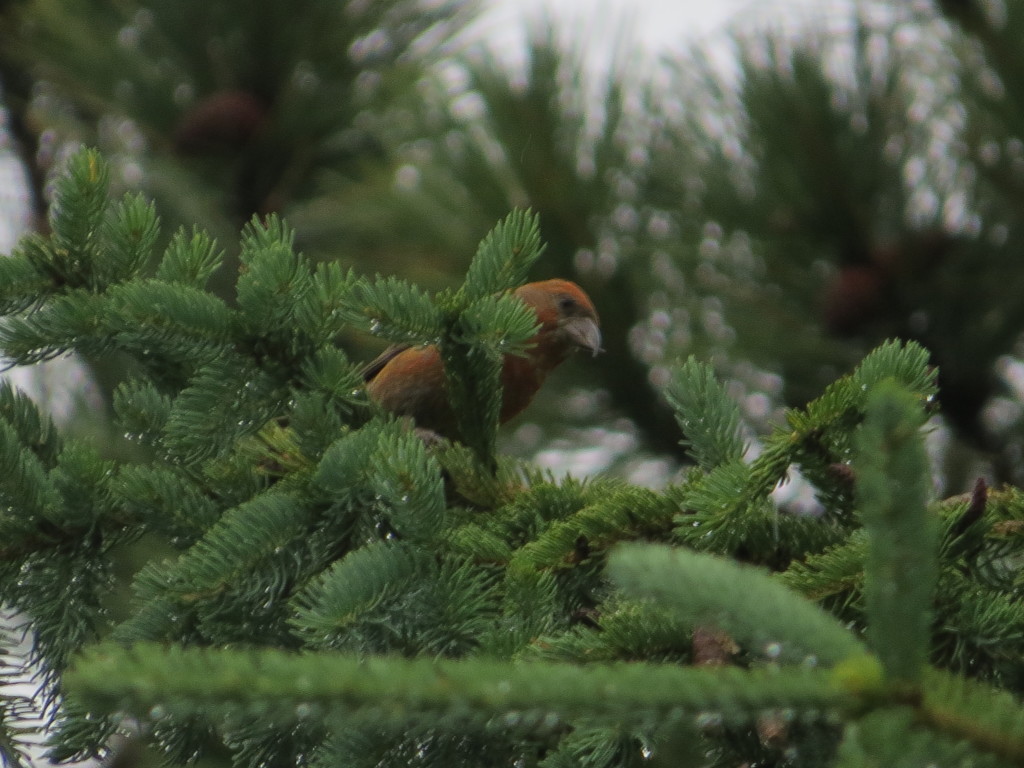 What a thrill it was to get this life bird. Each new life bird now is especially fun because they are such good birds at this point proven by the fact that we still haven’t seen some of them after several years of birding. Red Crossbills in particular are tough birds to get in Minnesota even though they are year-round residents here. Not only was it a treat to finally see a Red Crossbill, but a three-generation lifer in the YARD is completely unheard of at this stage in the game. I still can’t believe the serendipity of this encounter. Absolutely awesome, absolutely hands-down the best bird of this trip North. A Red Crossbill lifer and a Black-backed Woodpecker lifer seen within the same week at this time of year–unbelievable. I thought I was going to have to wait for next winter to take another crack at those two.
What a thrill it was to get this life bird. Each new life bird now is especially fun because they are such good birds at this point proven by the fact that we still haven’t seen some of them after several years of birding. Red Crossbills in particular are tough birds to get in Minnesota even though they are year-round residents here. Not only was it a treat to finally see a Red Crossbill, but a three-generation lifer in the YARD is completely unheard of at this stage in the game. I still can’t believe the serendipity of this encounter. Absolutely awesome, absolutely hands-down the best bird of this trip North. A Red Crossbill lifer and a Black-backed Woodpecker lifer seen within the same week at this time of year–unbelievable. I thought I was going to have to wait for next winter to take another crack at those two.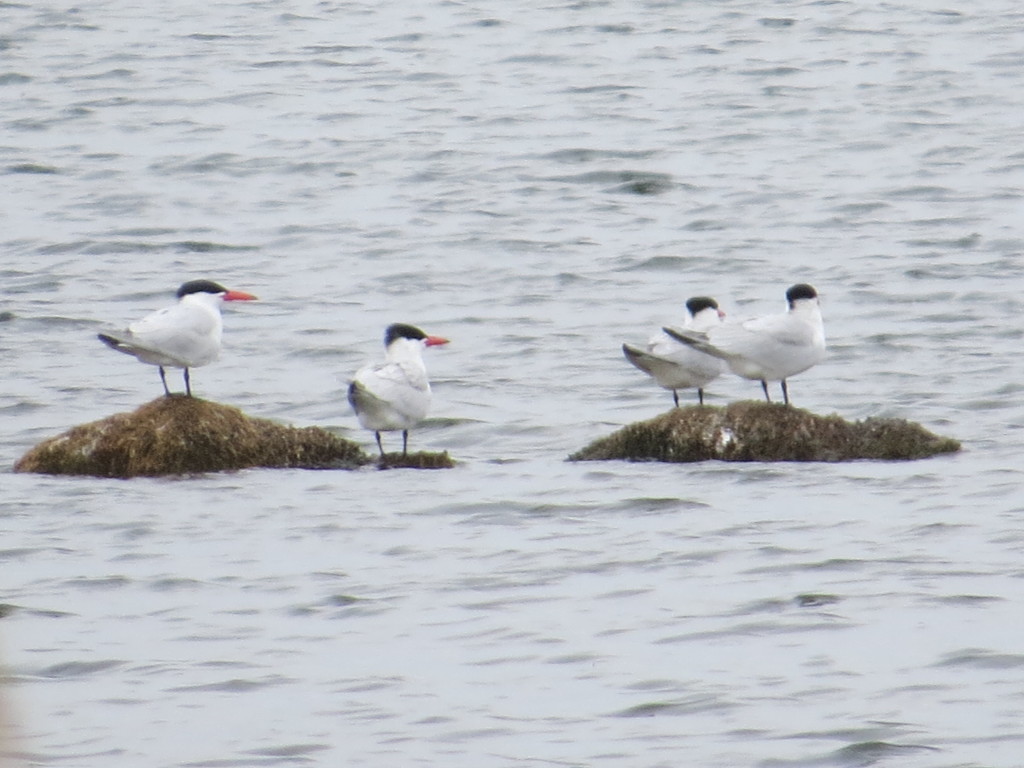
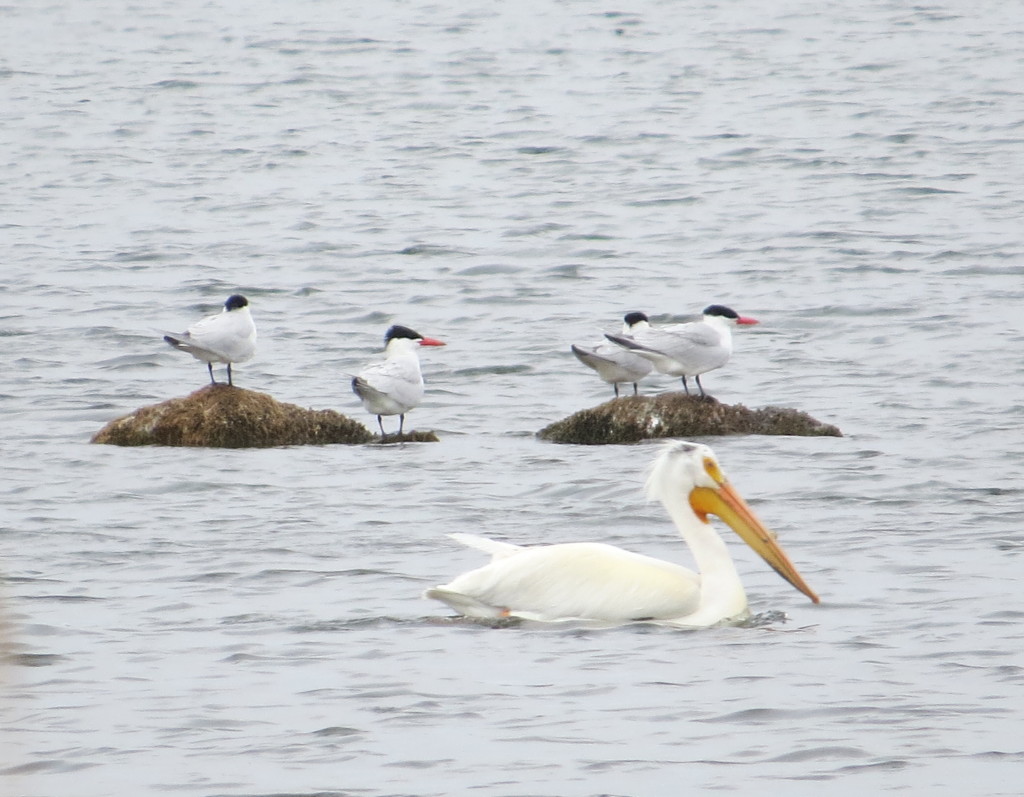
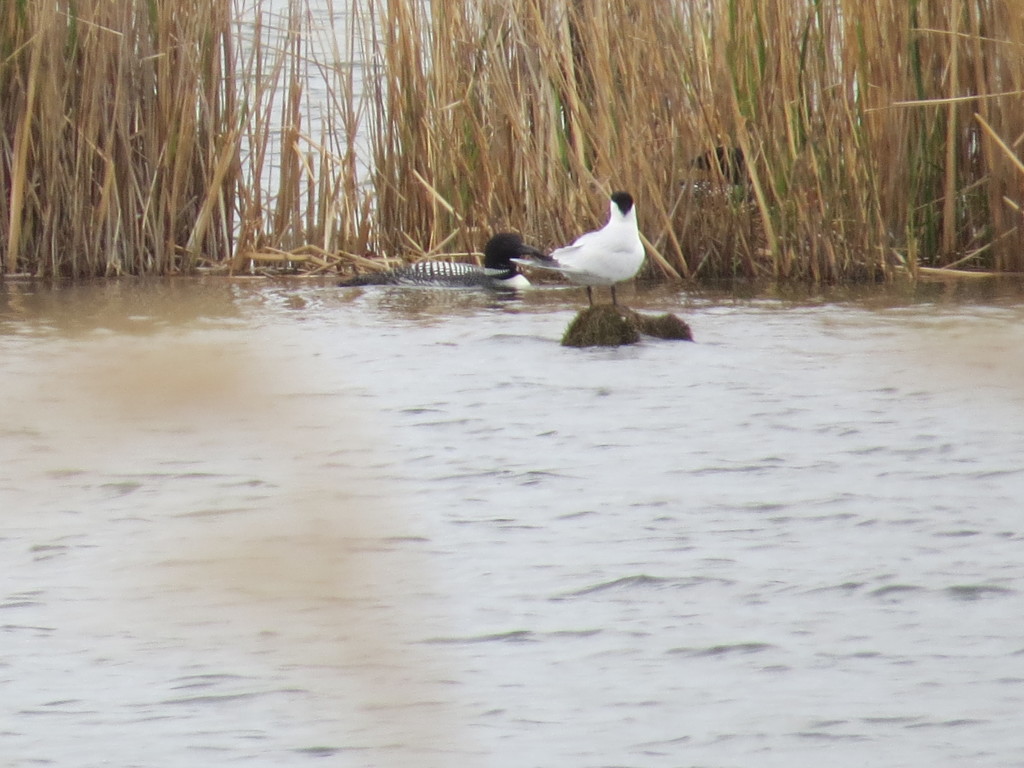
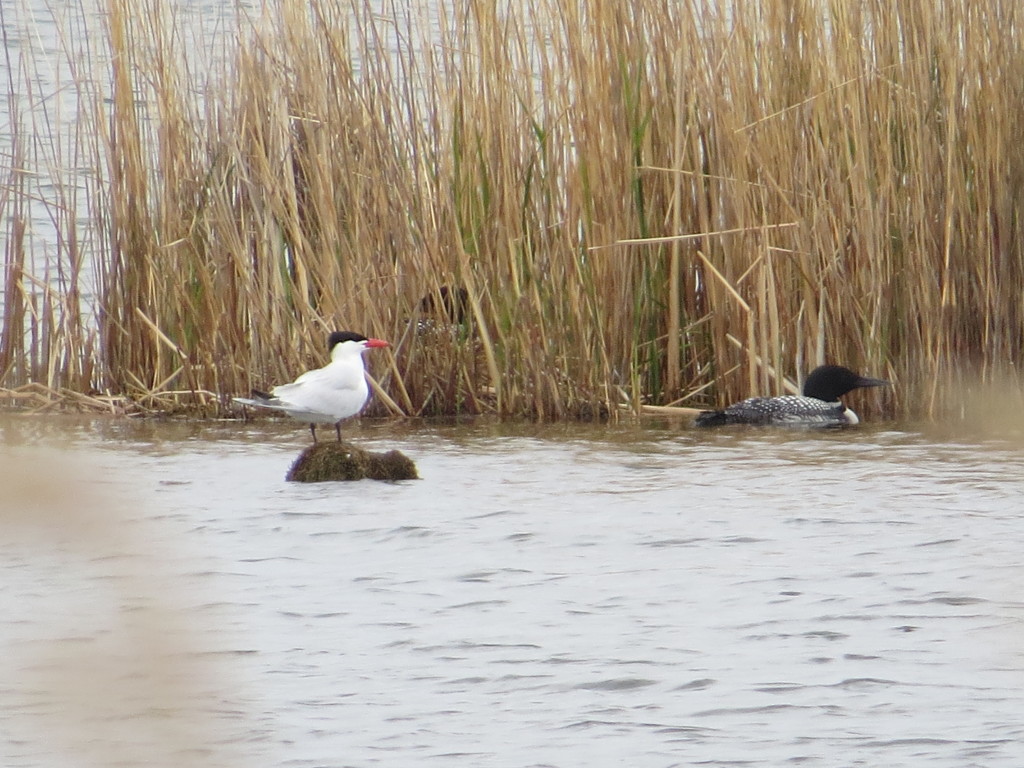
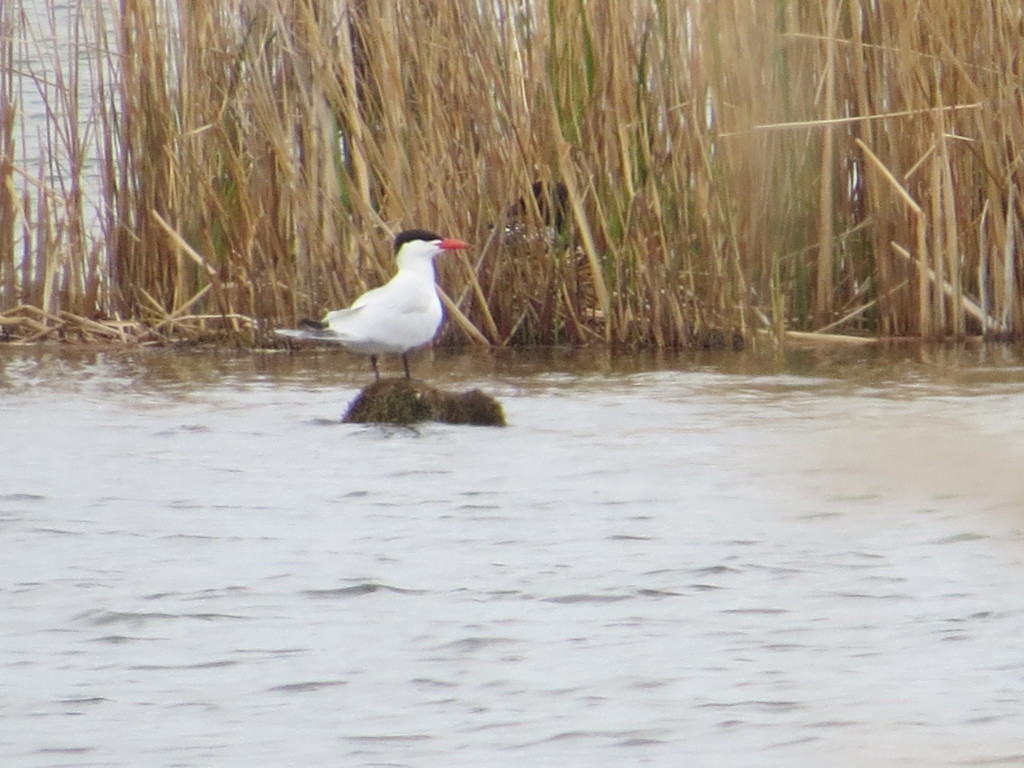
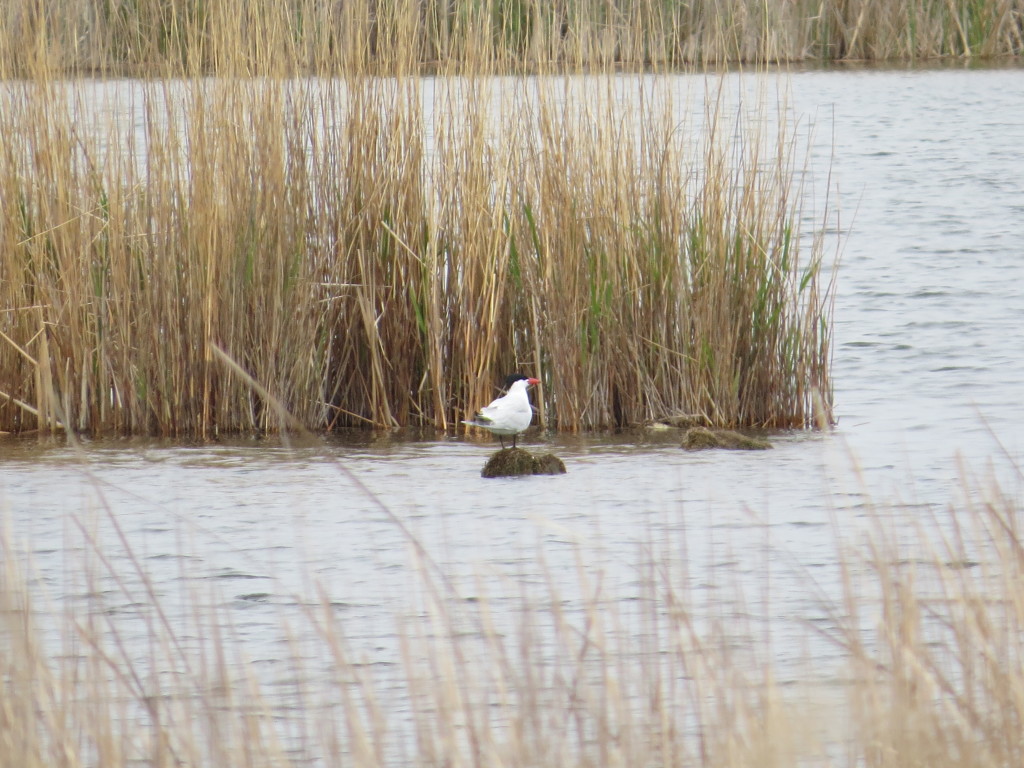
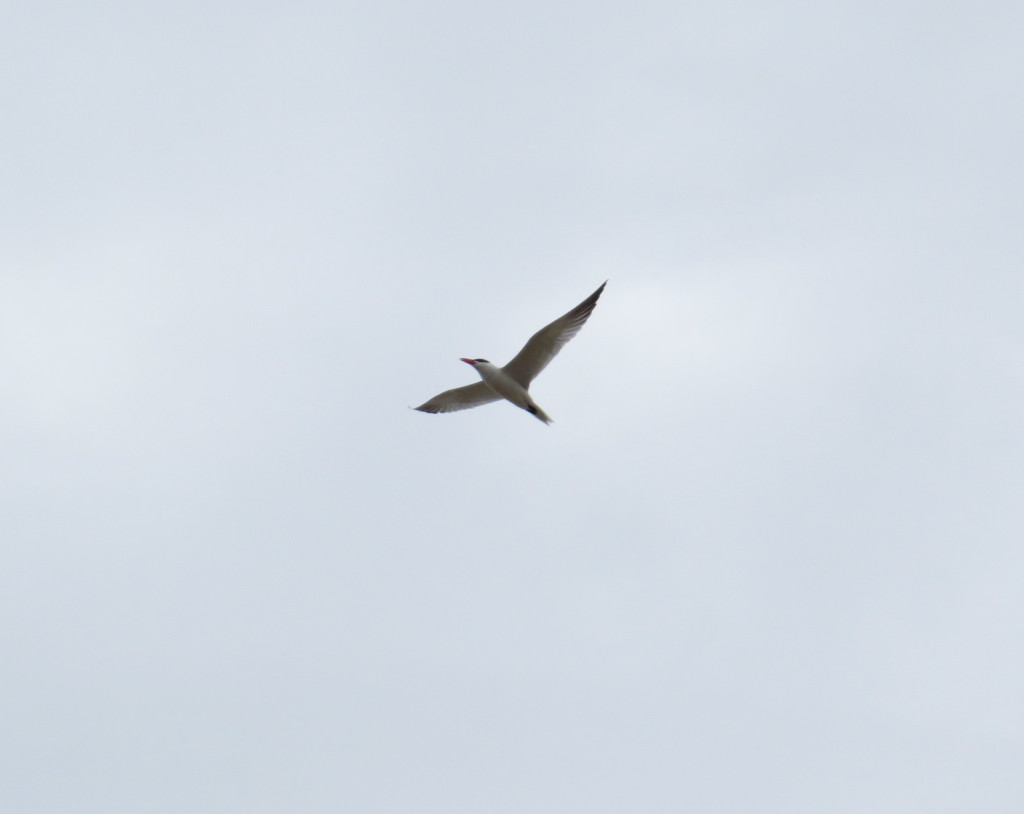
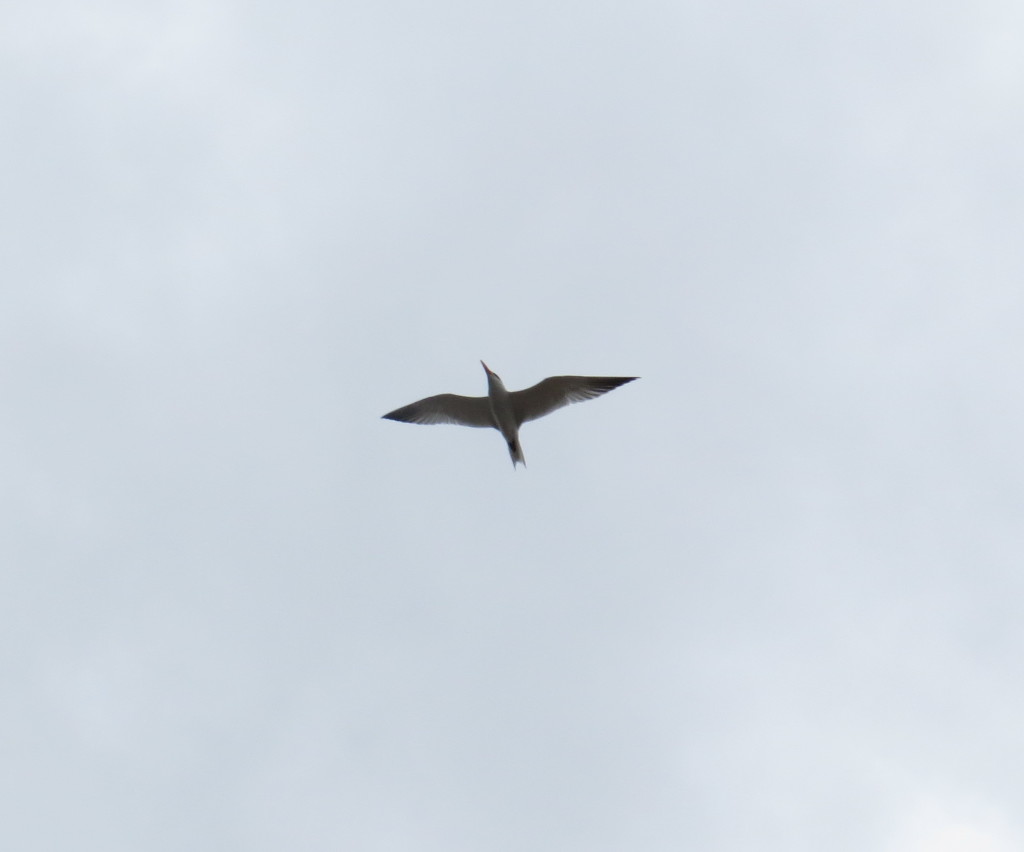
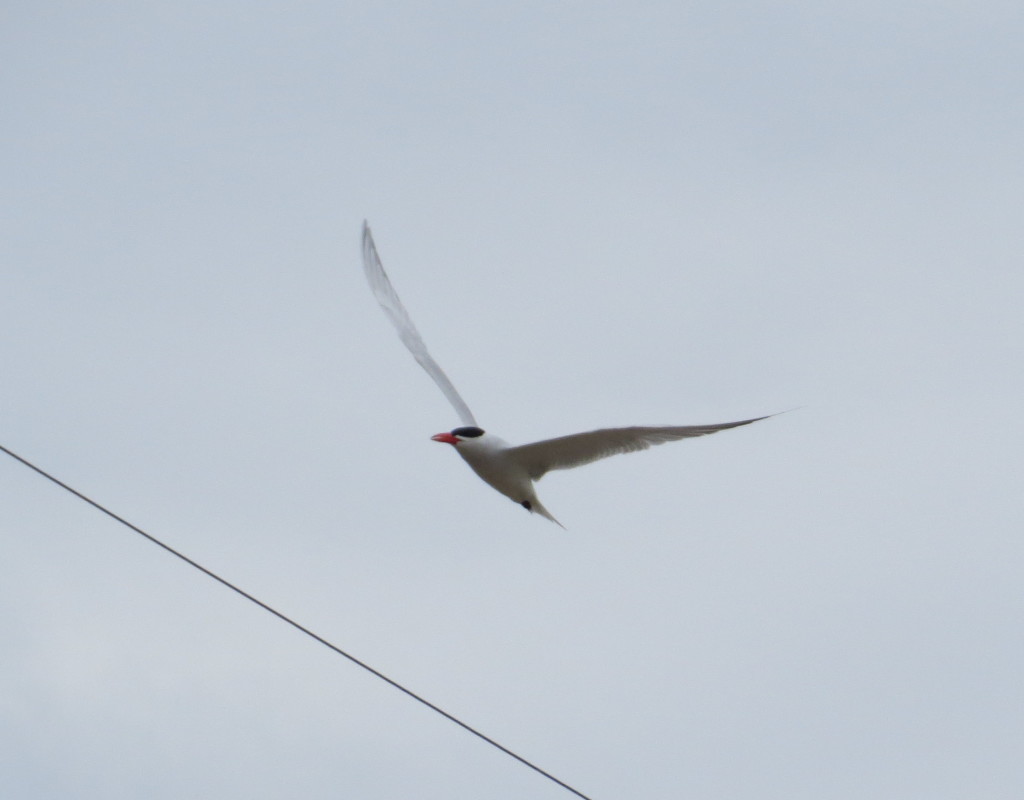
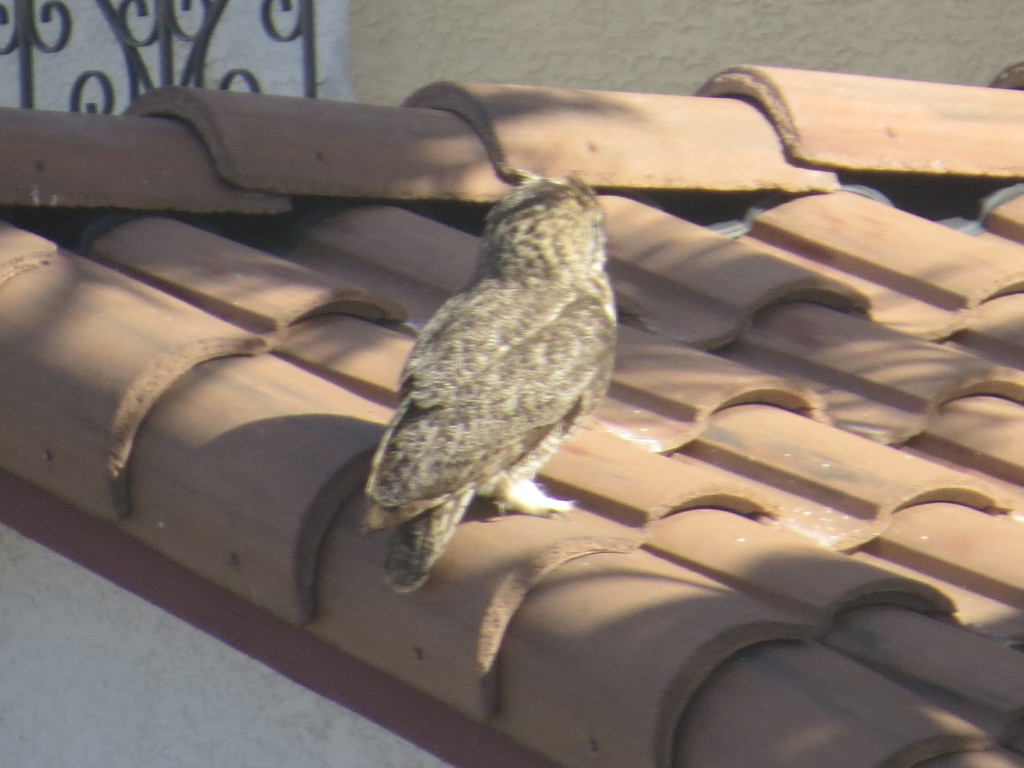
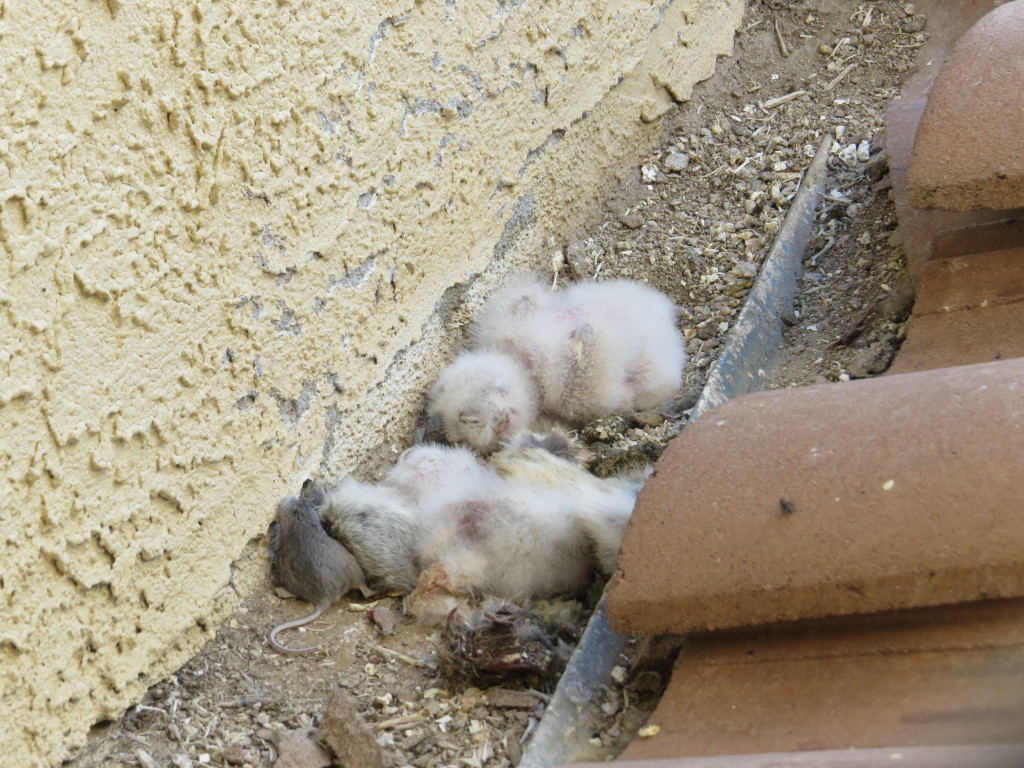
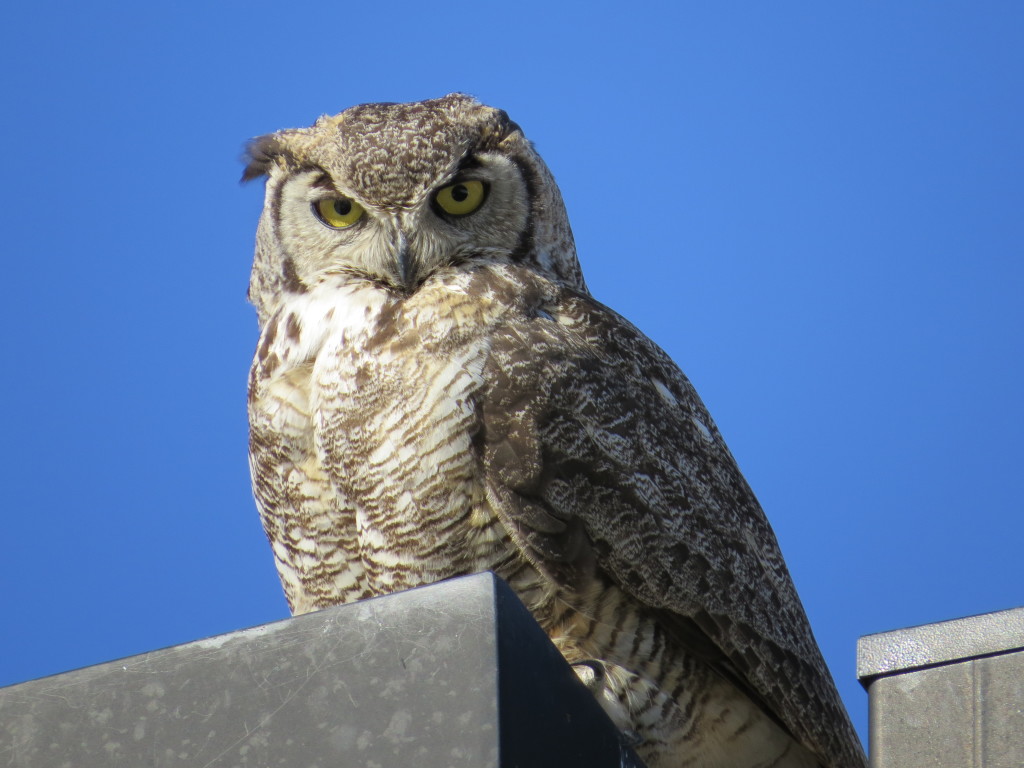 Whenever owls are involved, one should always give credit where credit is due. Here is the discoverer admiring his prize.
Whenever owls are involved, one should always give credit where credit is due. Here is the discoverer admiring his prize.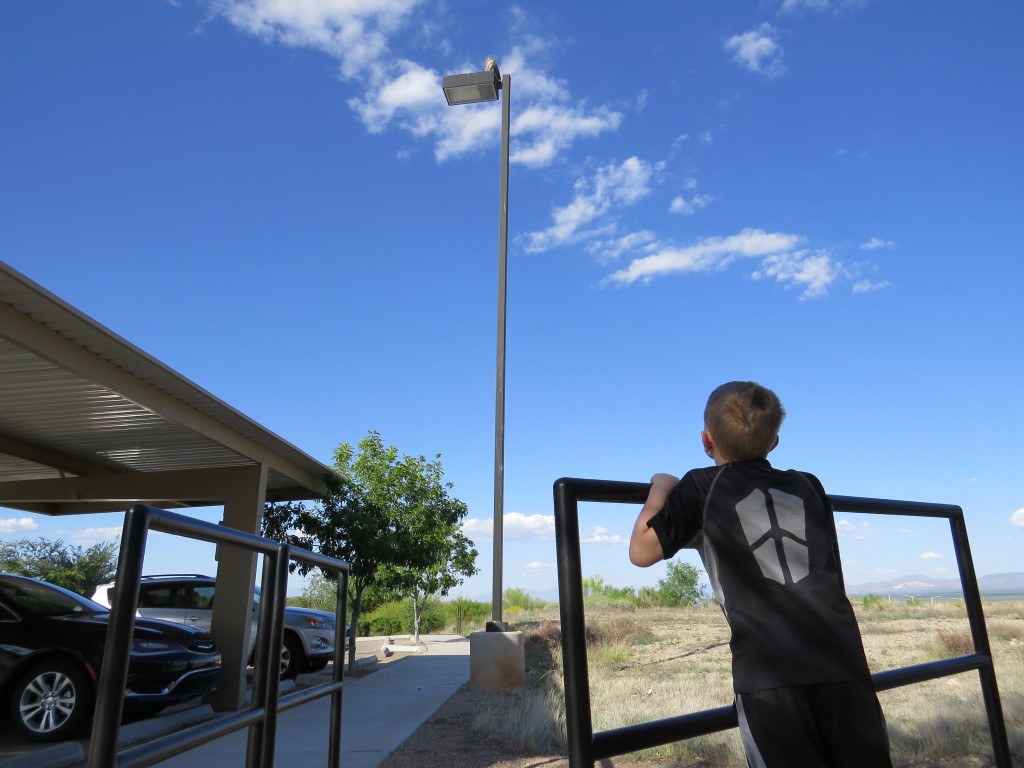
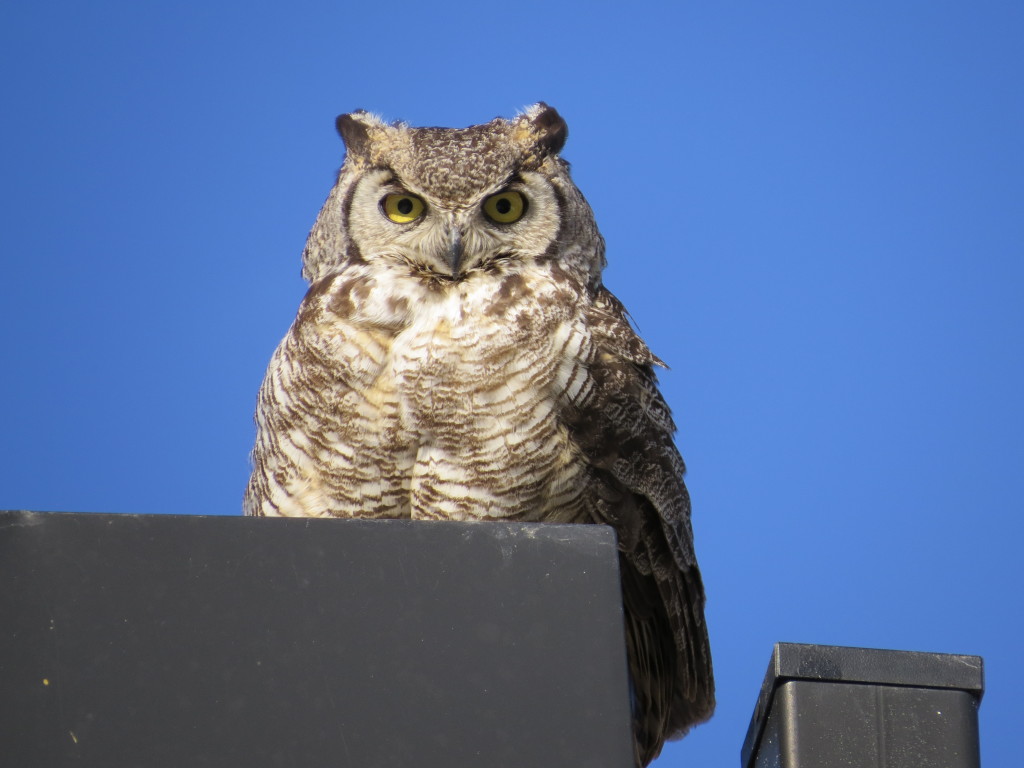
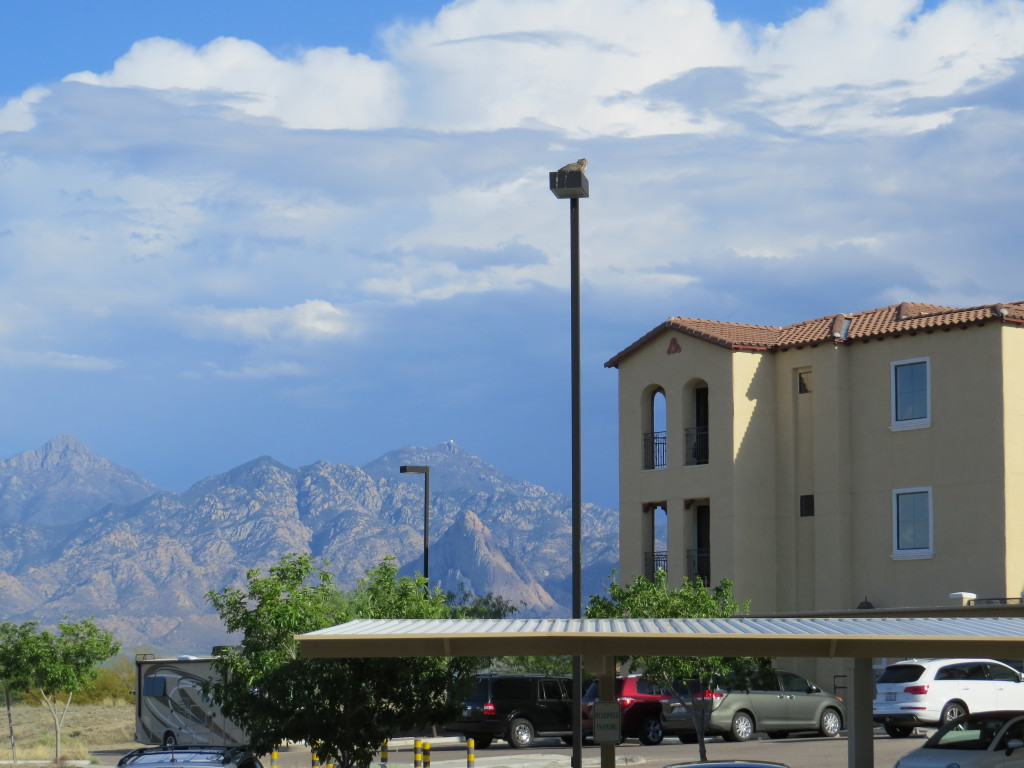
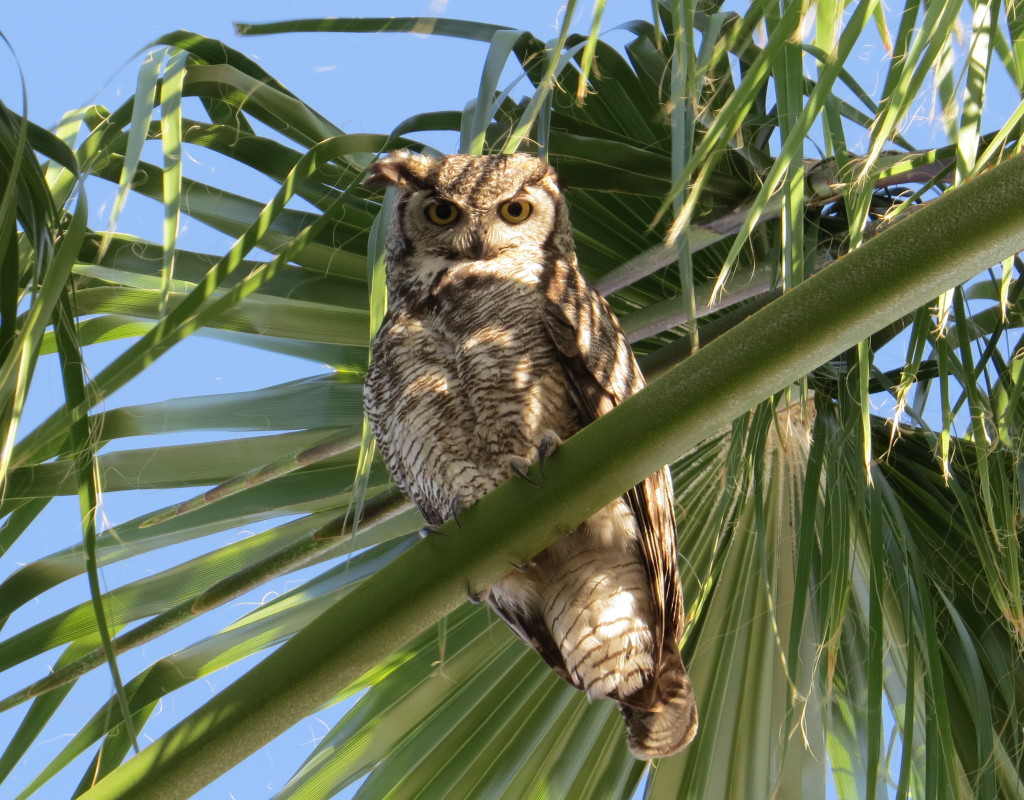
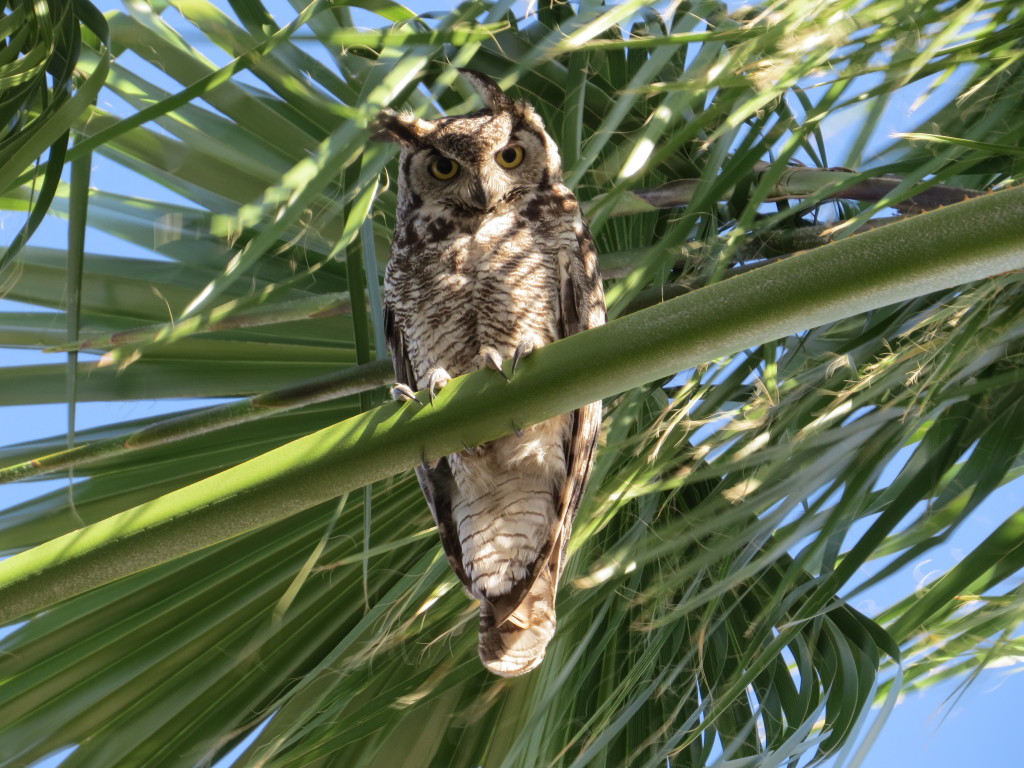 The Great Horned Owl wasn’t the only great bird at the hotel. I managed to find a Black-throated Sparrow, Cactus Wren, and even a lifer Hooded Oriole or three for Evan!
The Great Horned Owl wasn’t the only great bird at the hotel. I managed to find a Black-throated Sparrow, Cactus Wren, and even a lifer Hooded Oriole or three for Evan!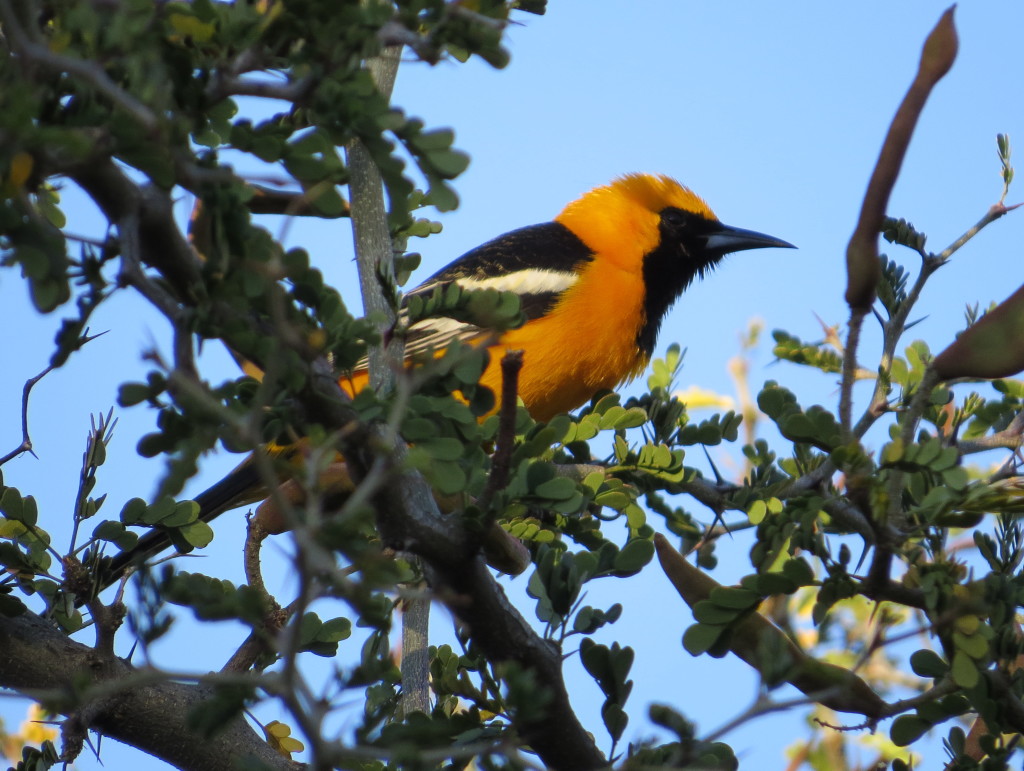
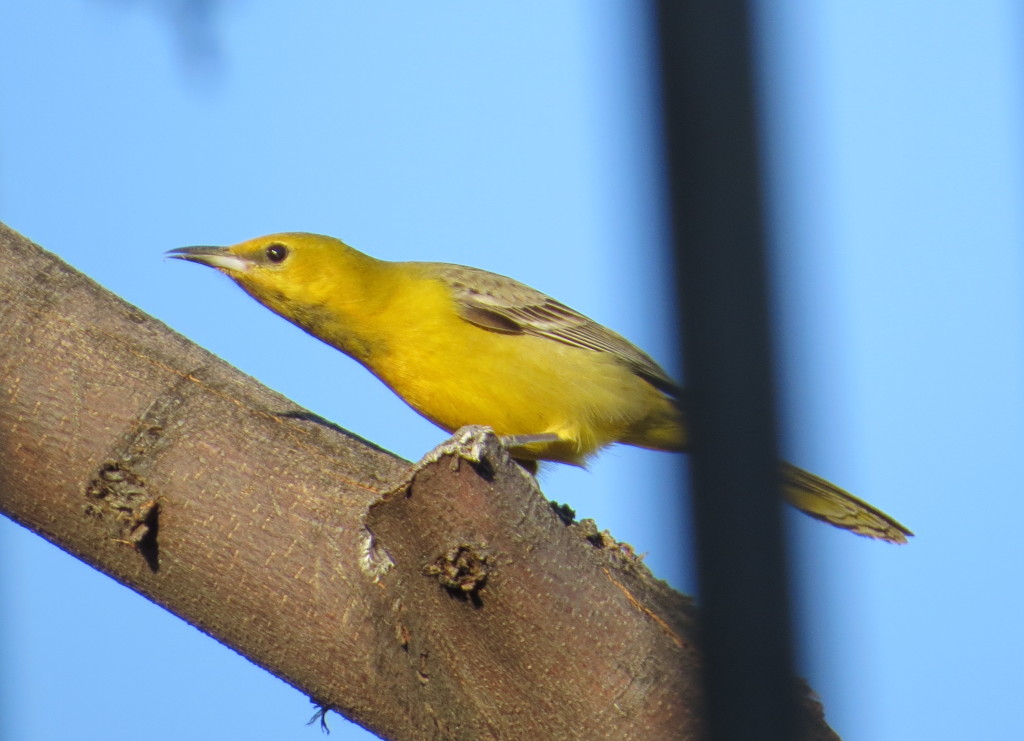
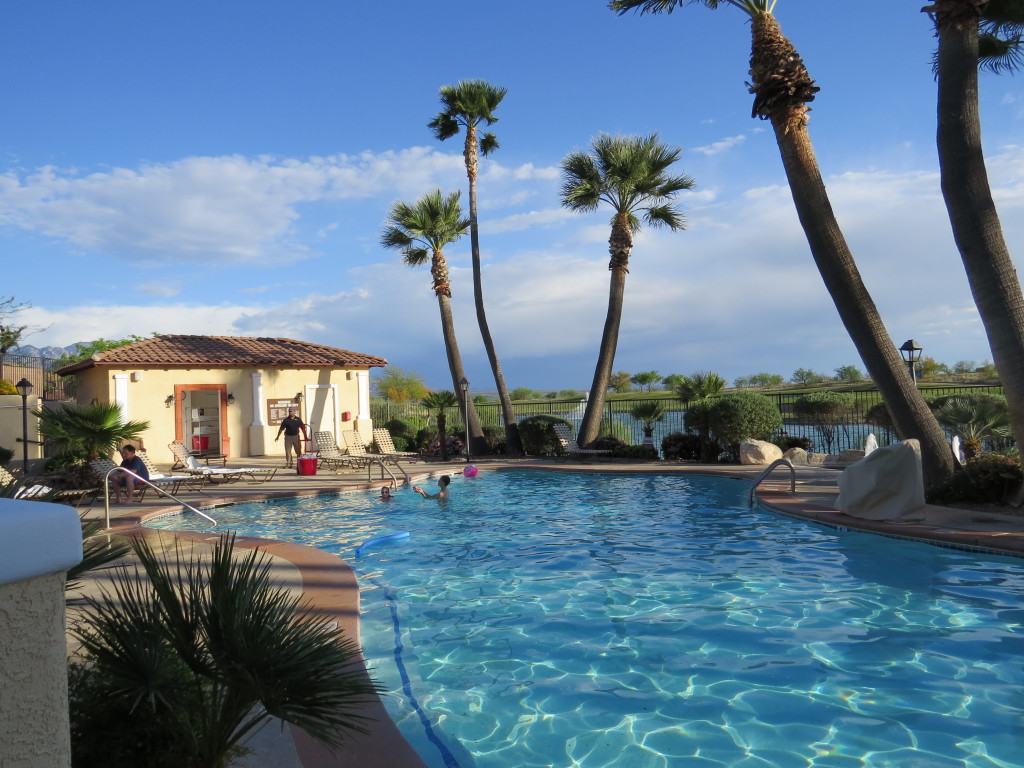
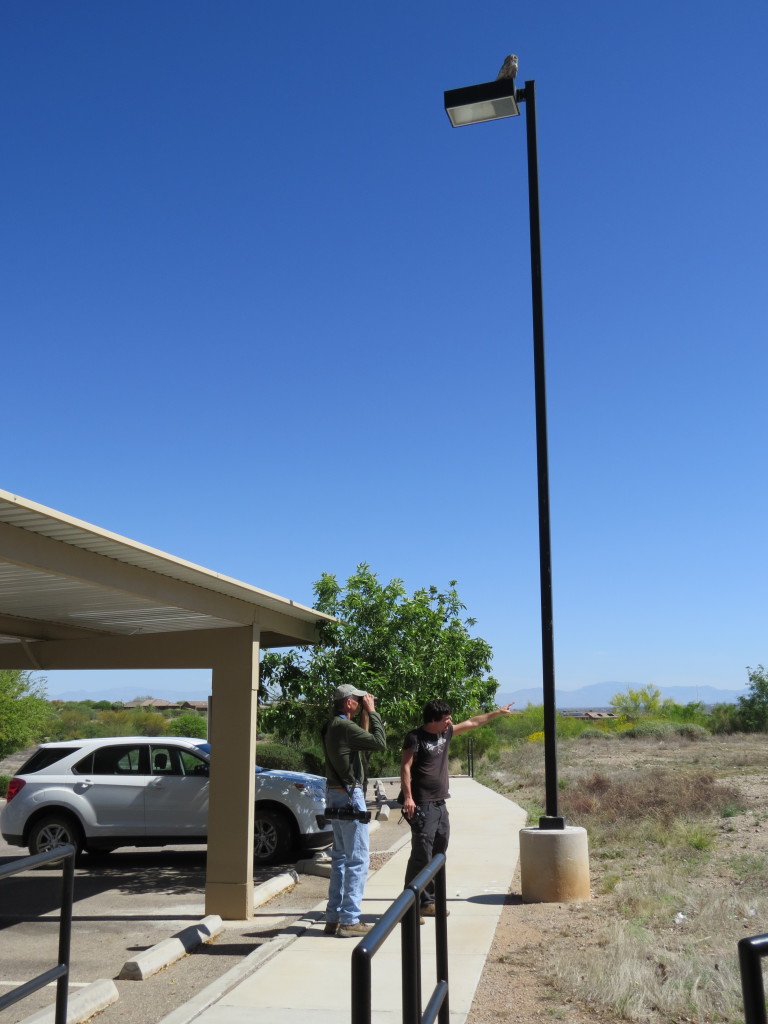
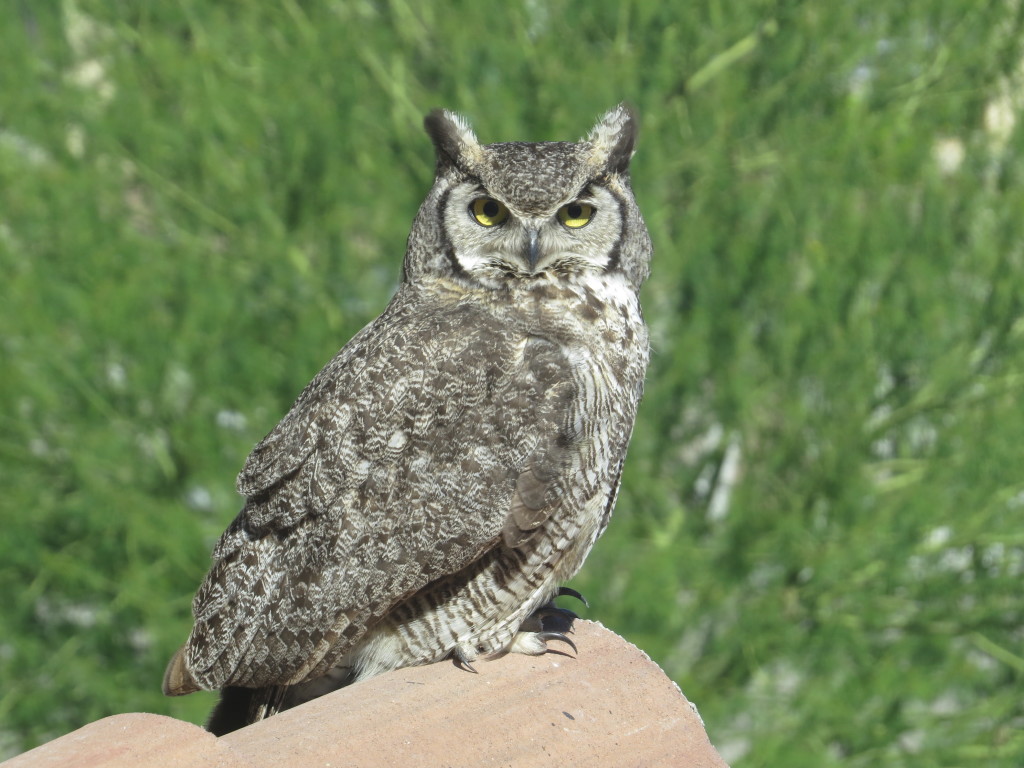
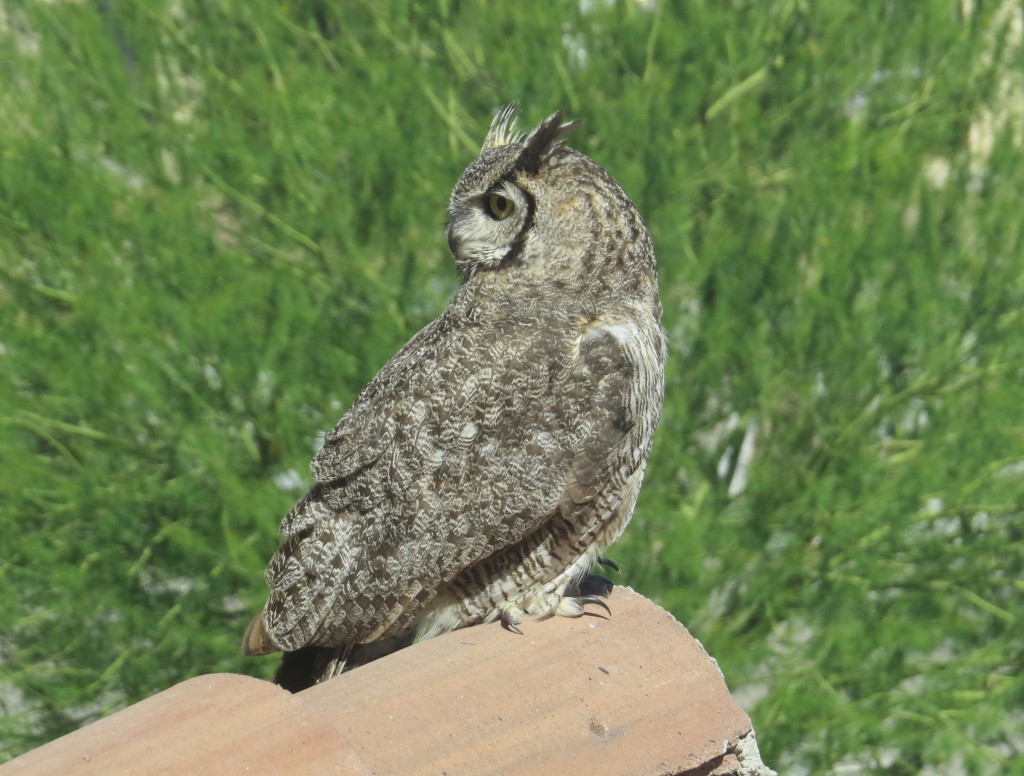 Tommy and Gordon actually contributed to the owl discovery as they found the male tucked up into a palm tree! We now had two adults in view!
Tommy and Gordon actually contributed to the owl discovery as they found the male tucked up into a palm tree! We now had two adults in view!